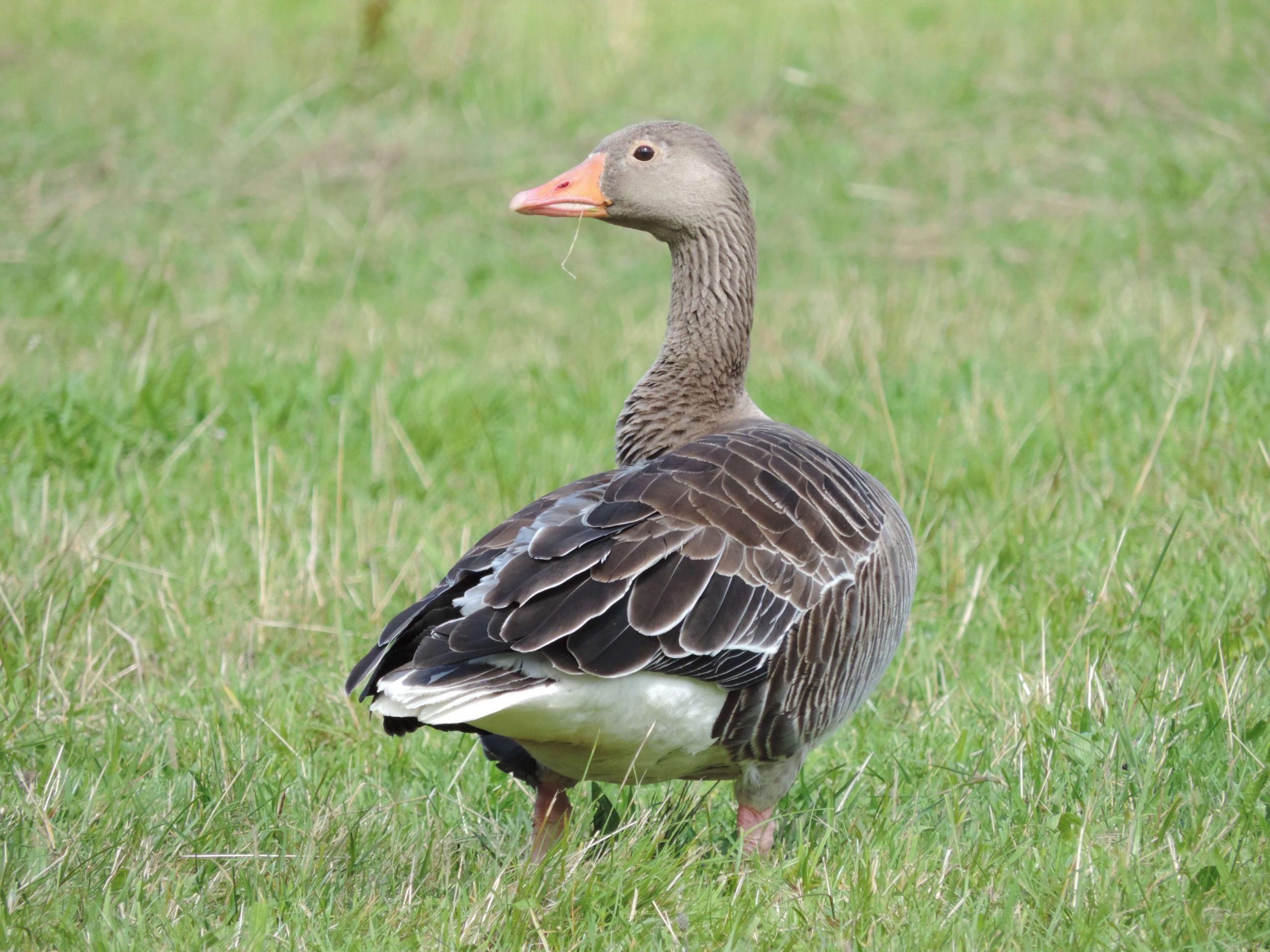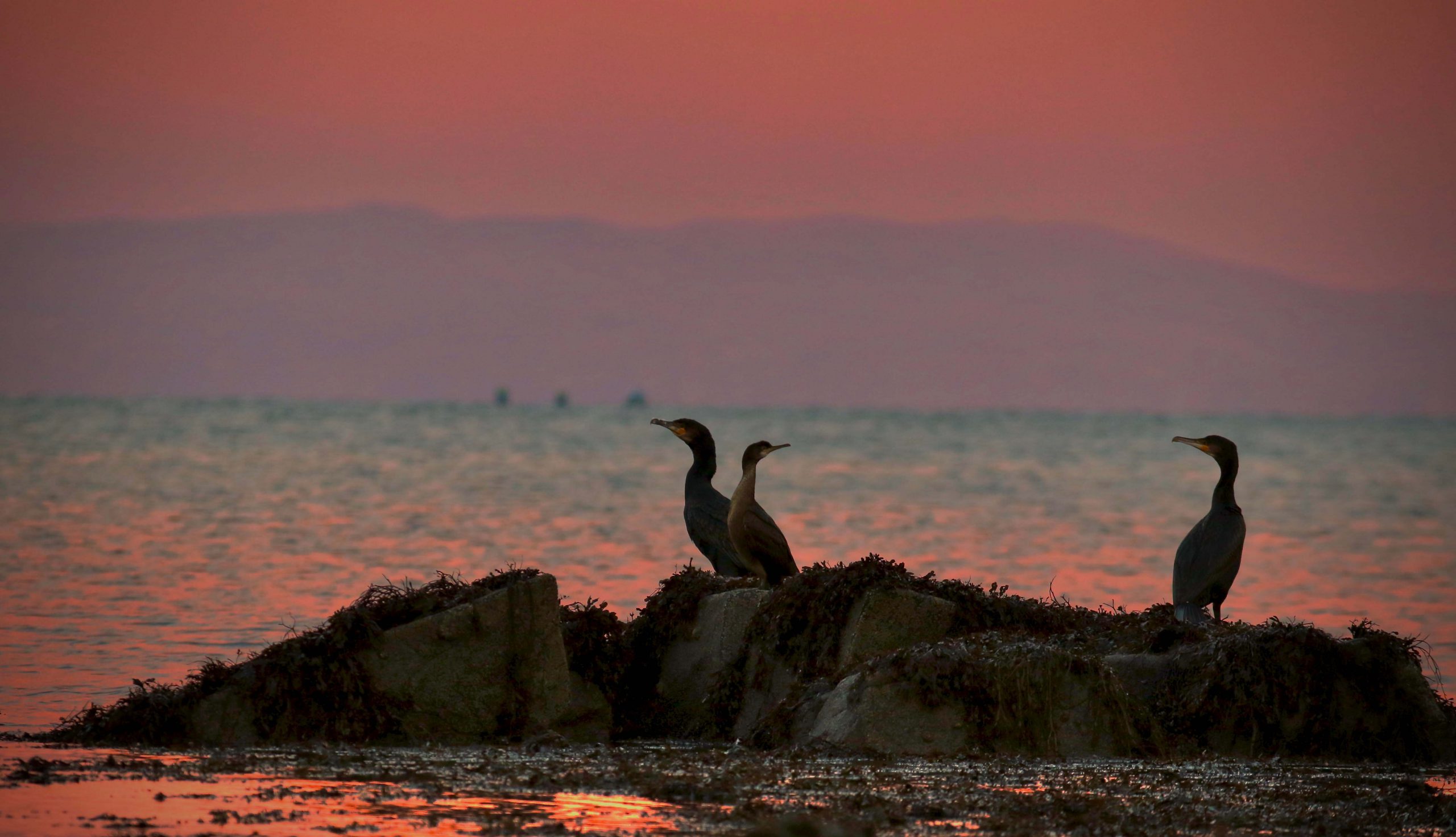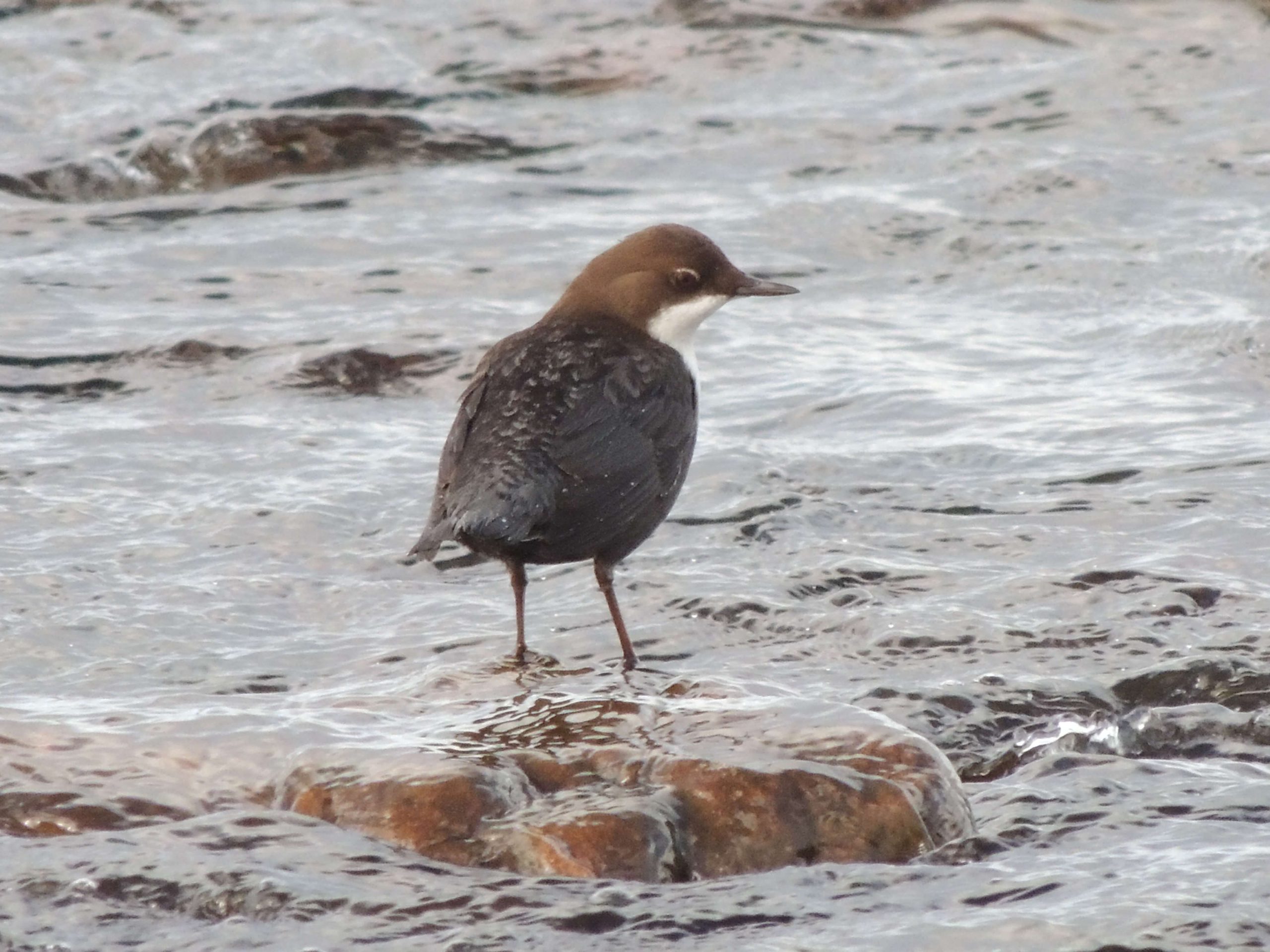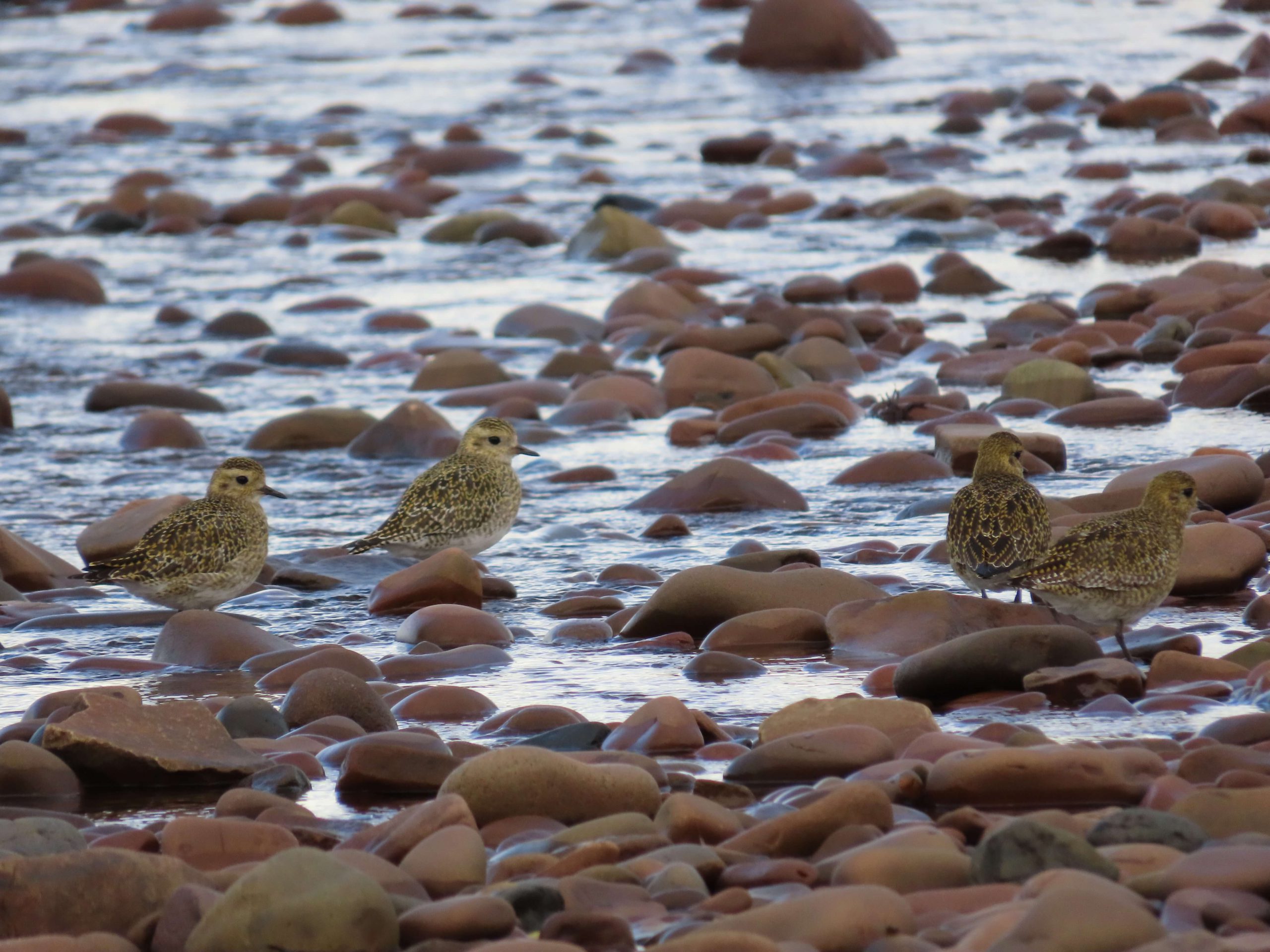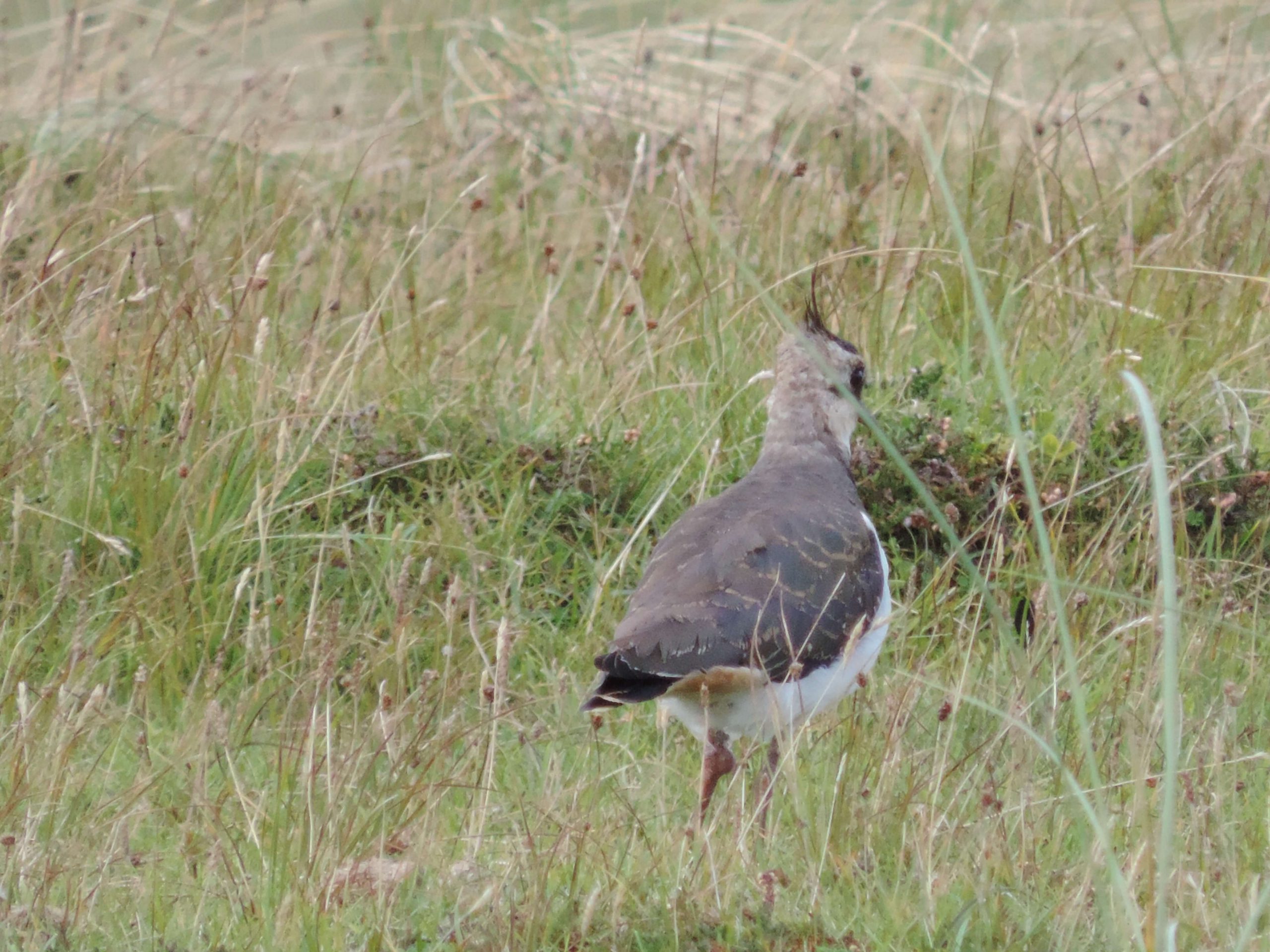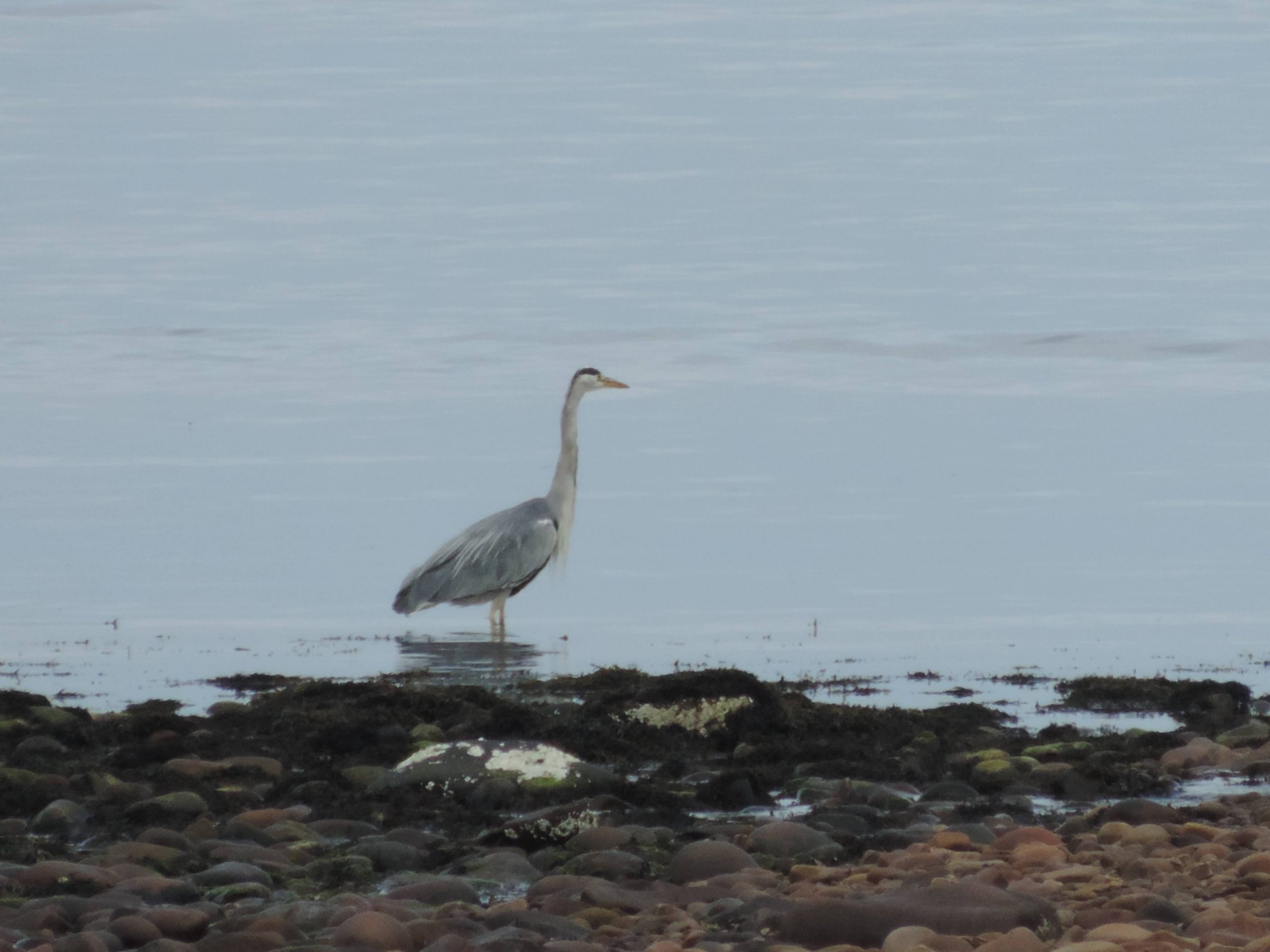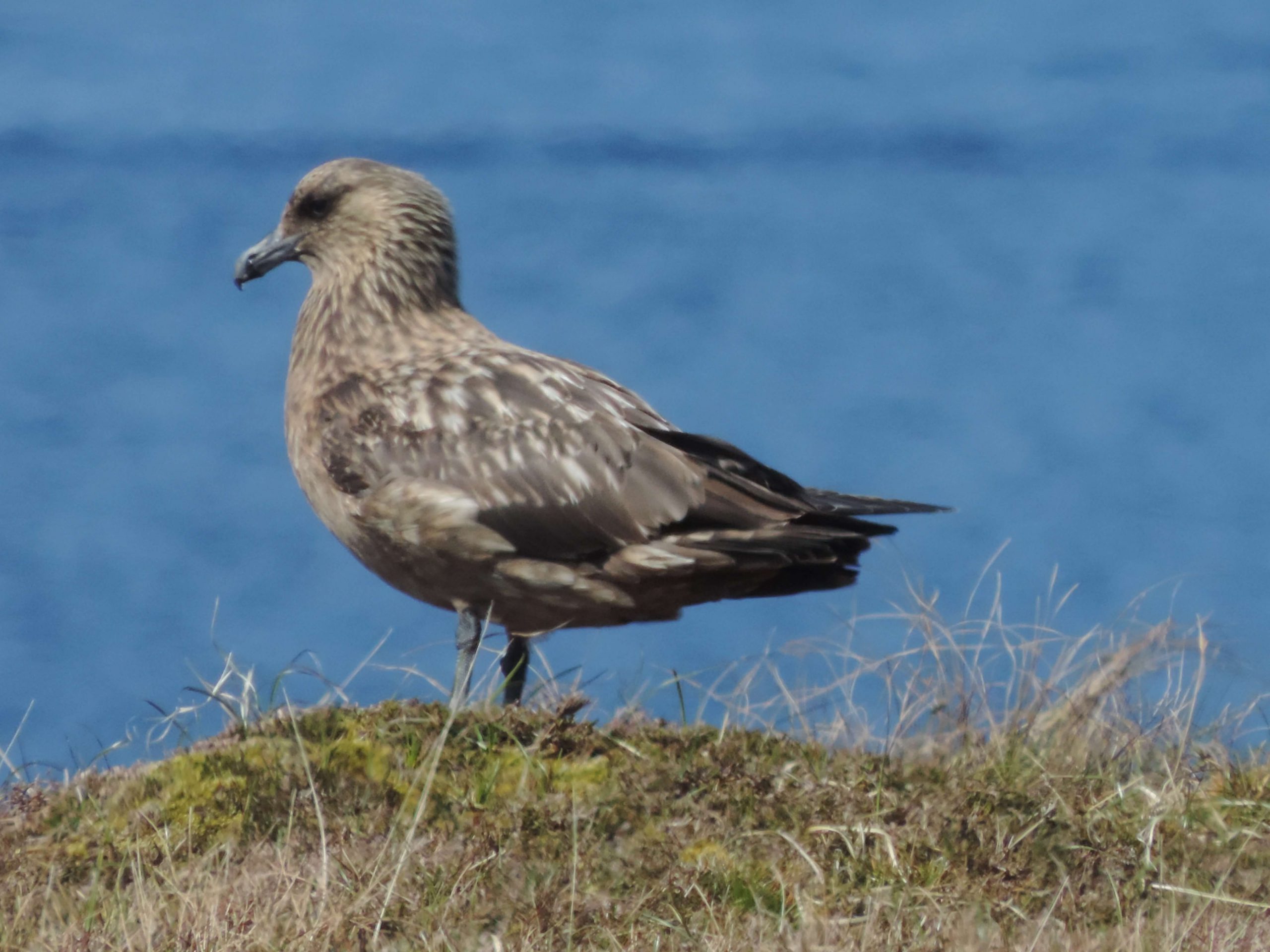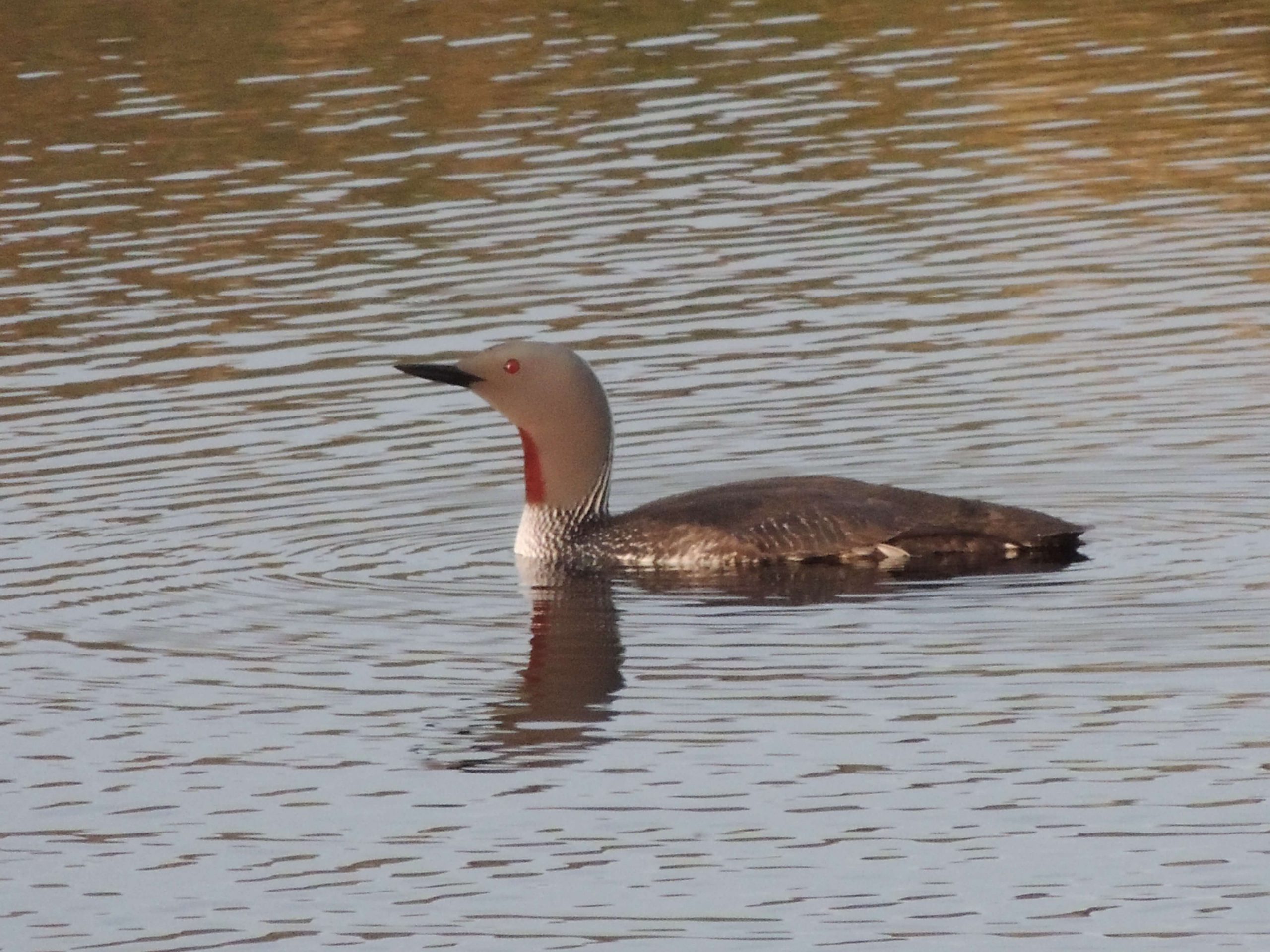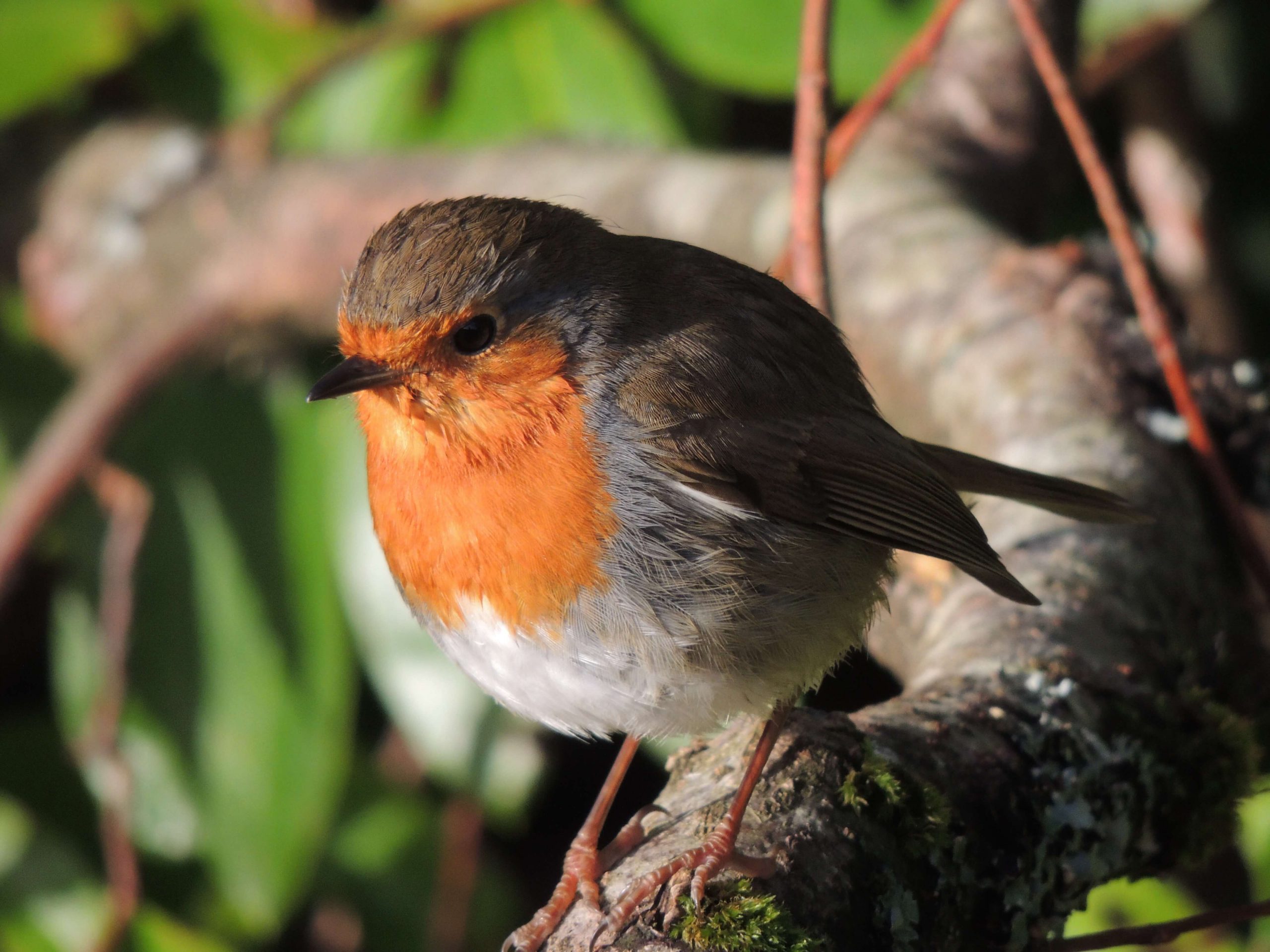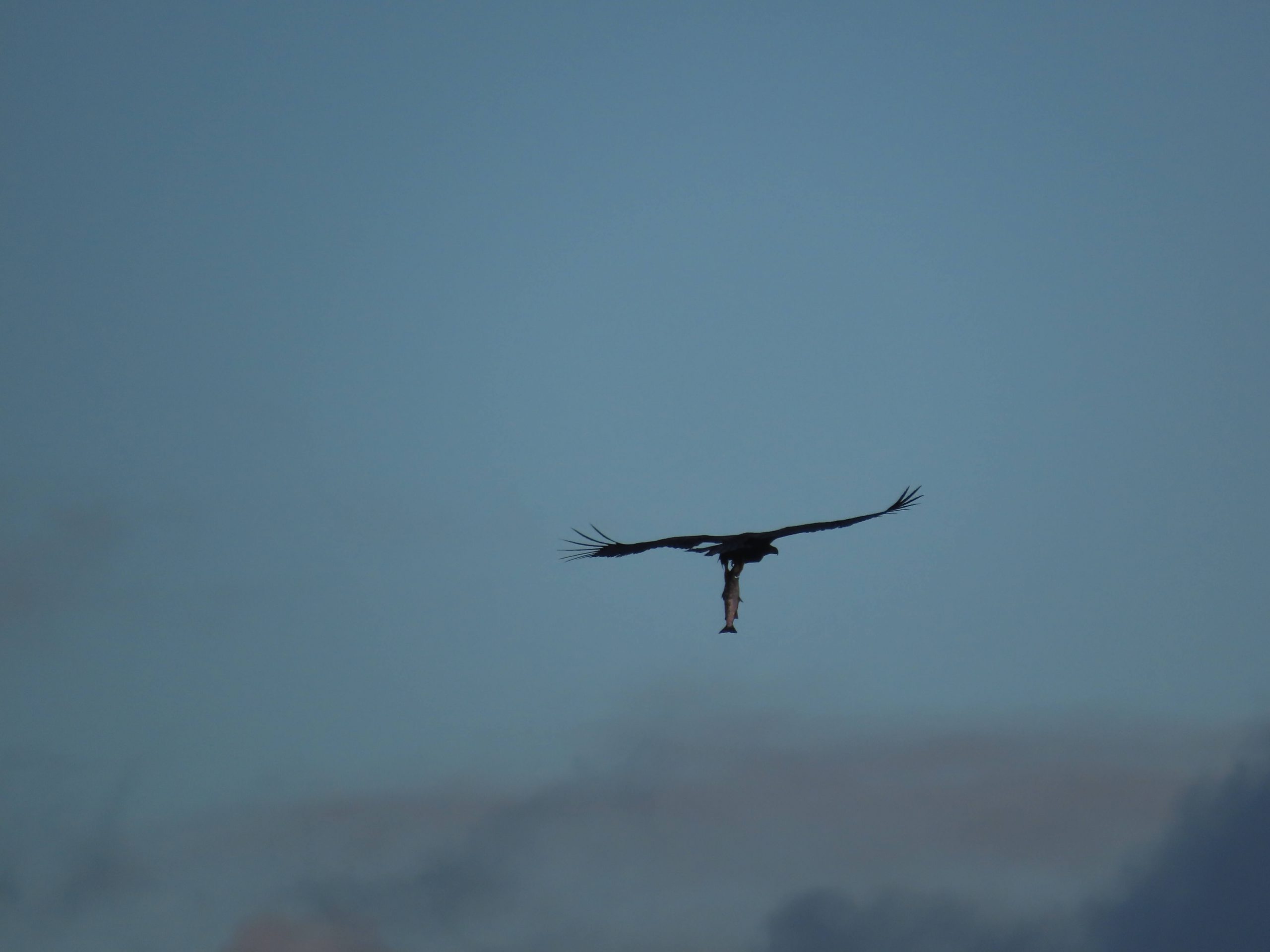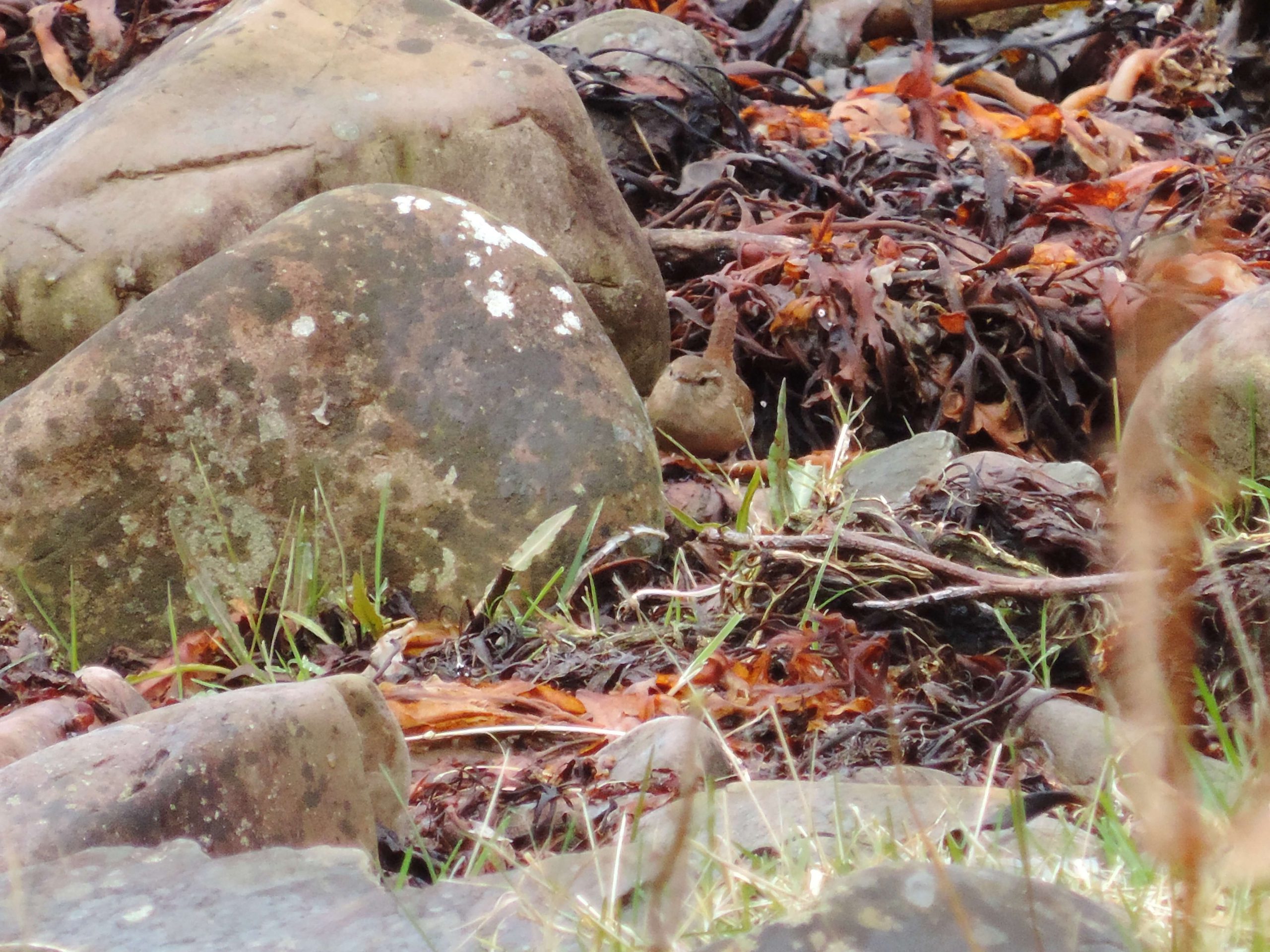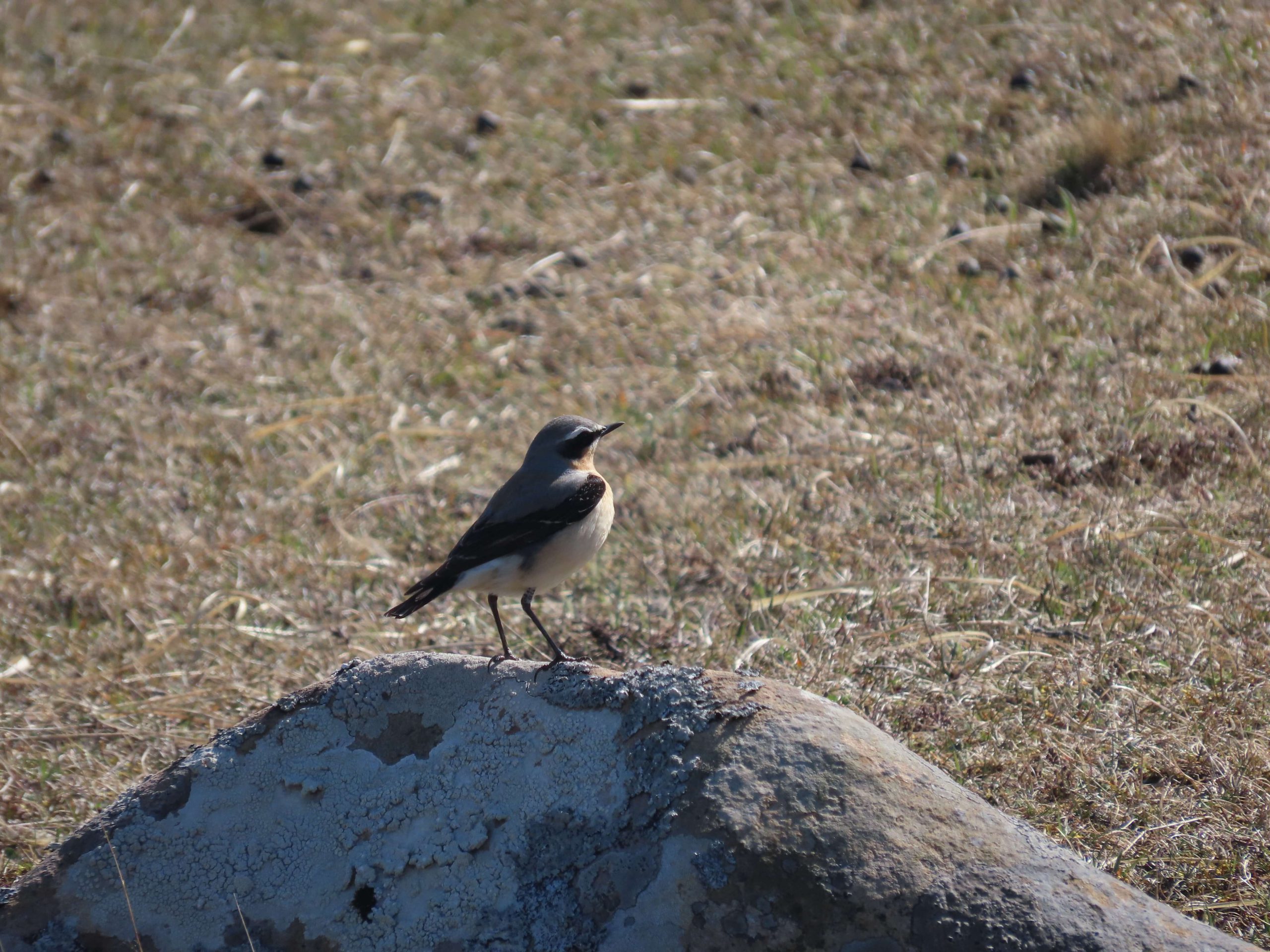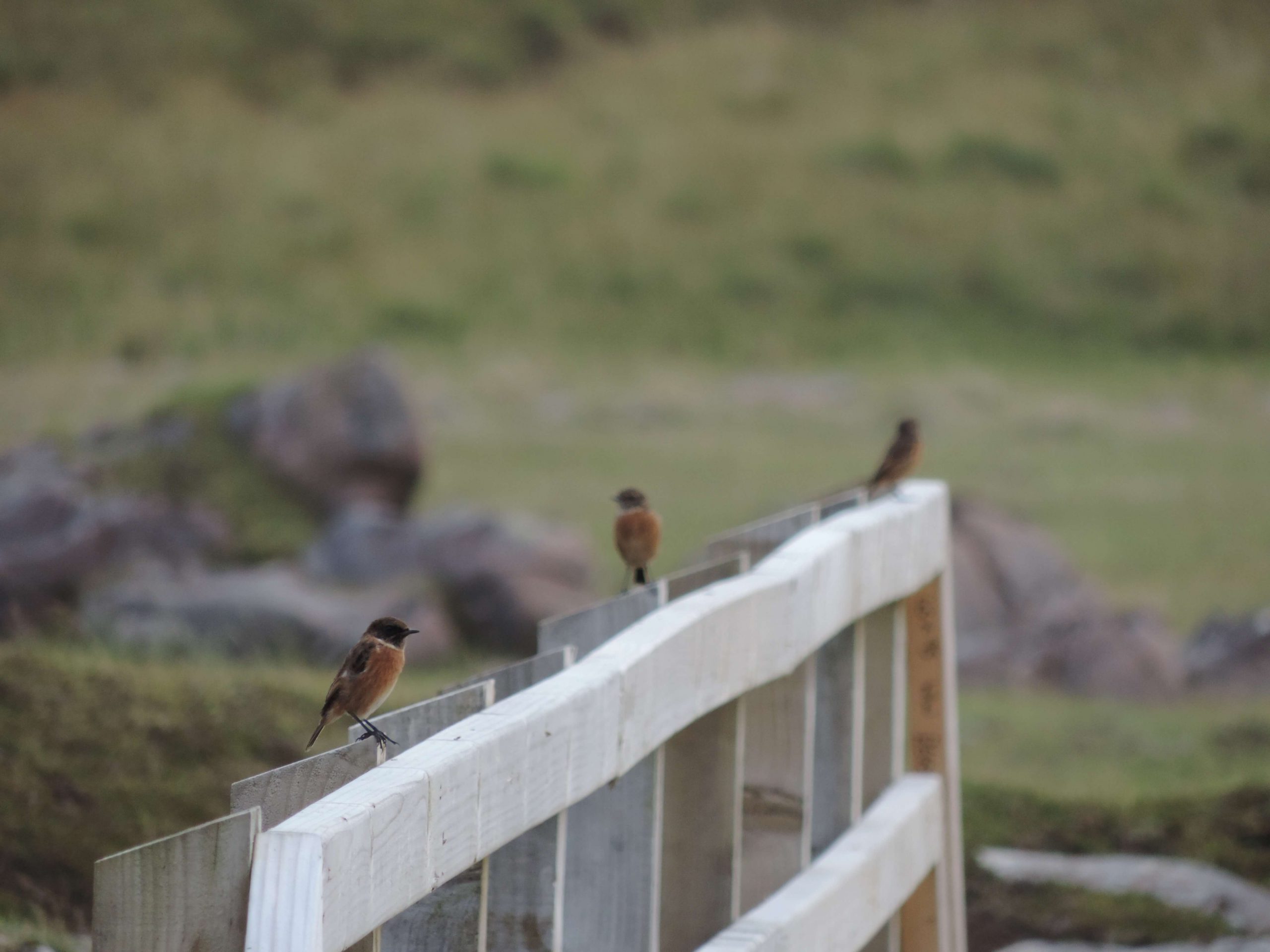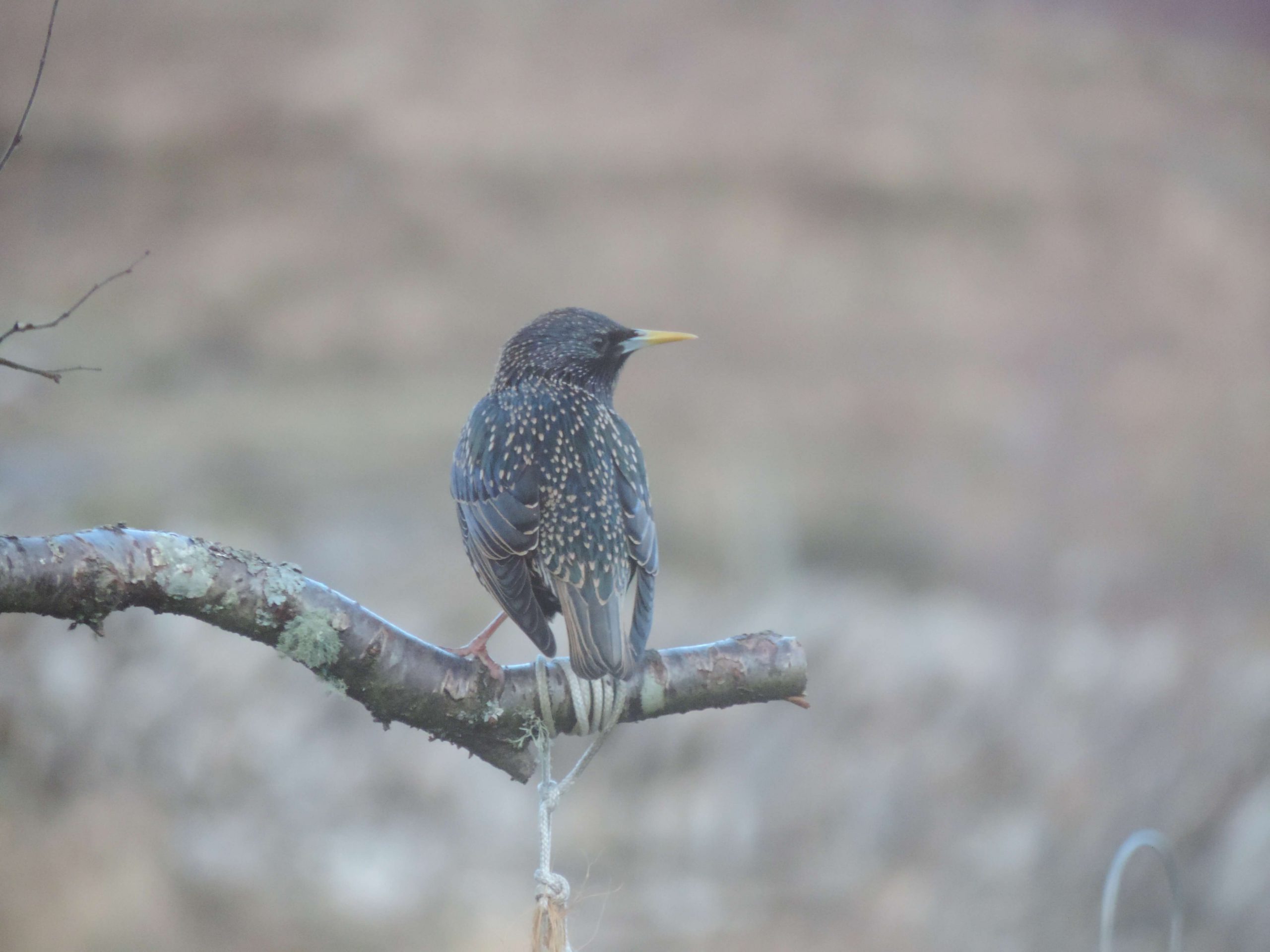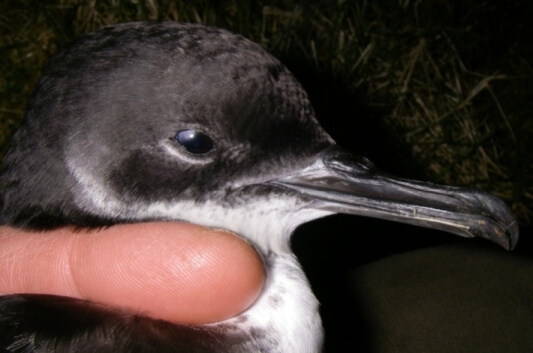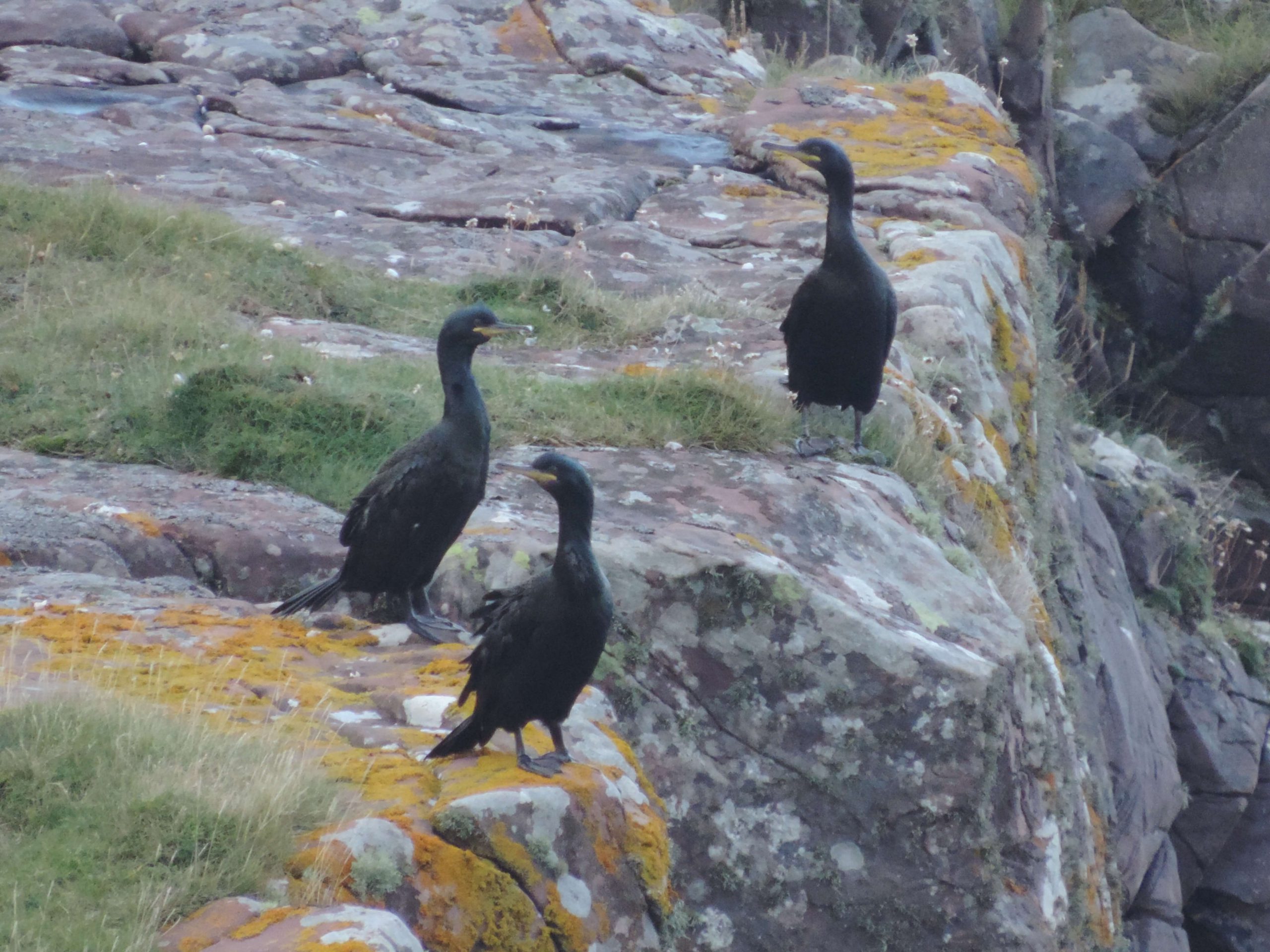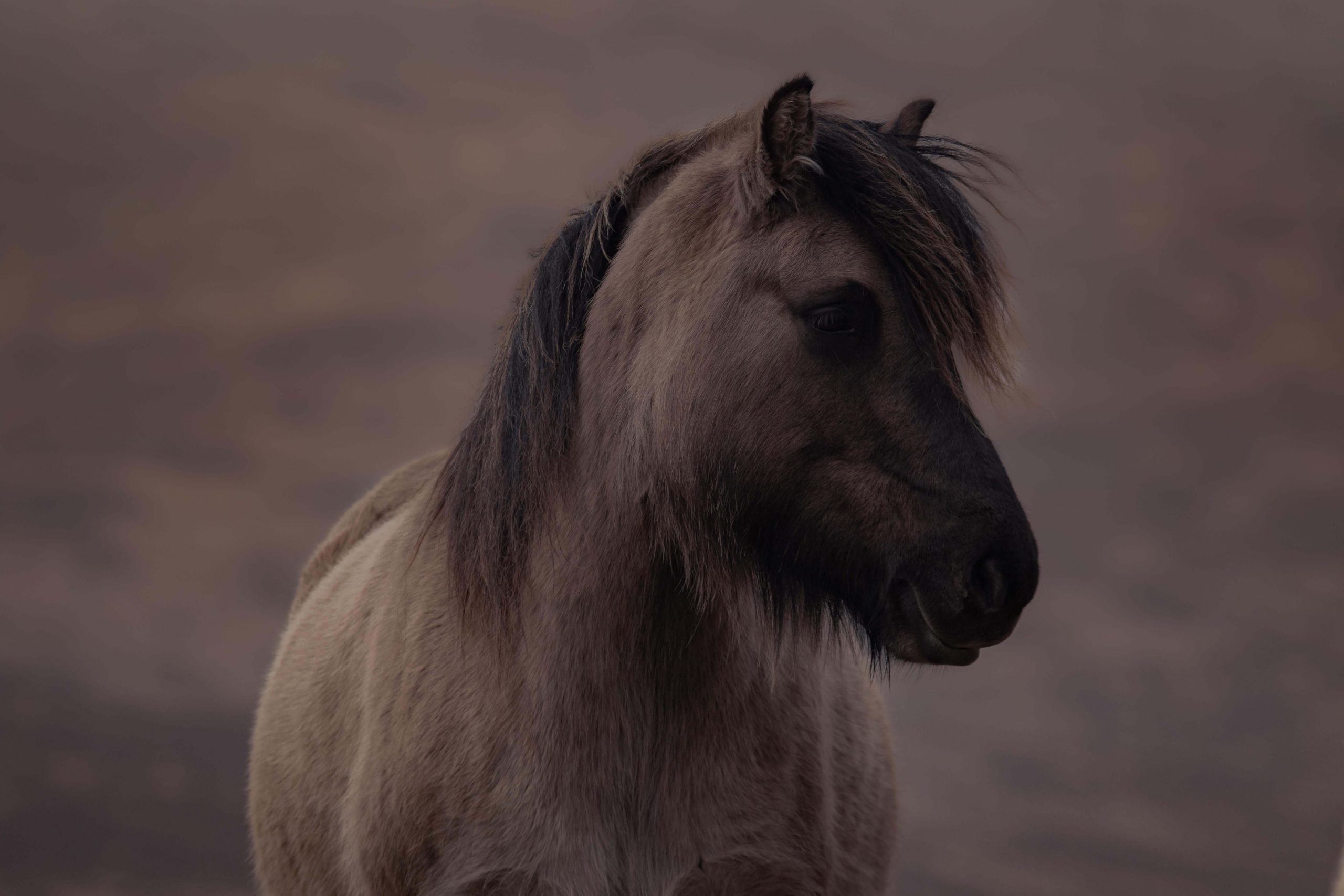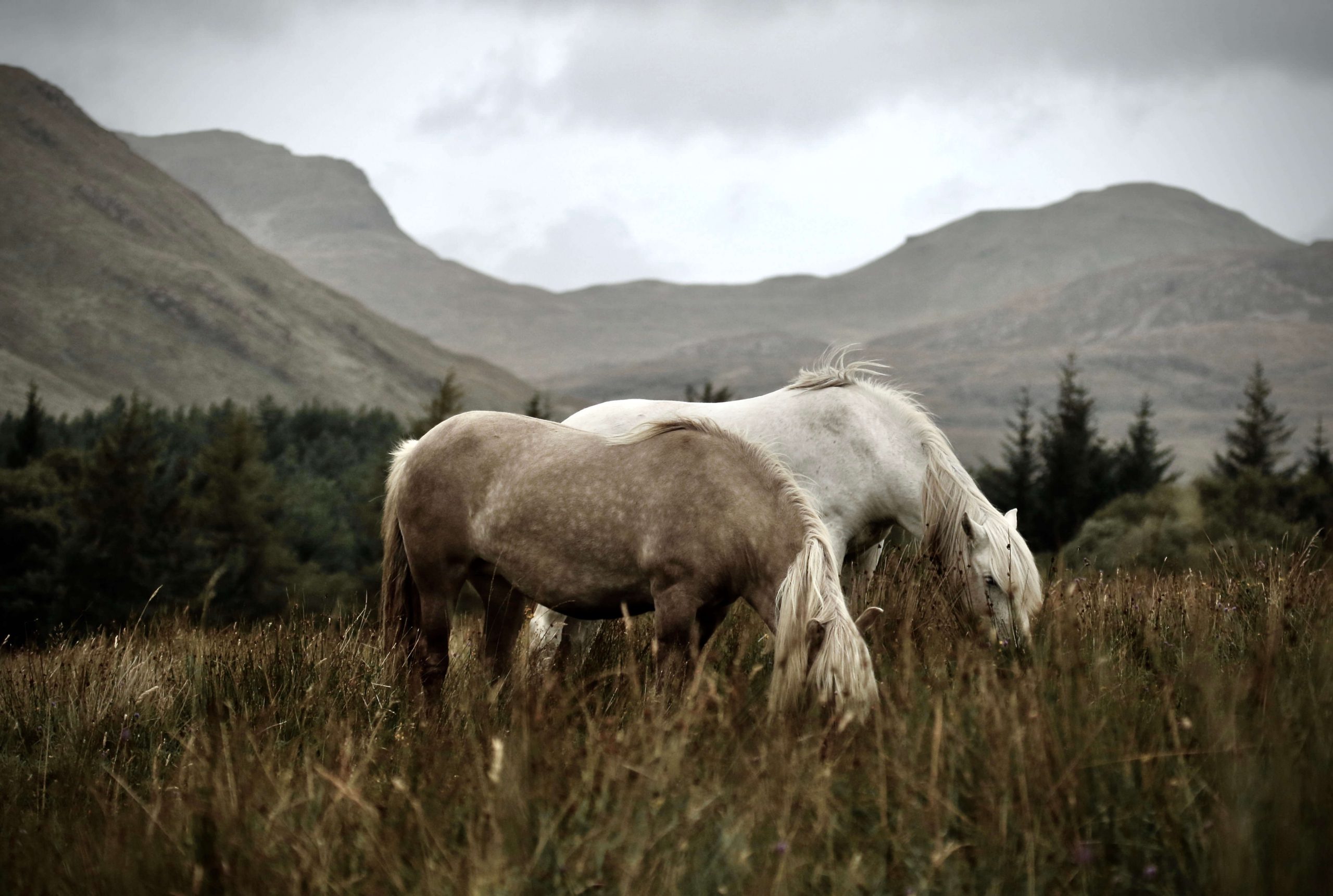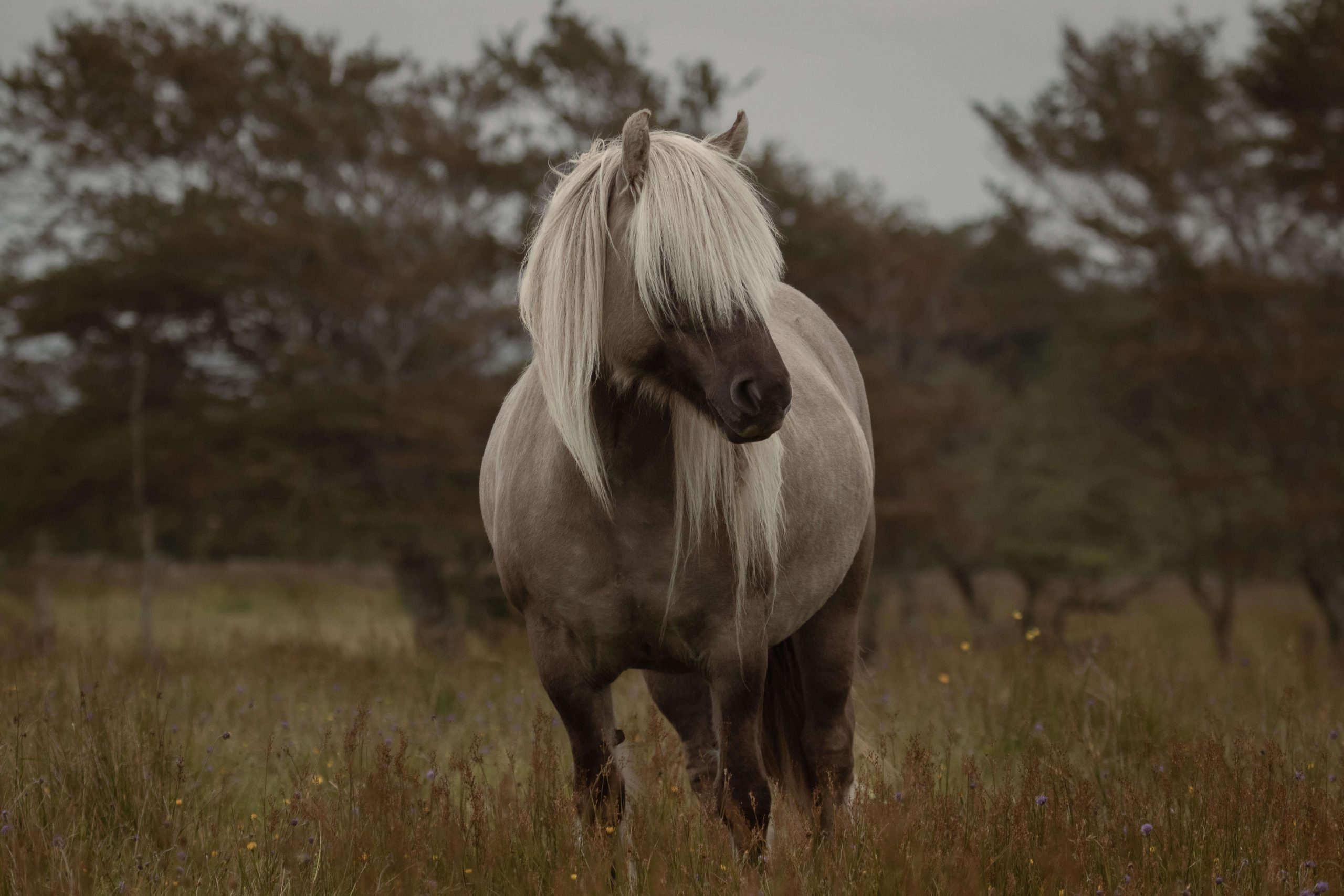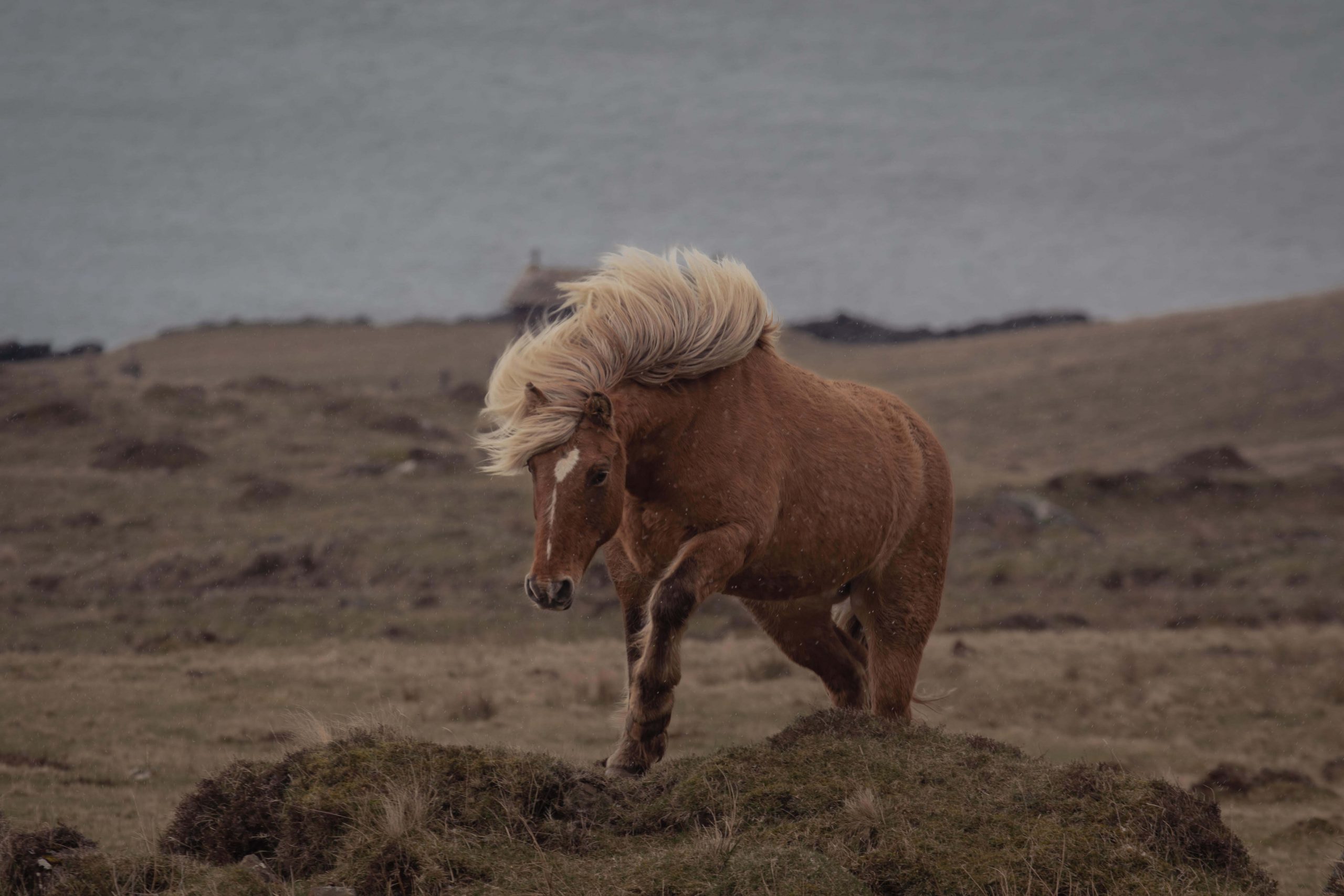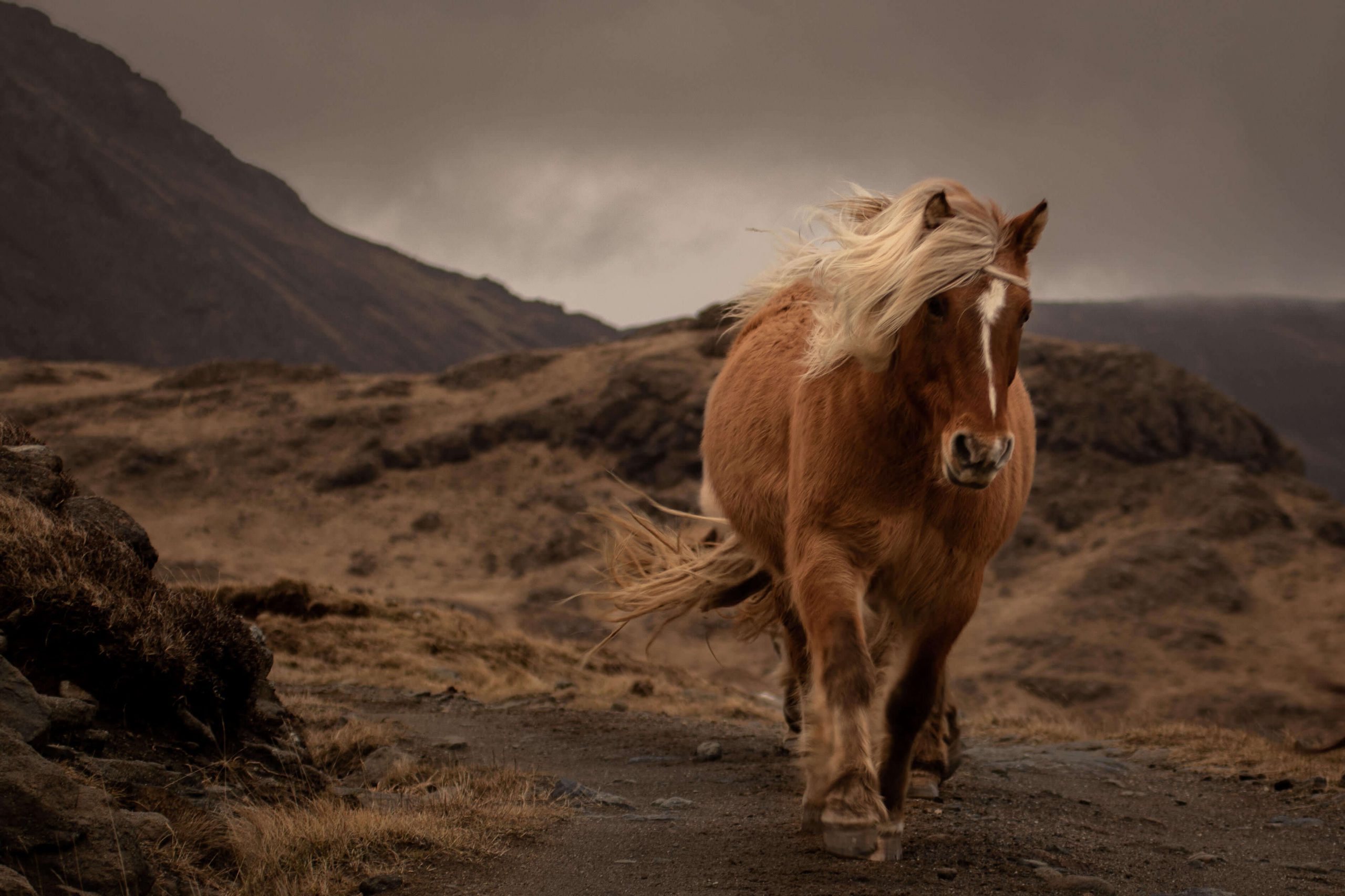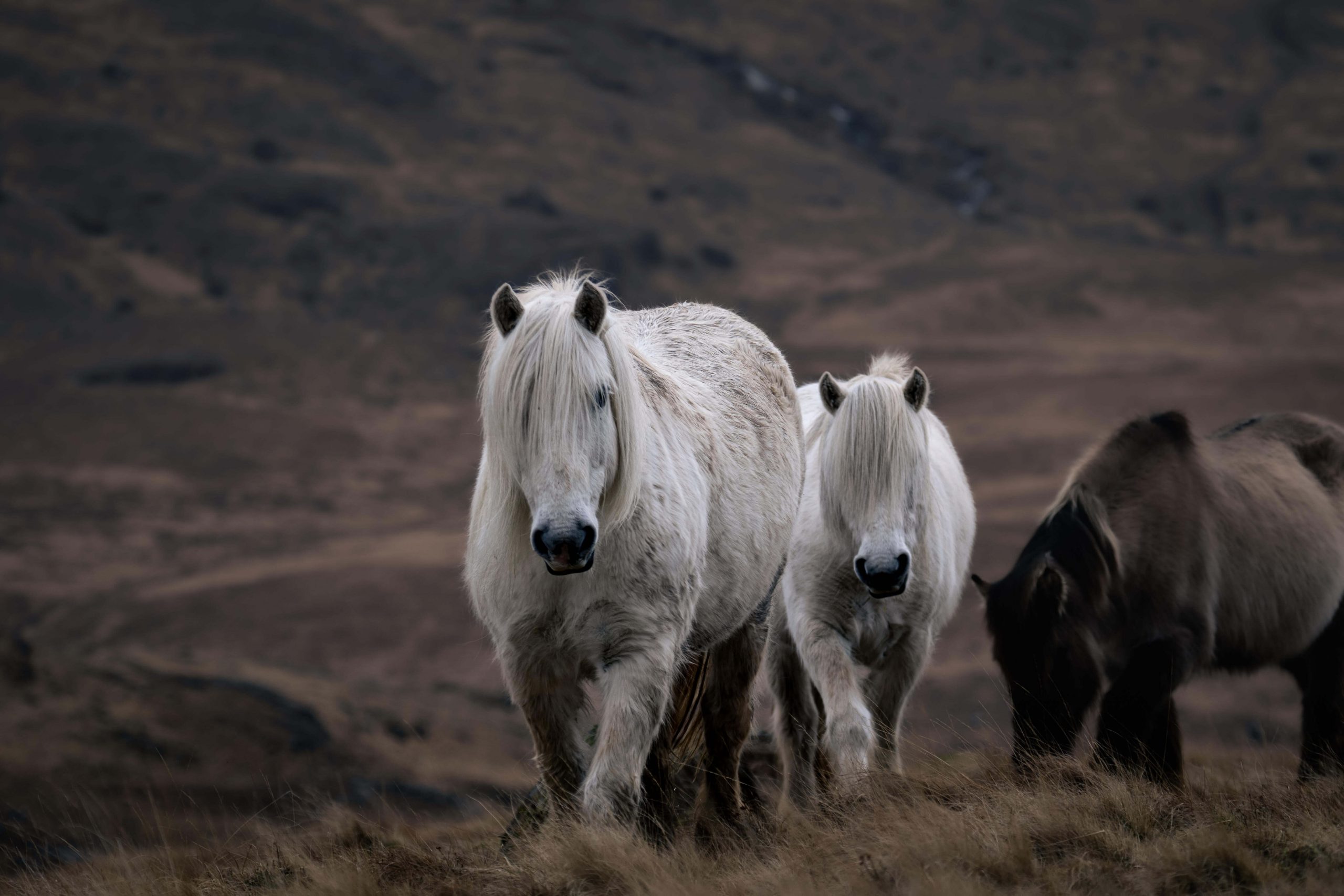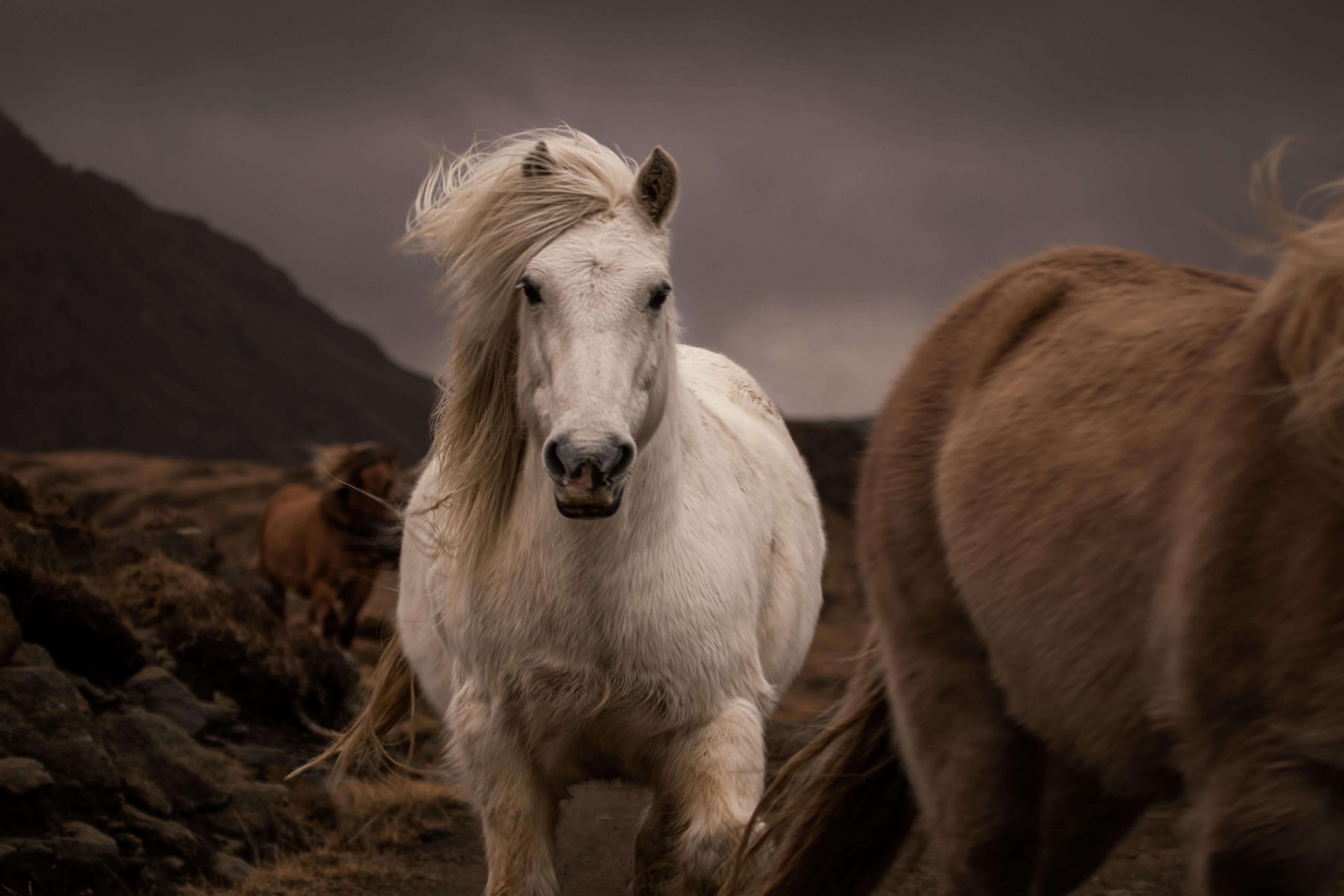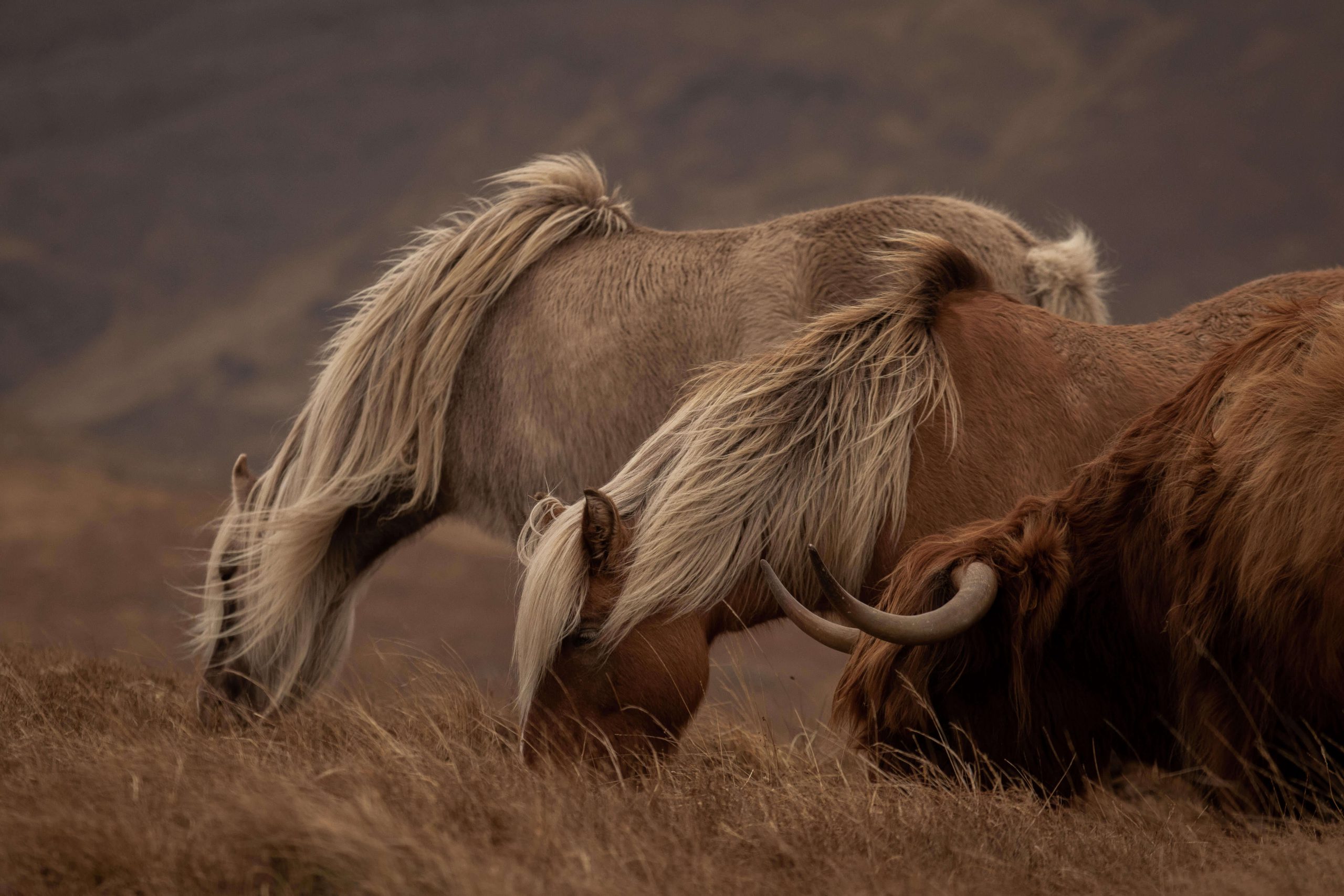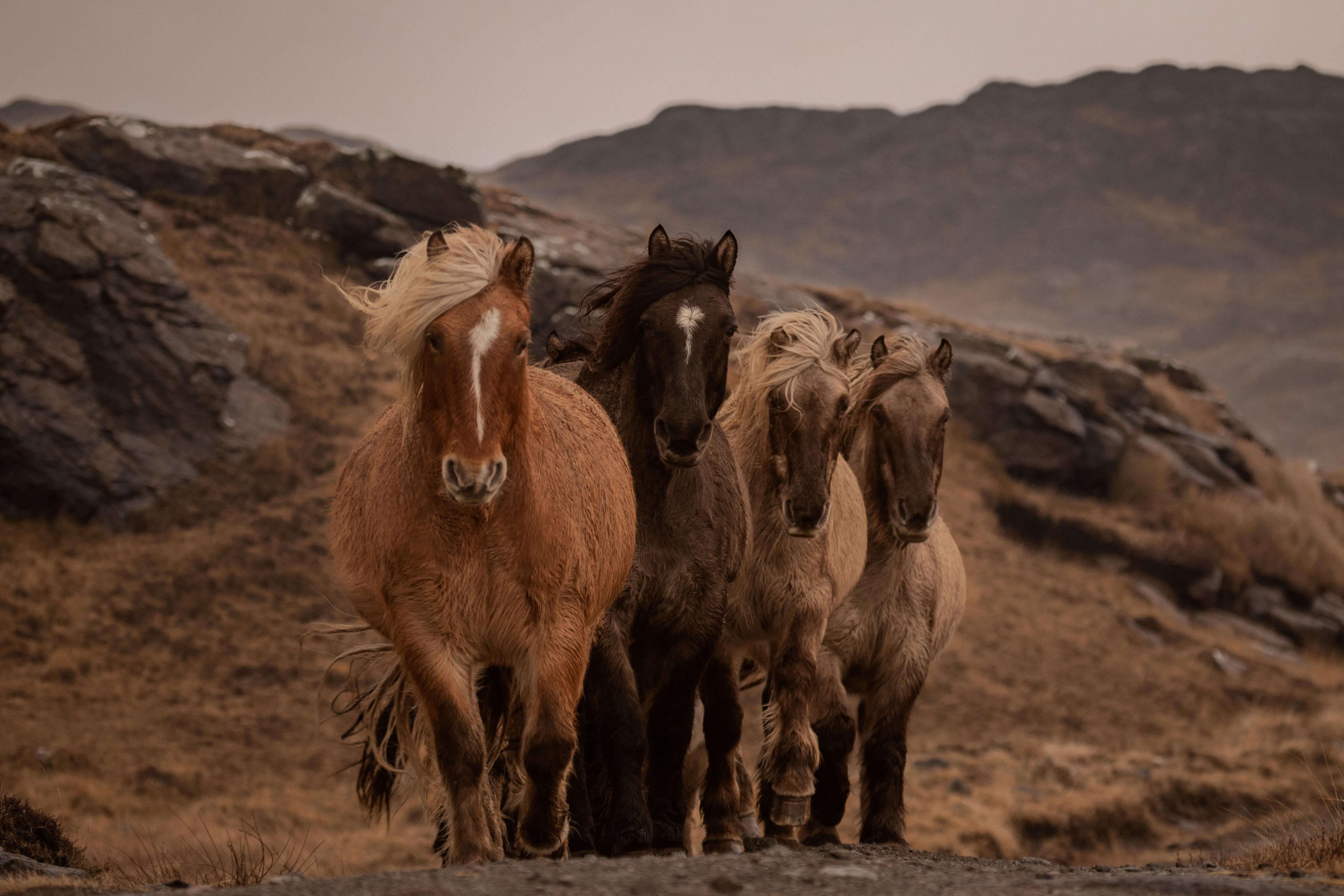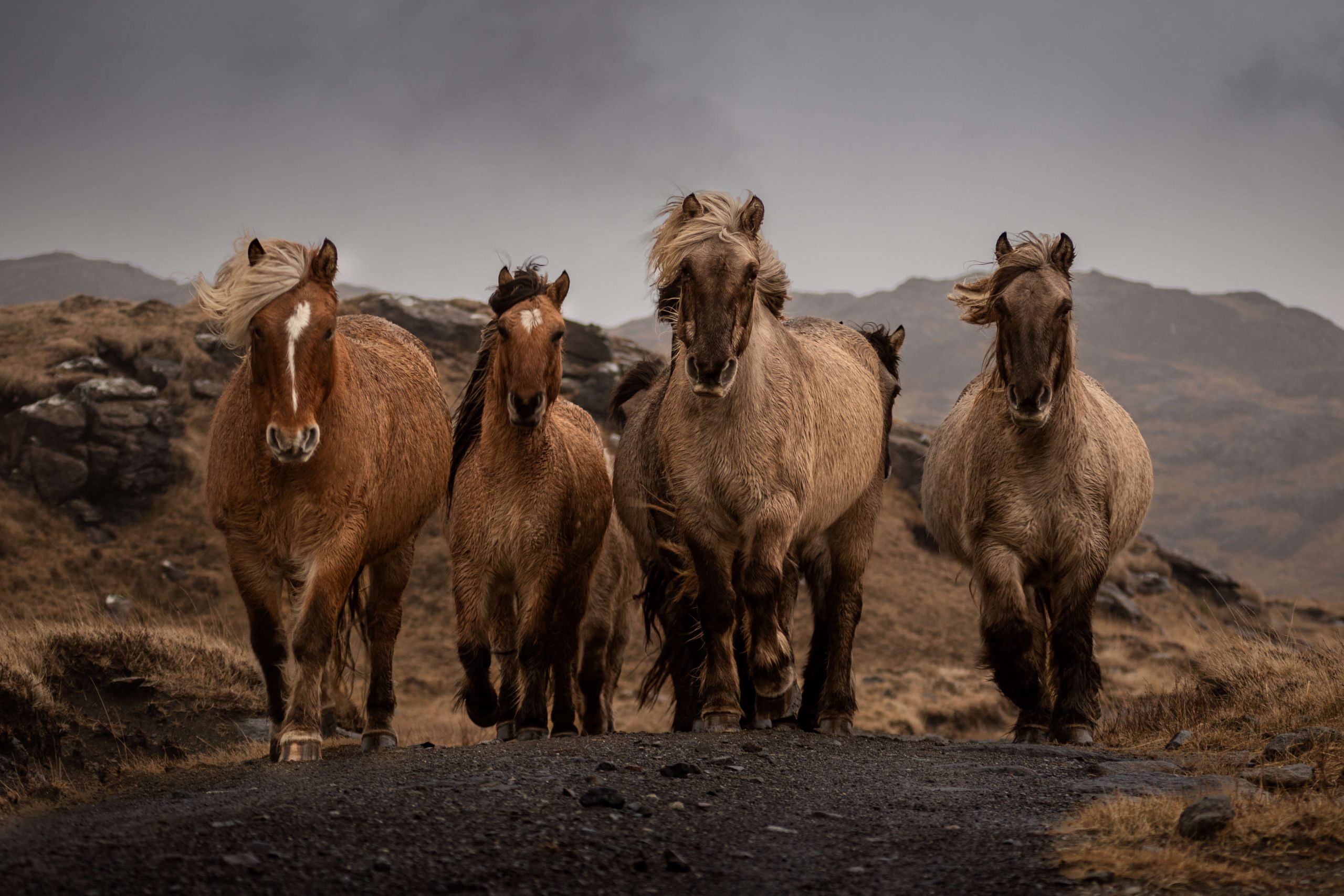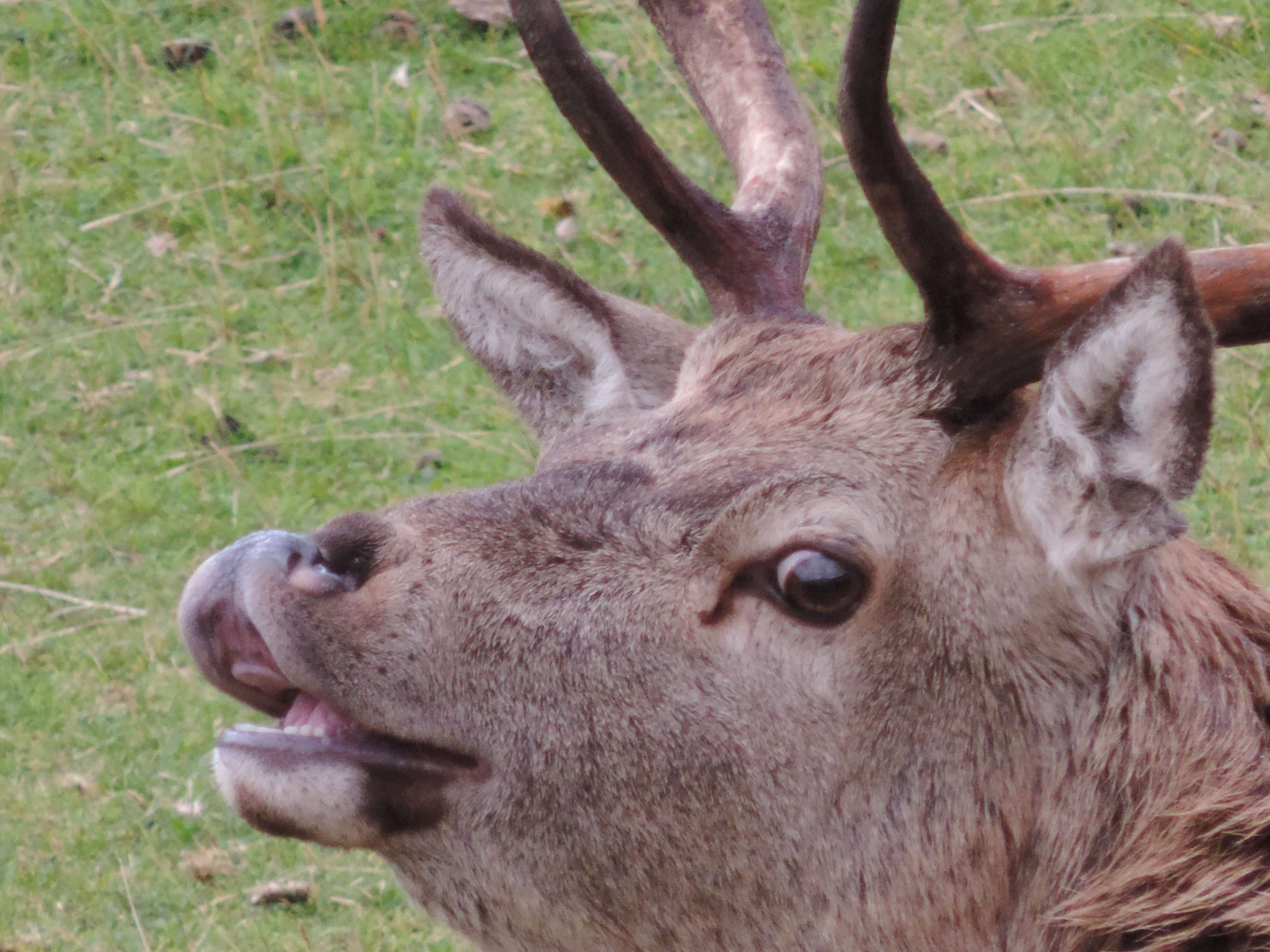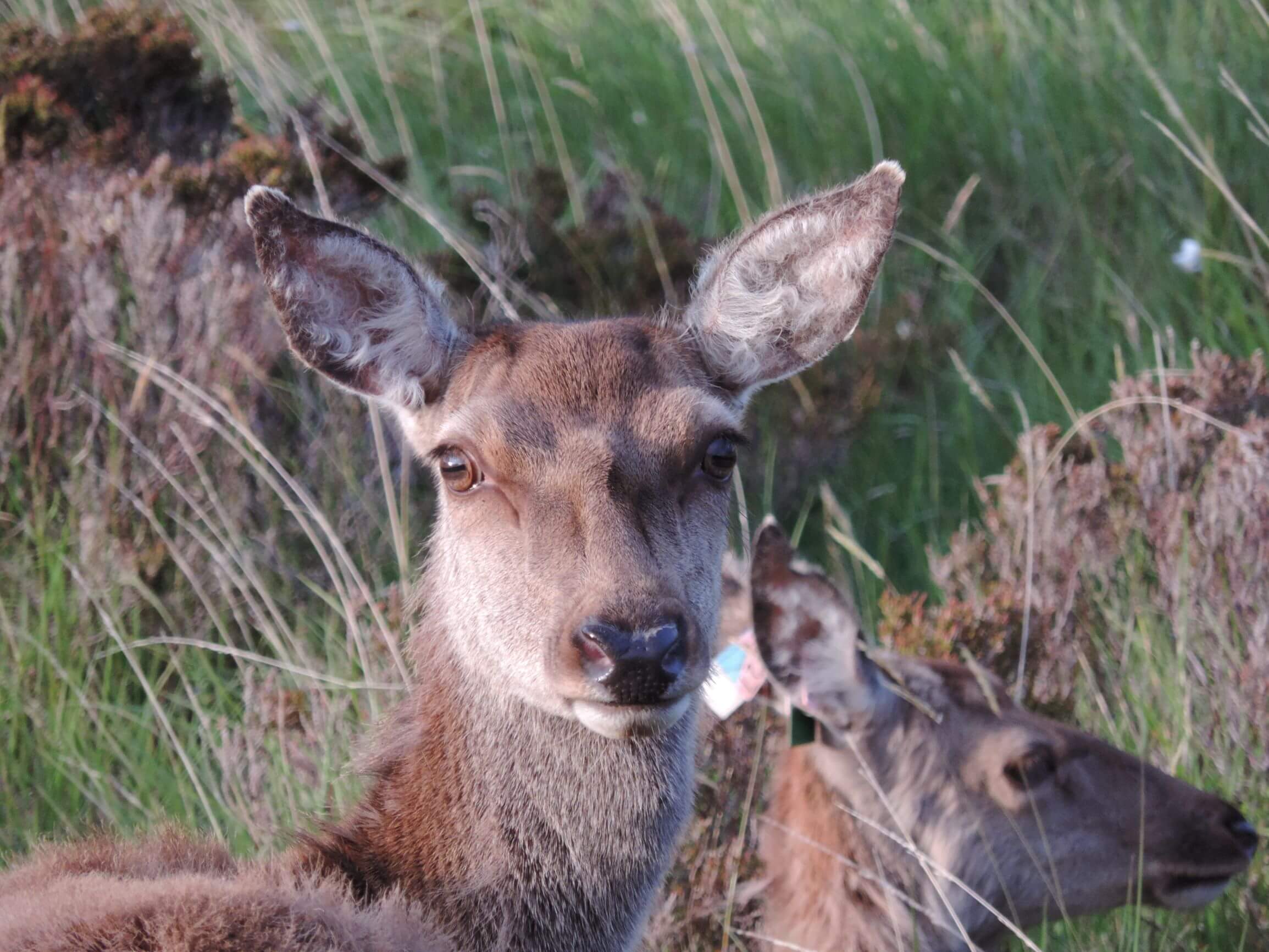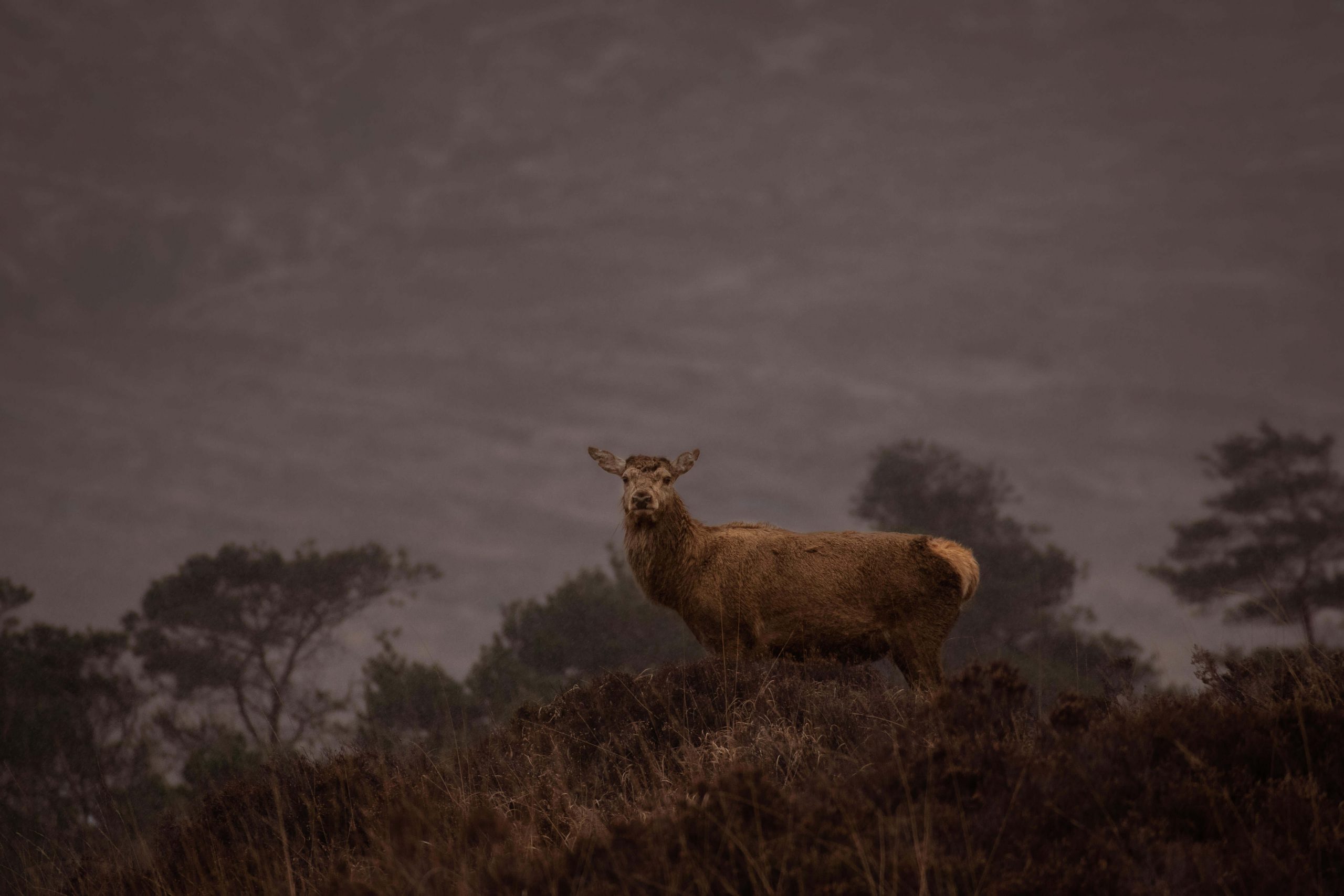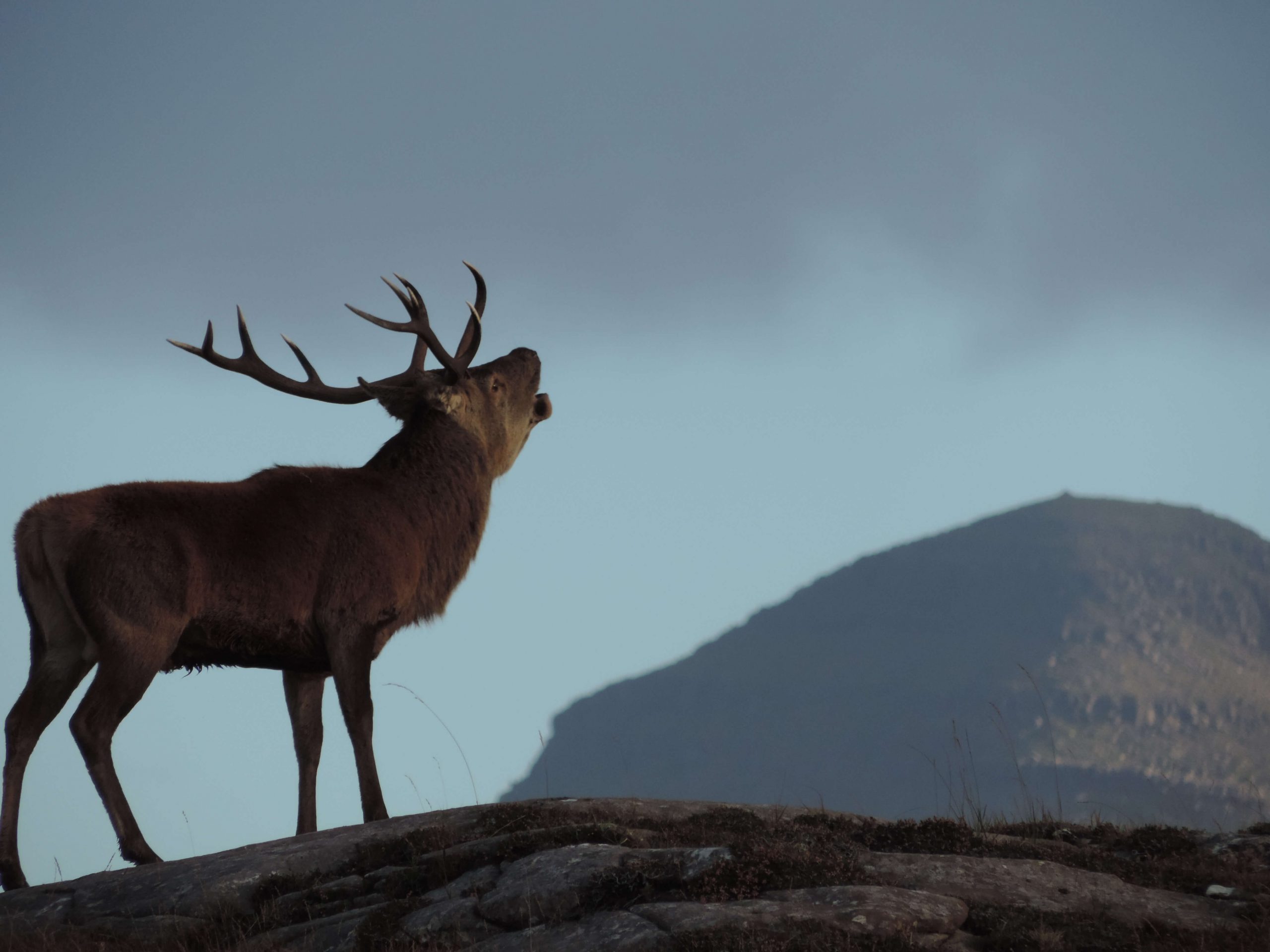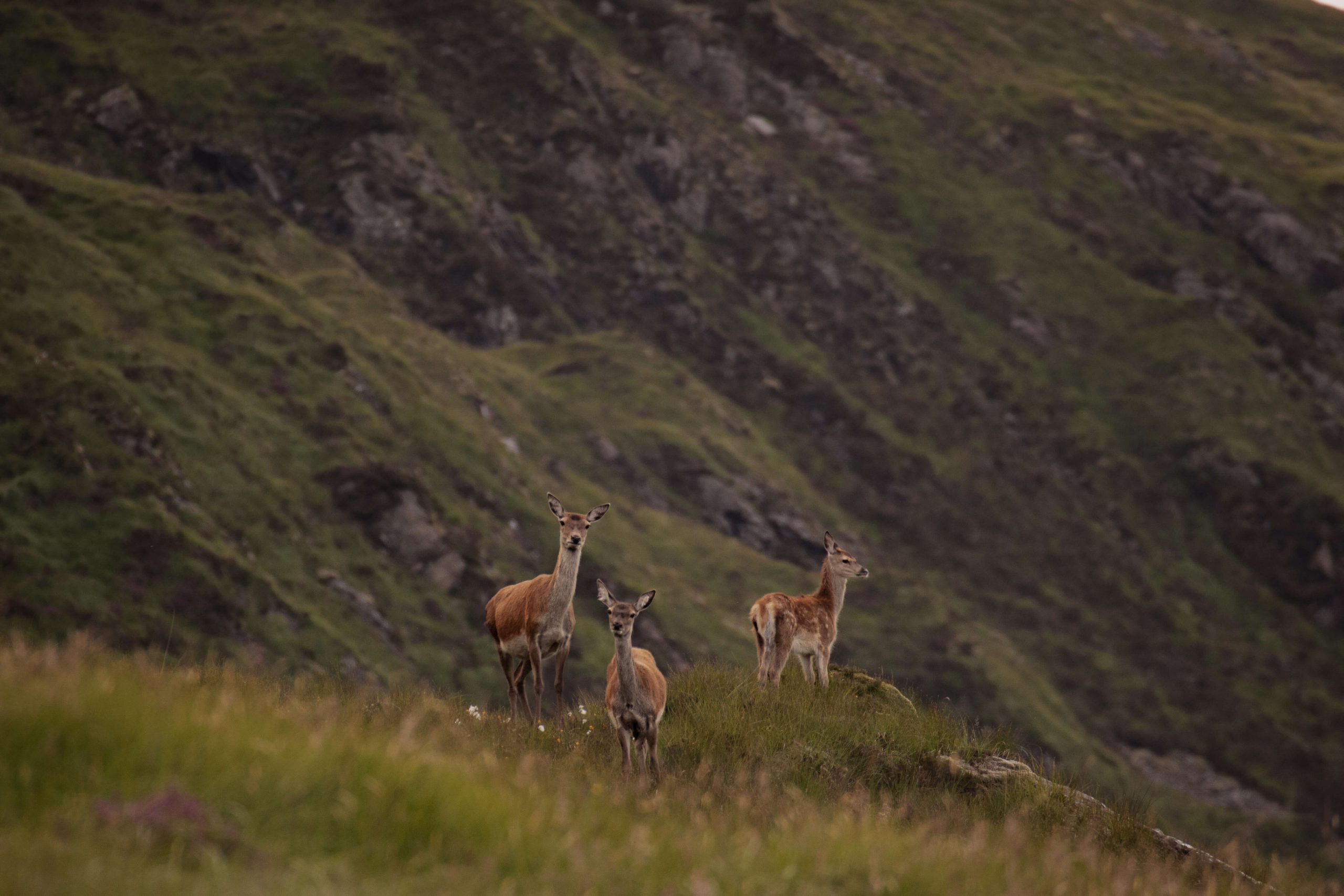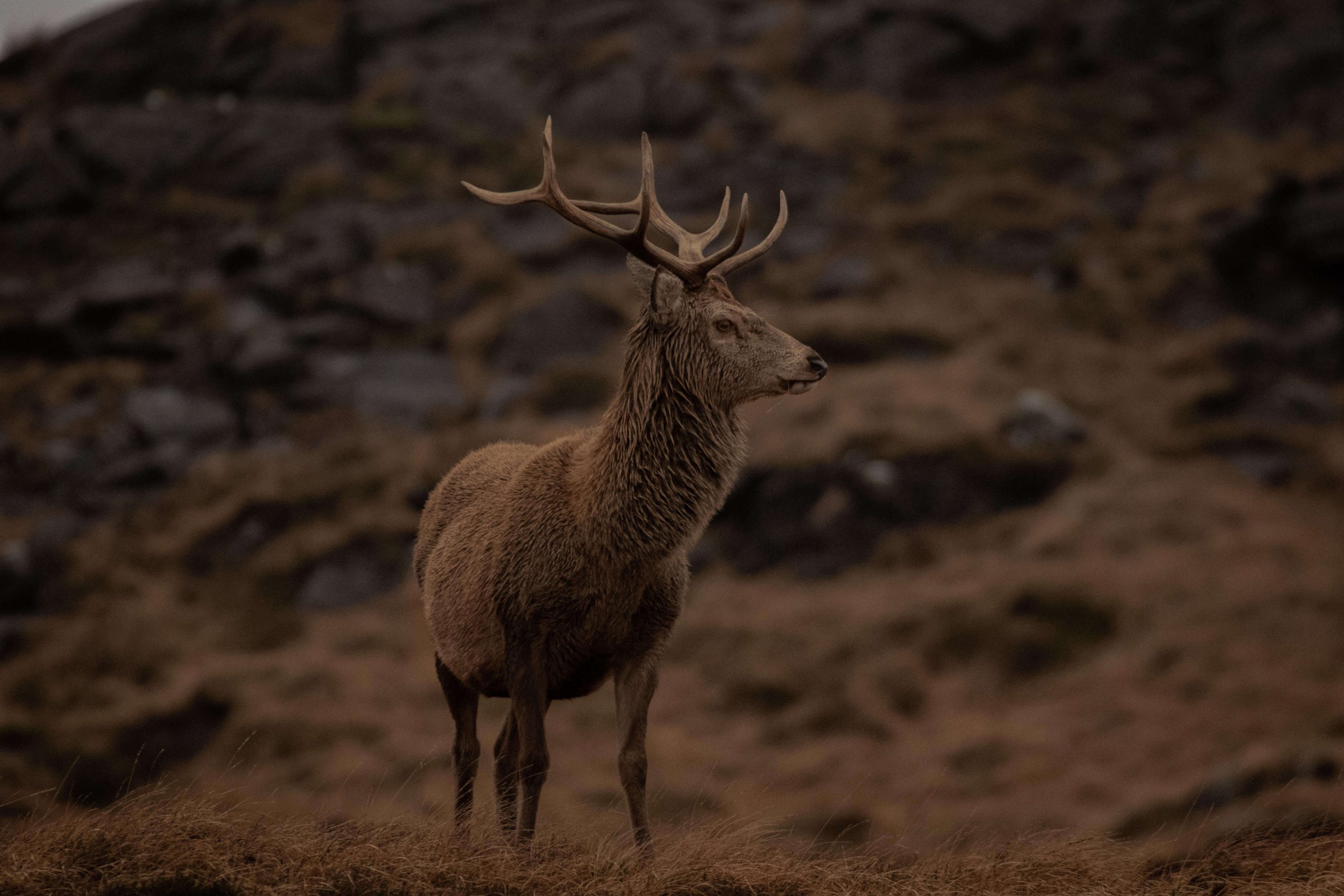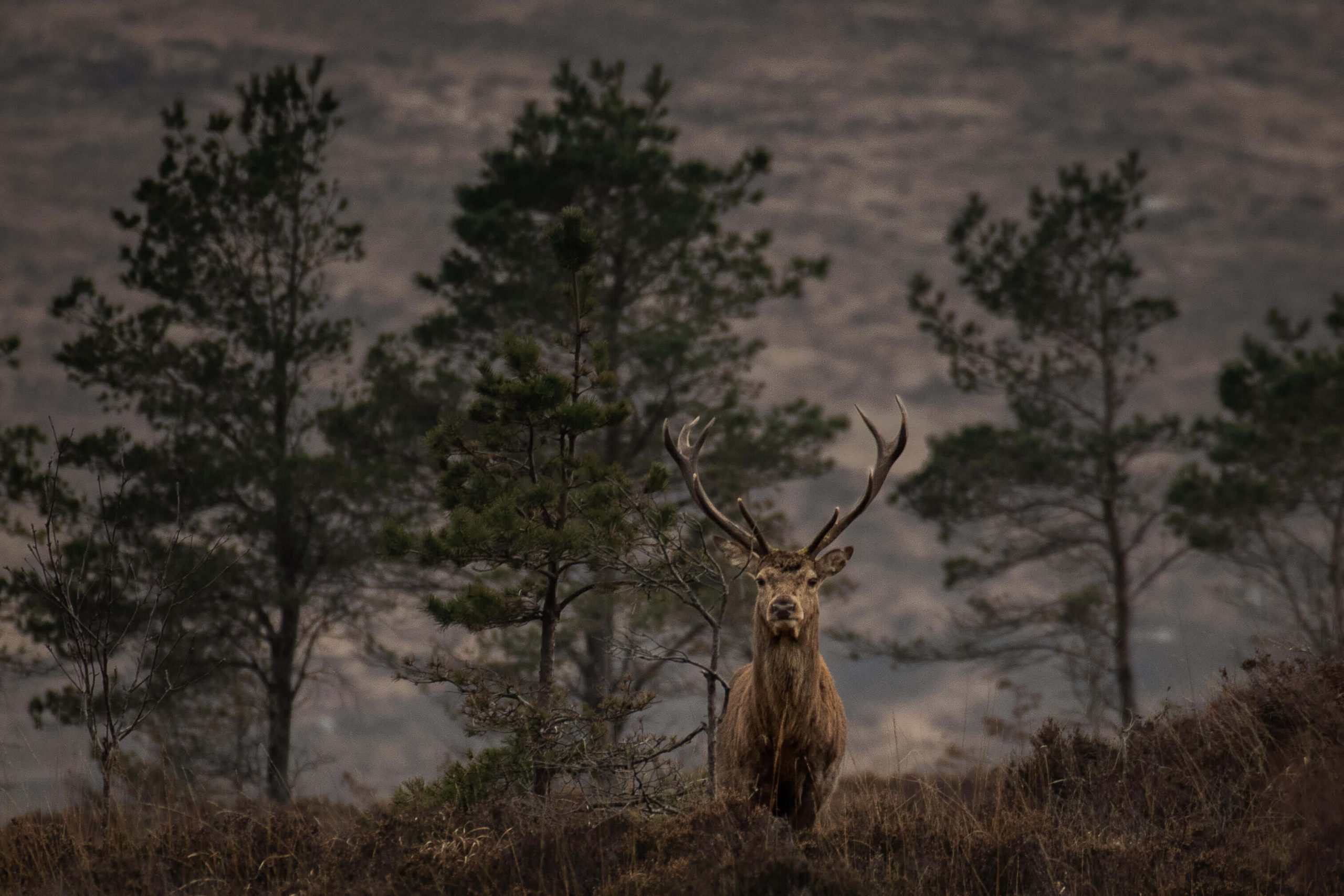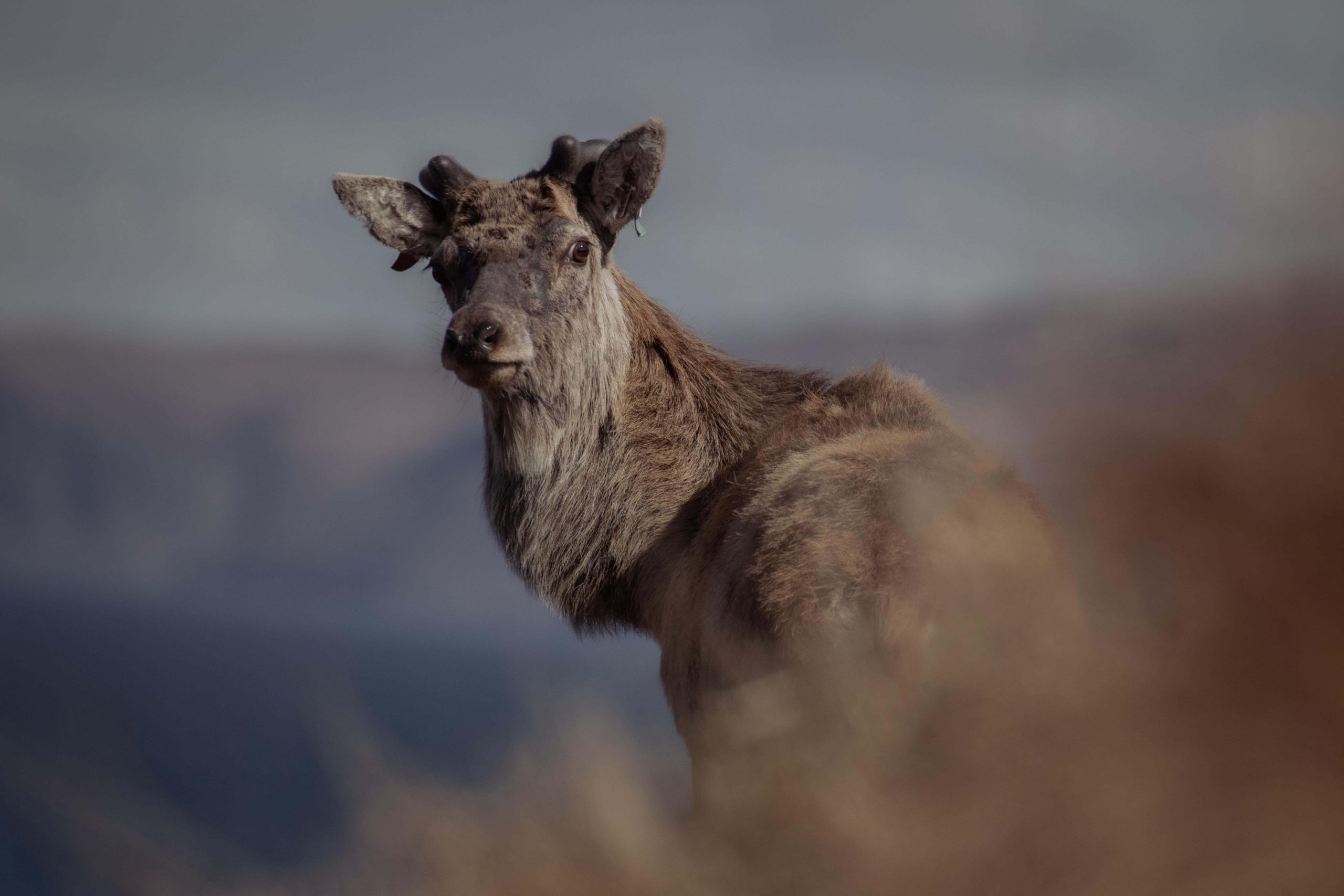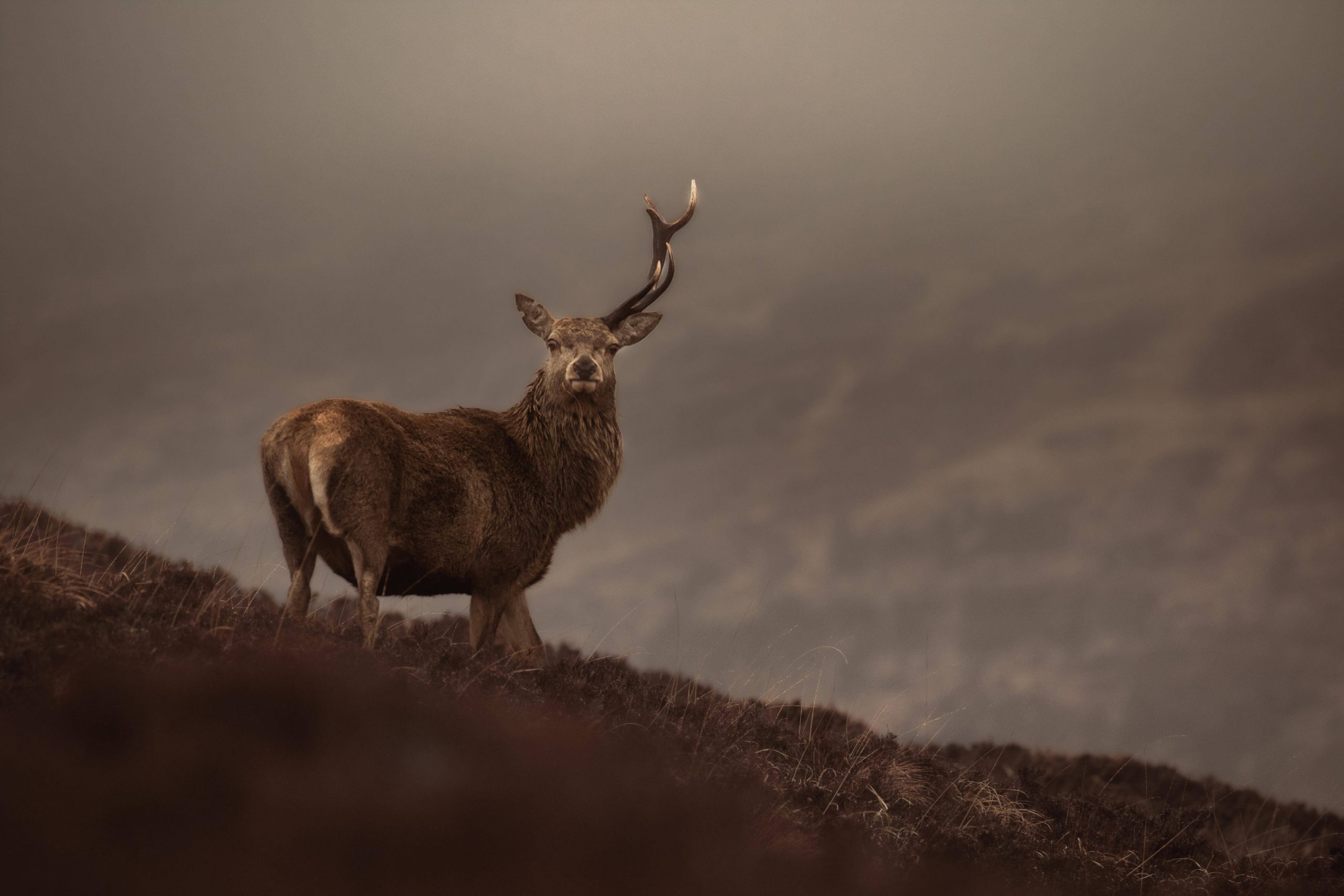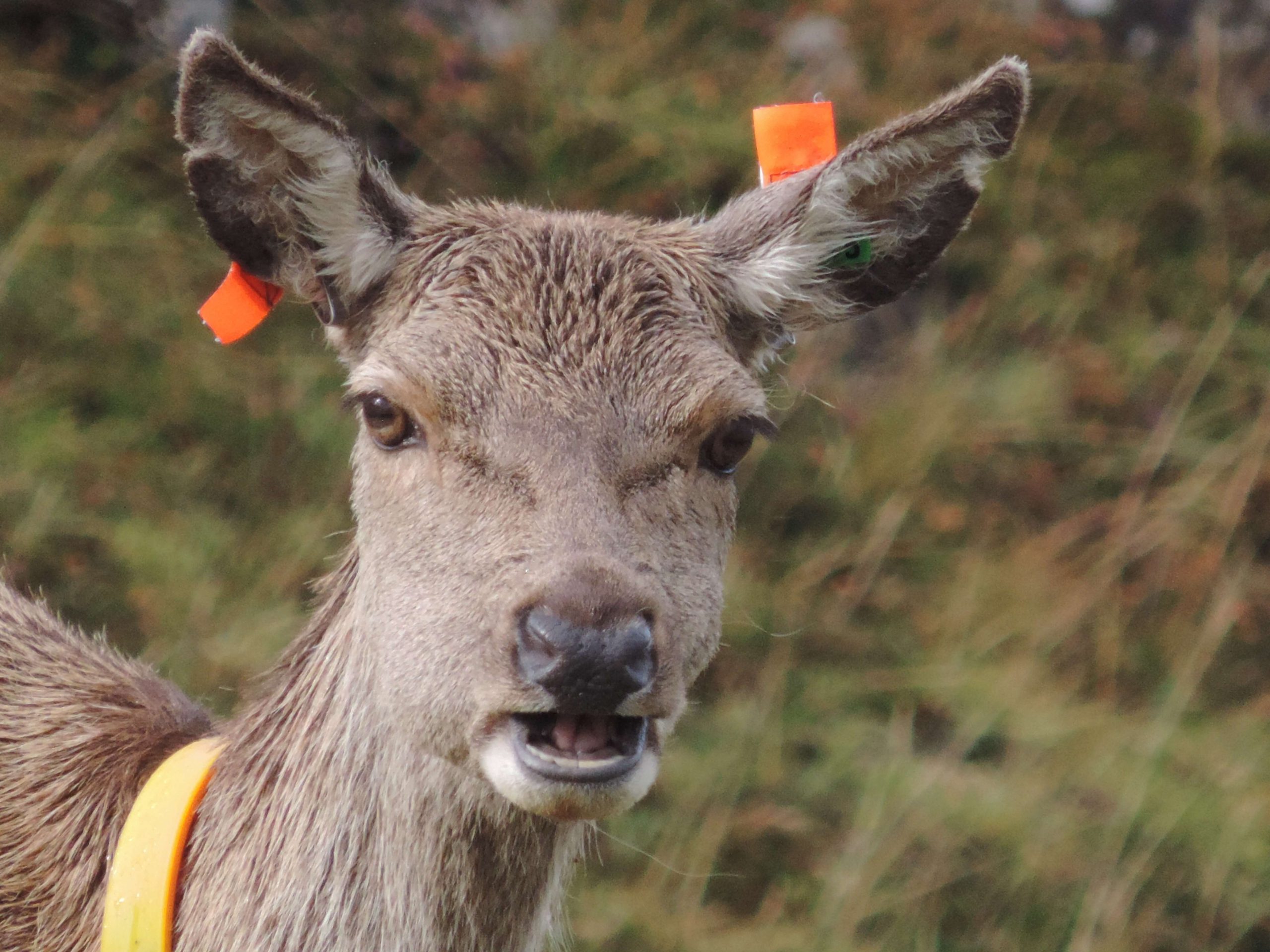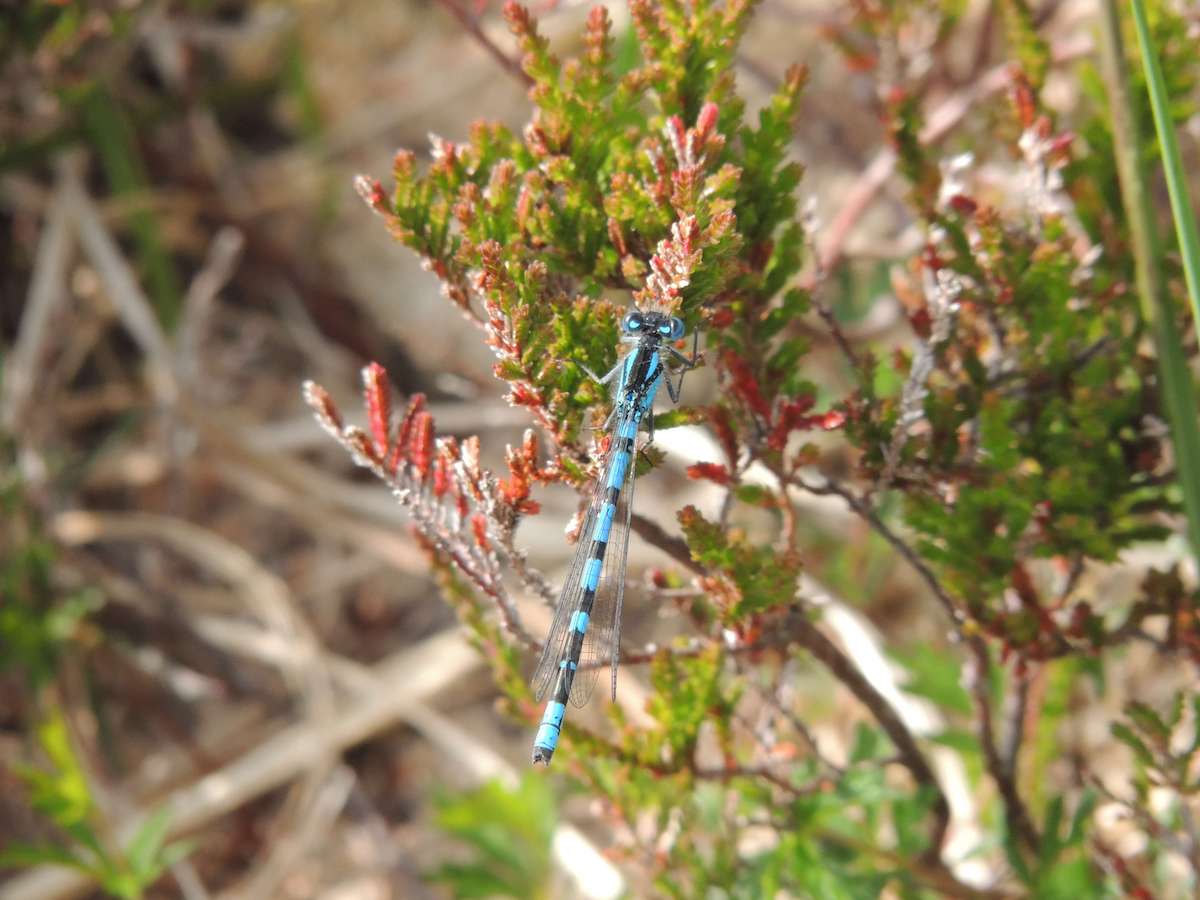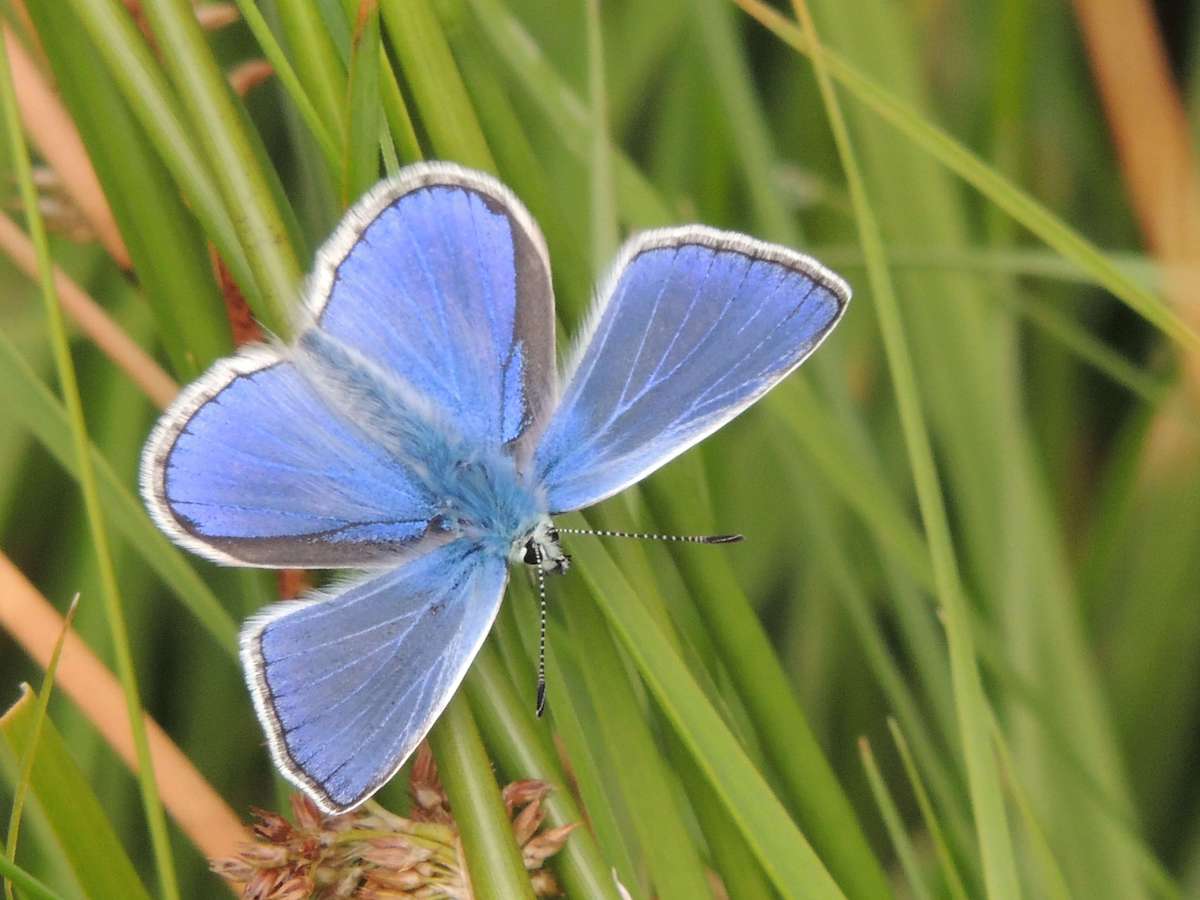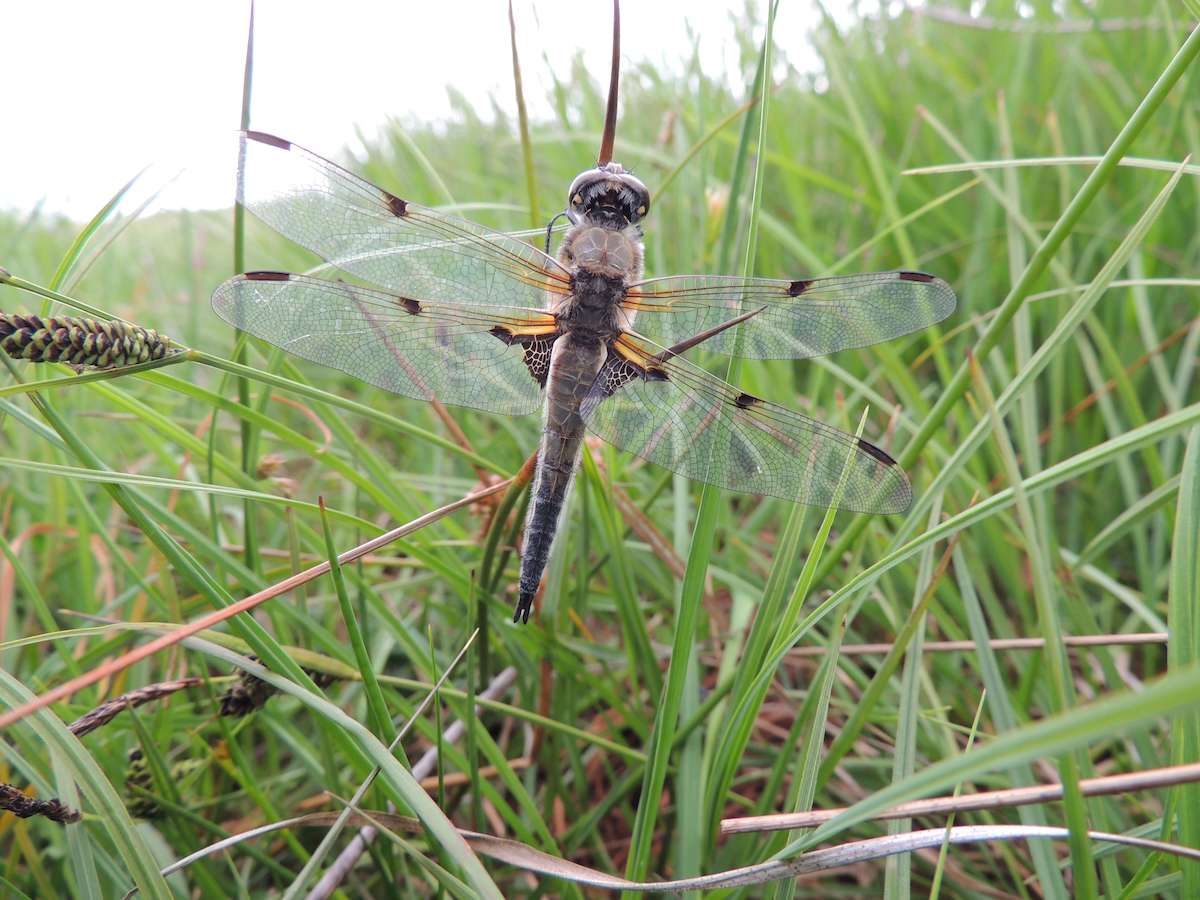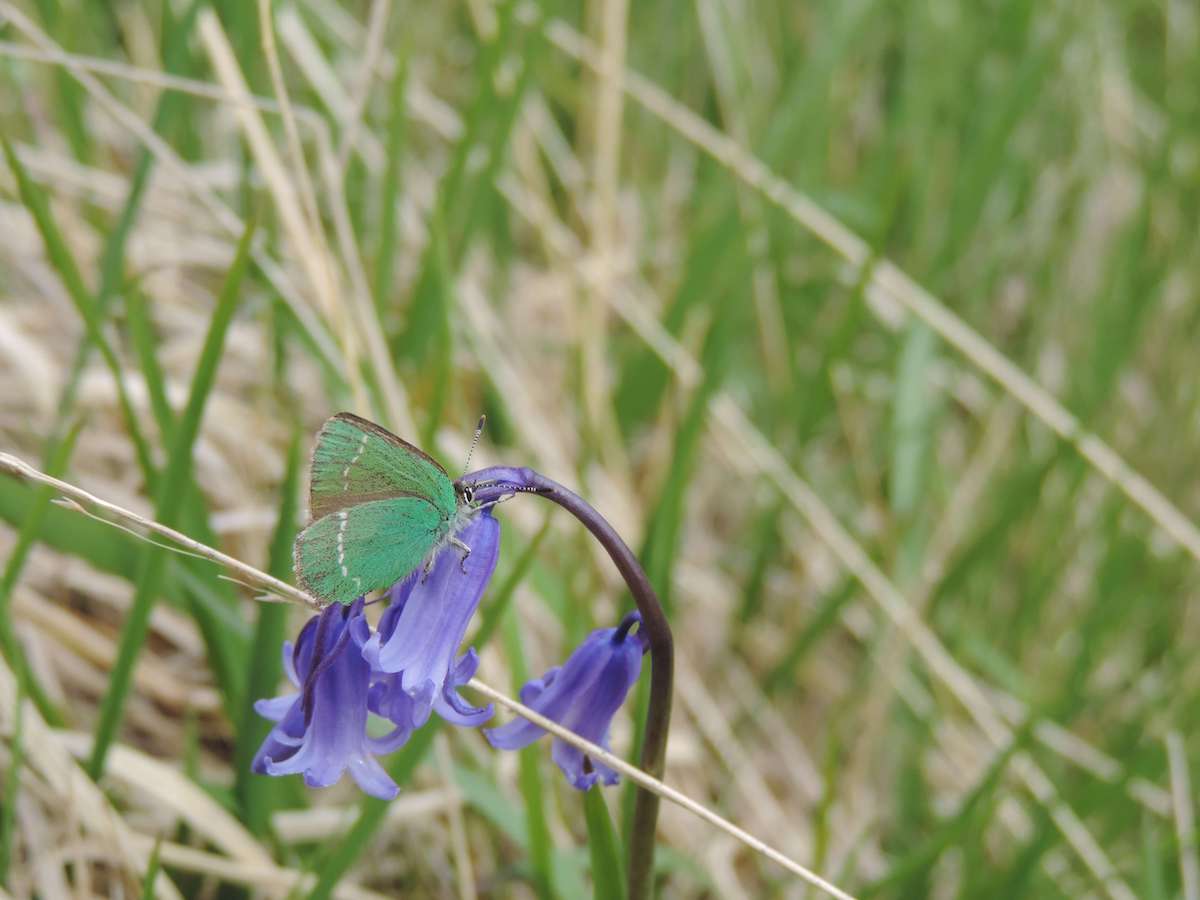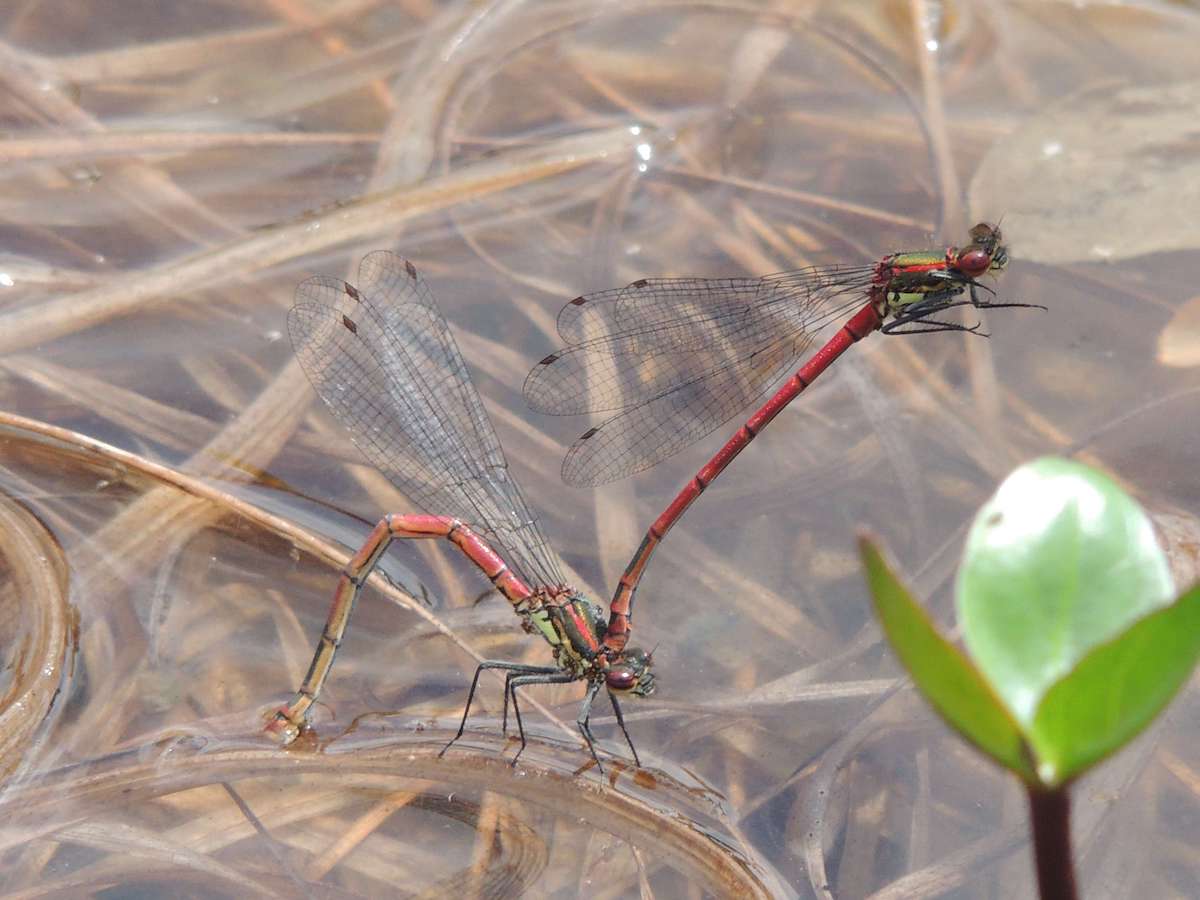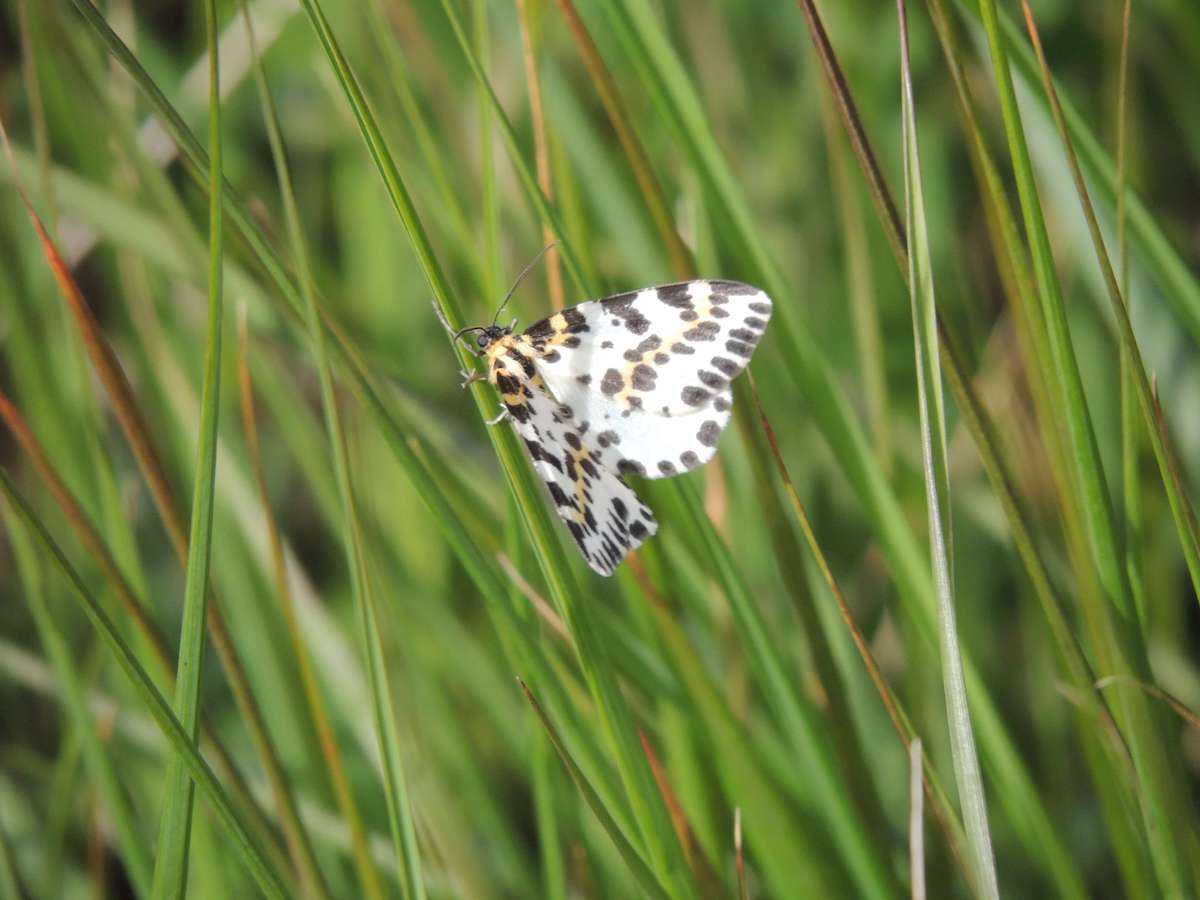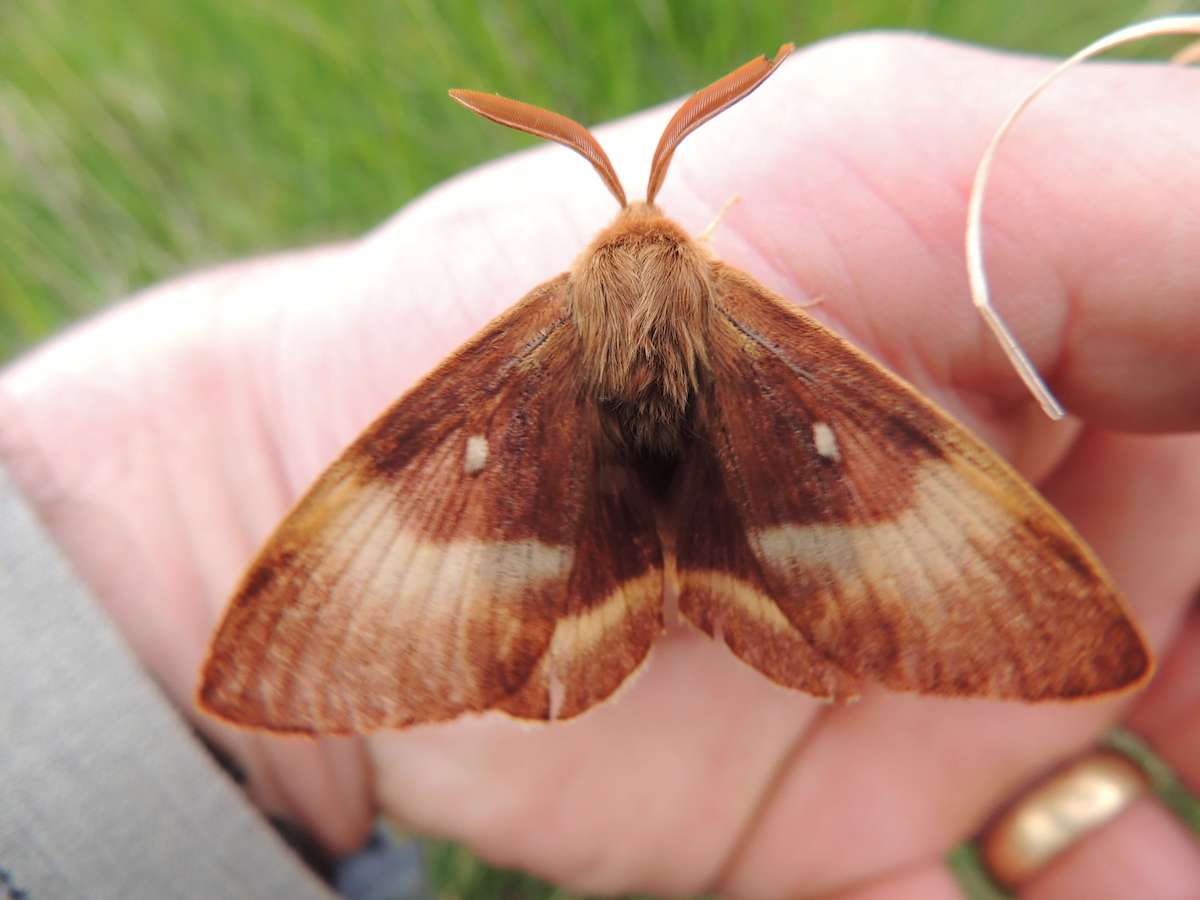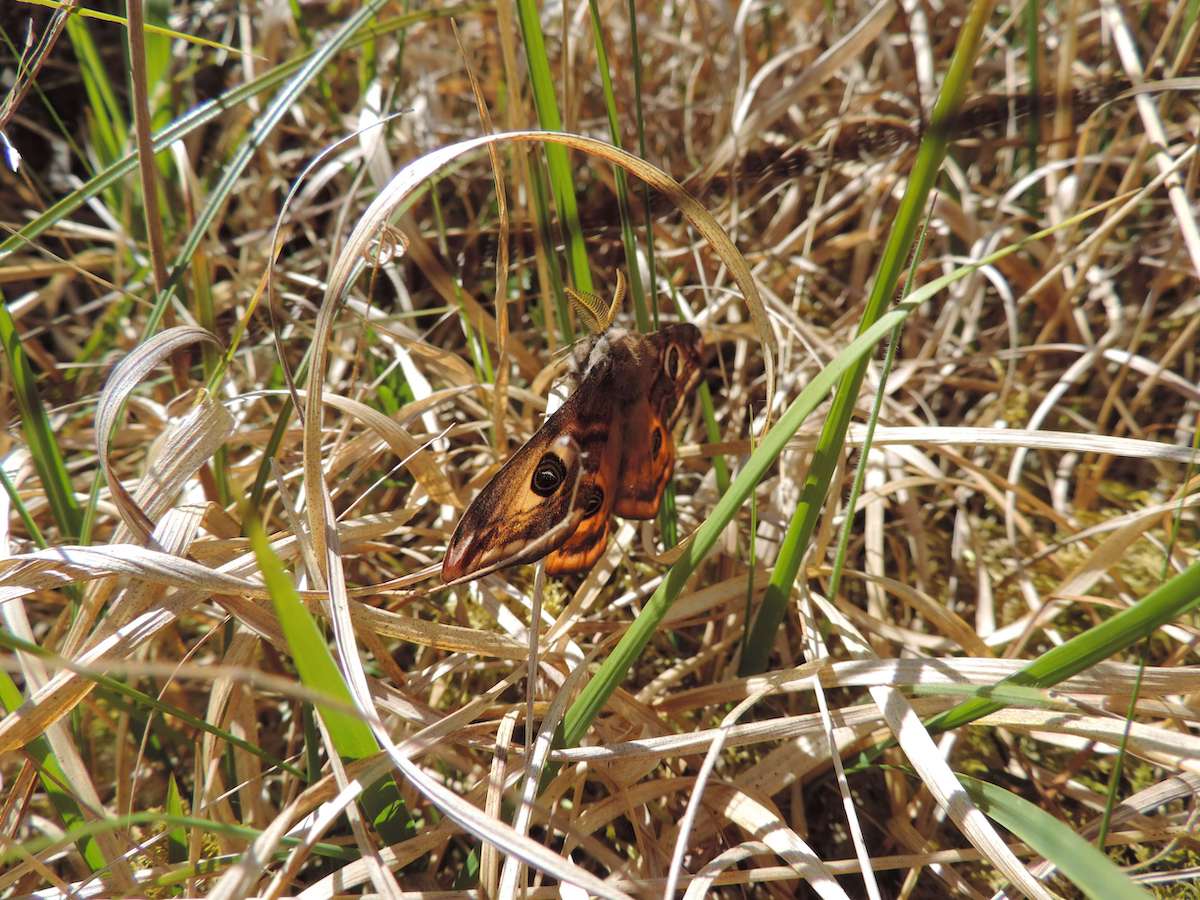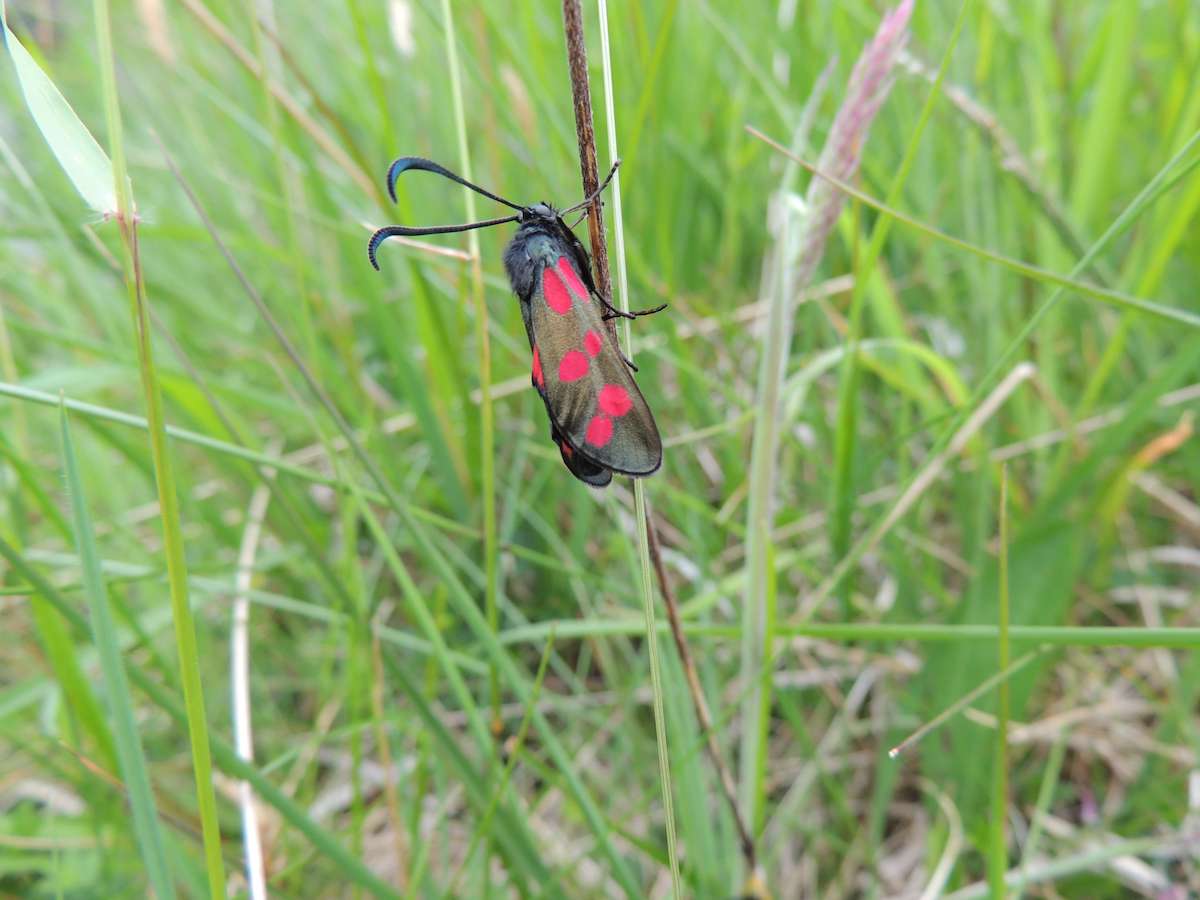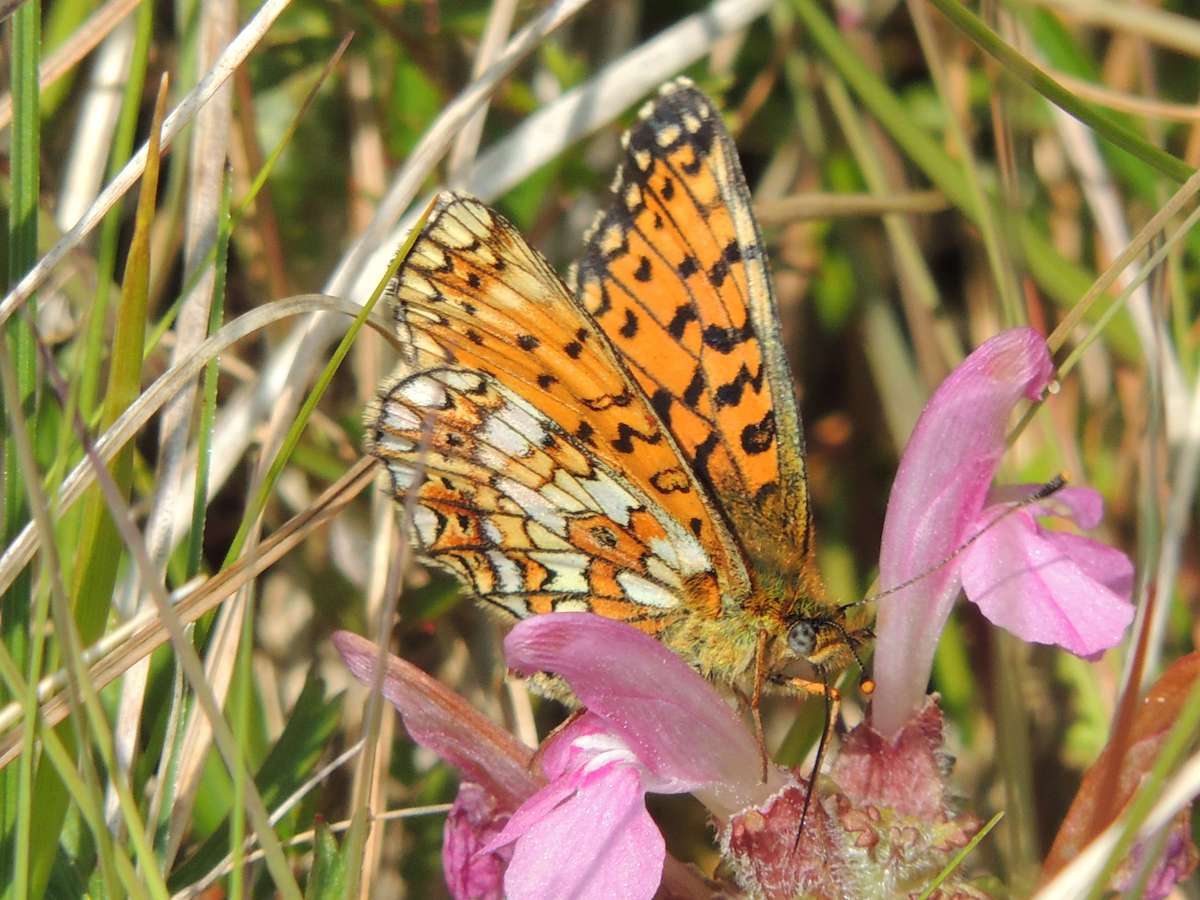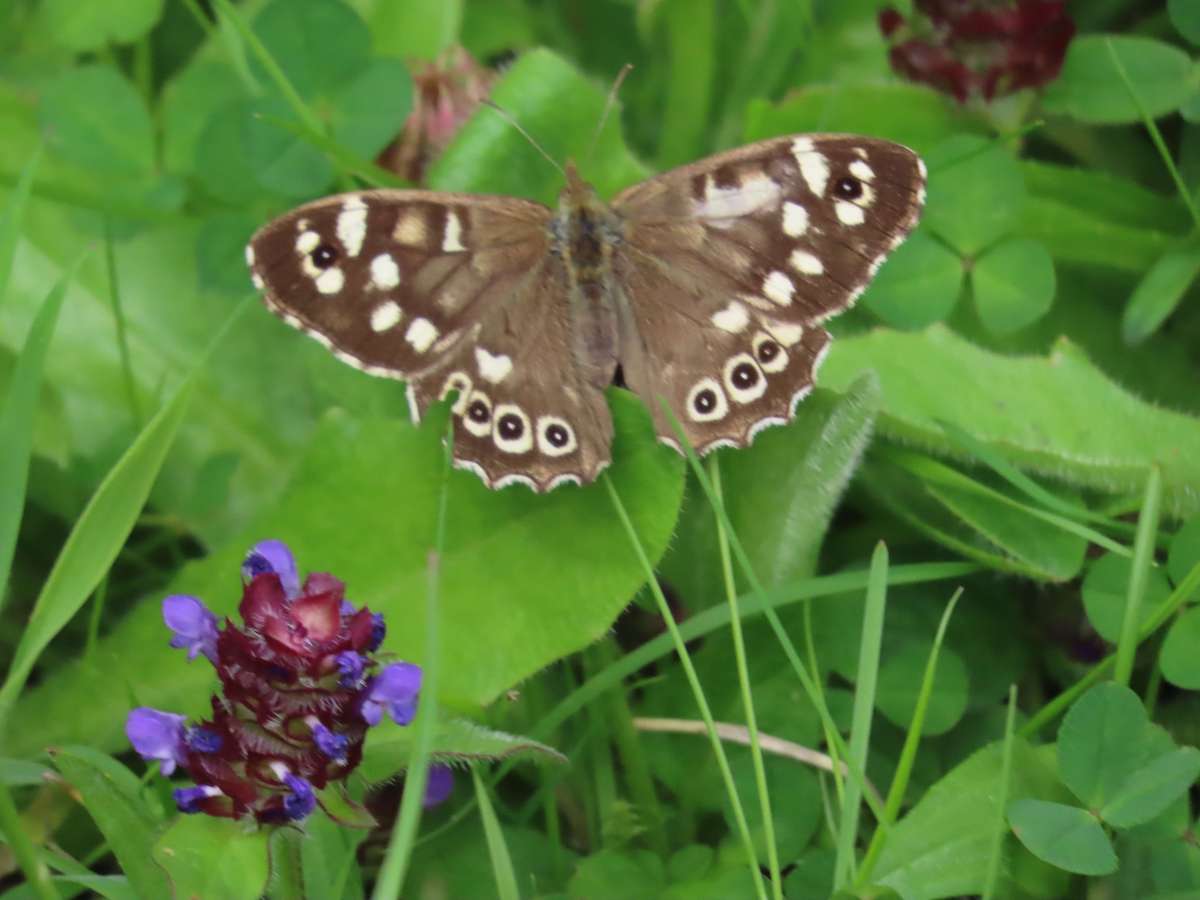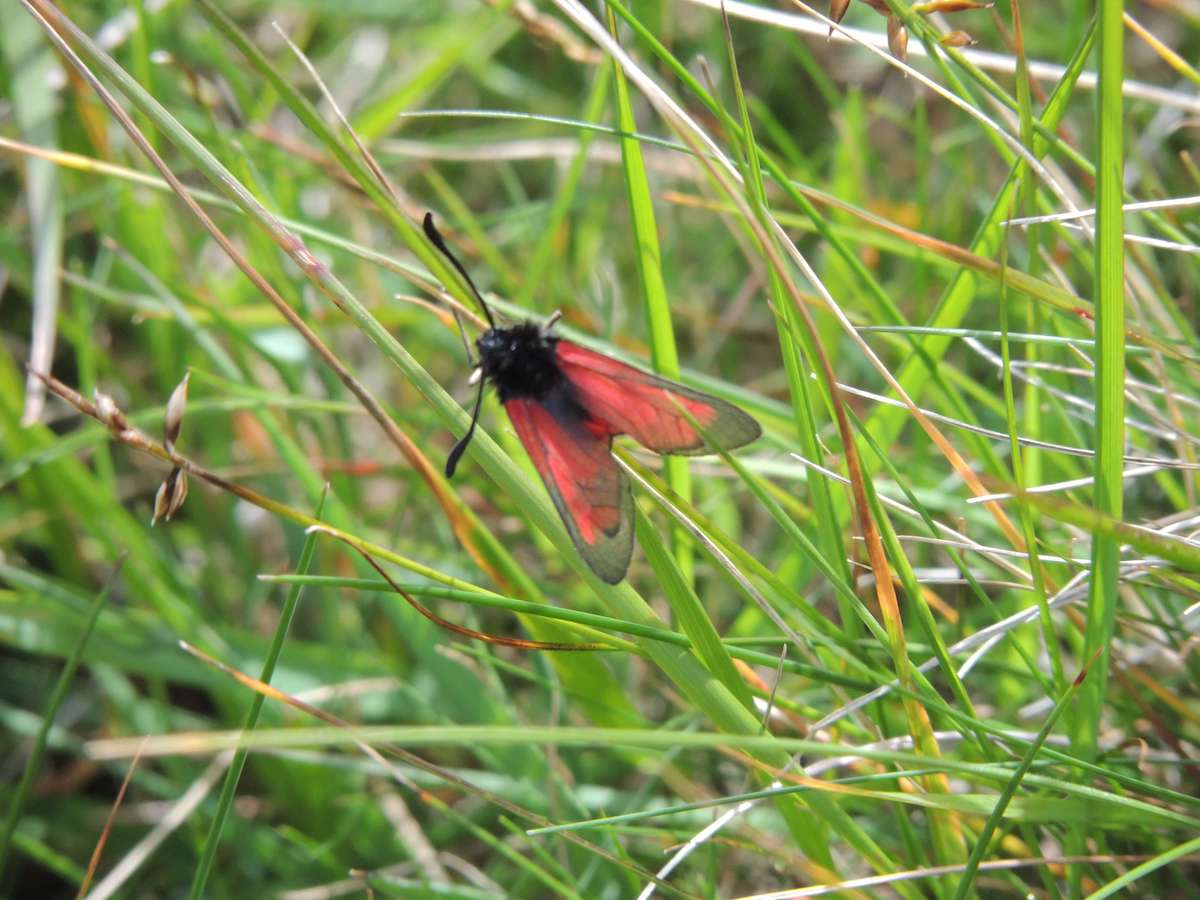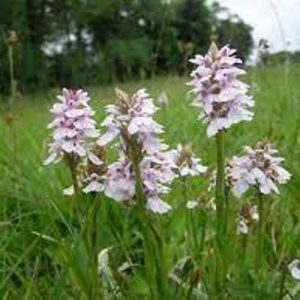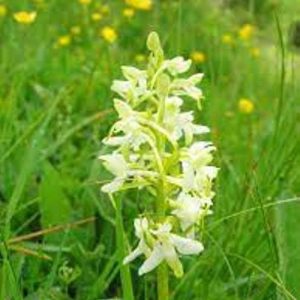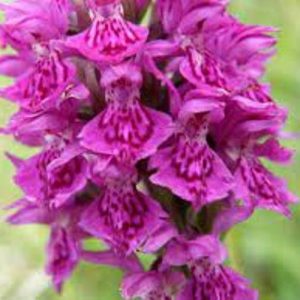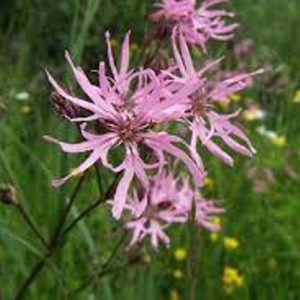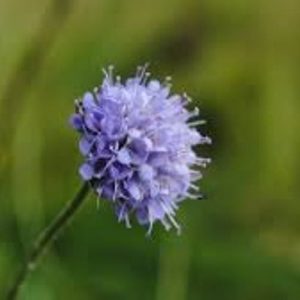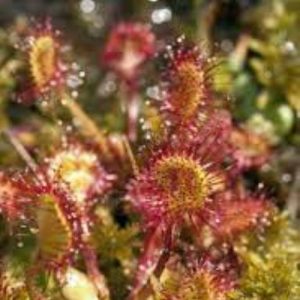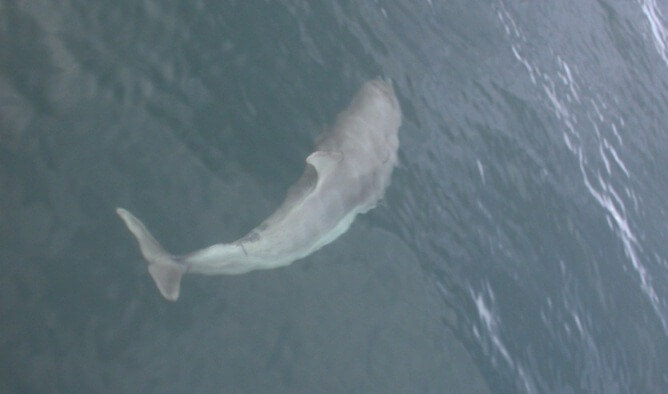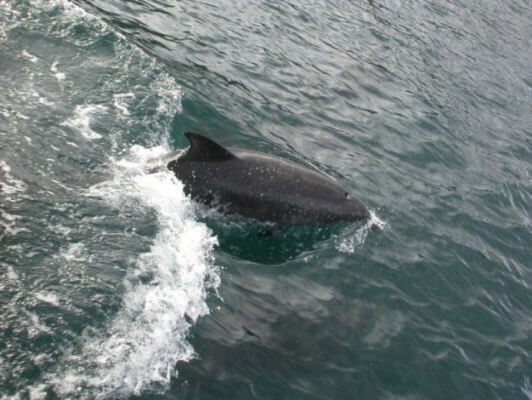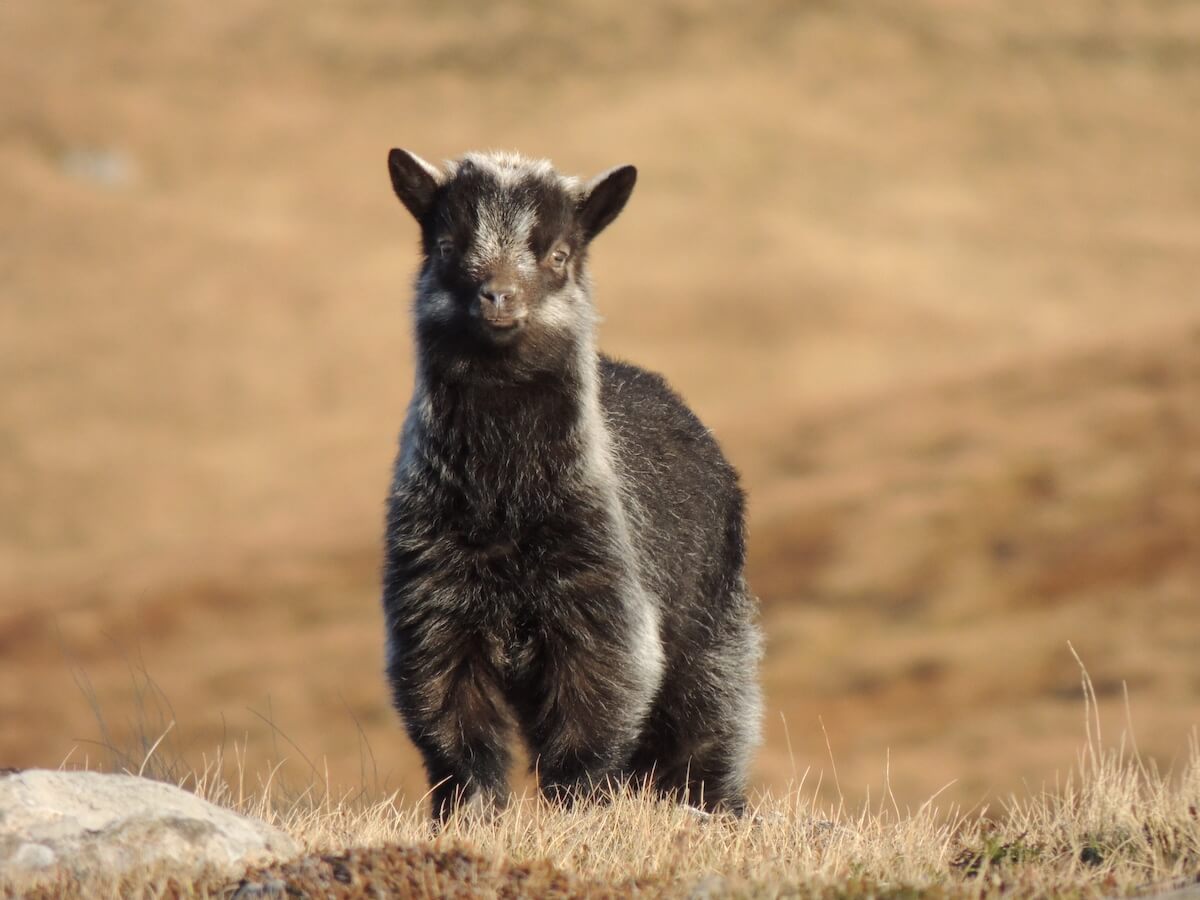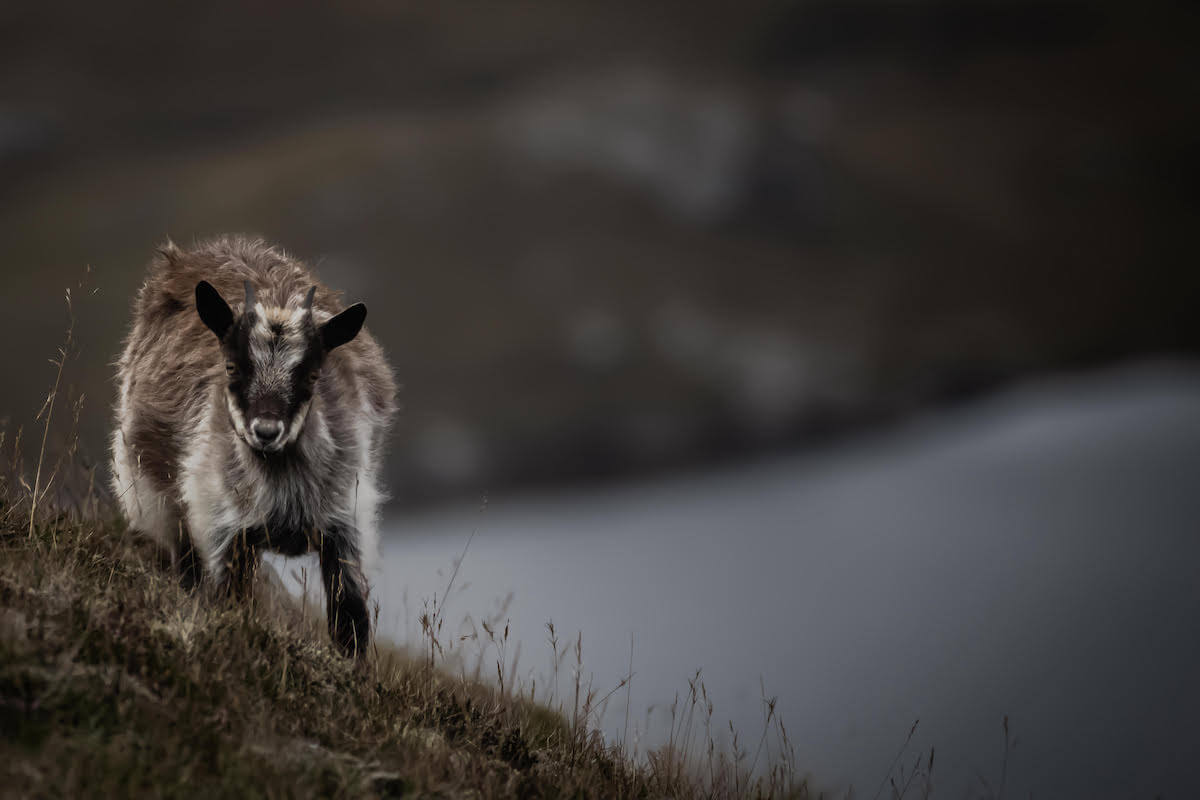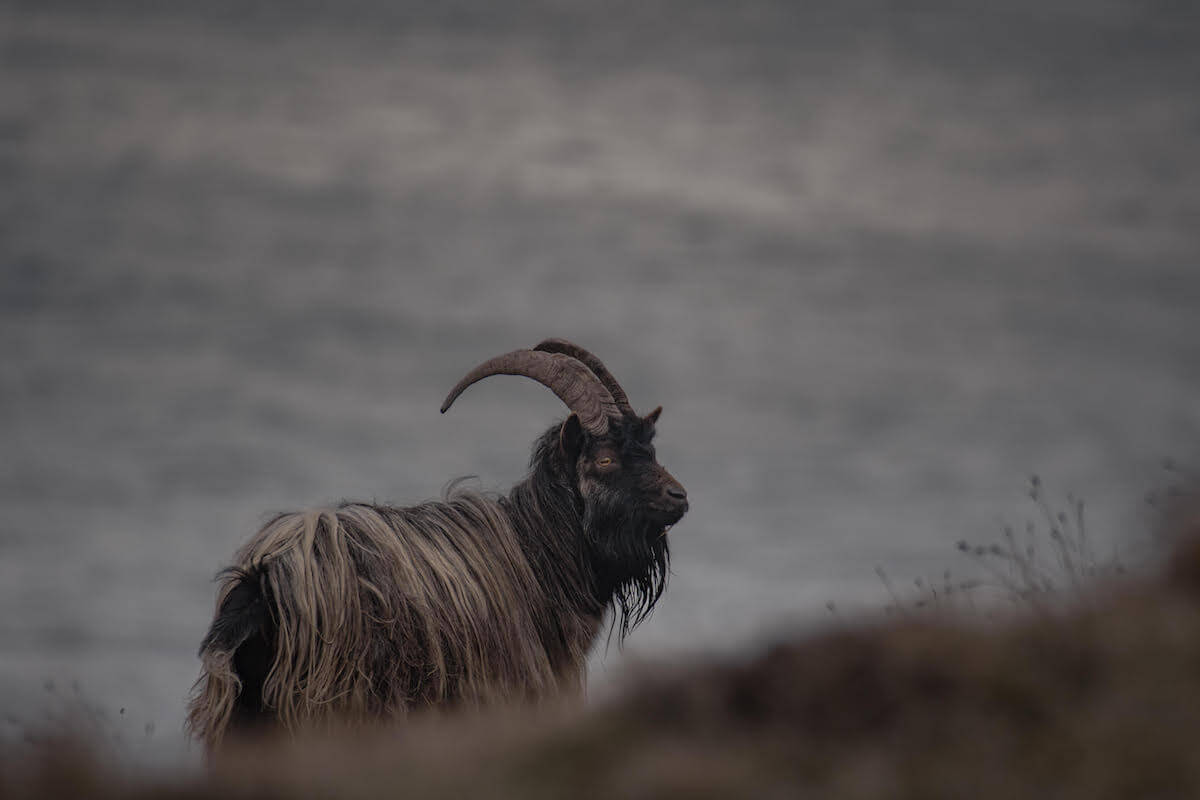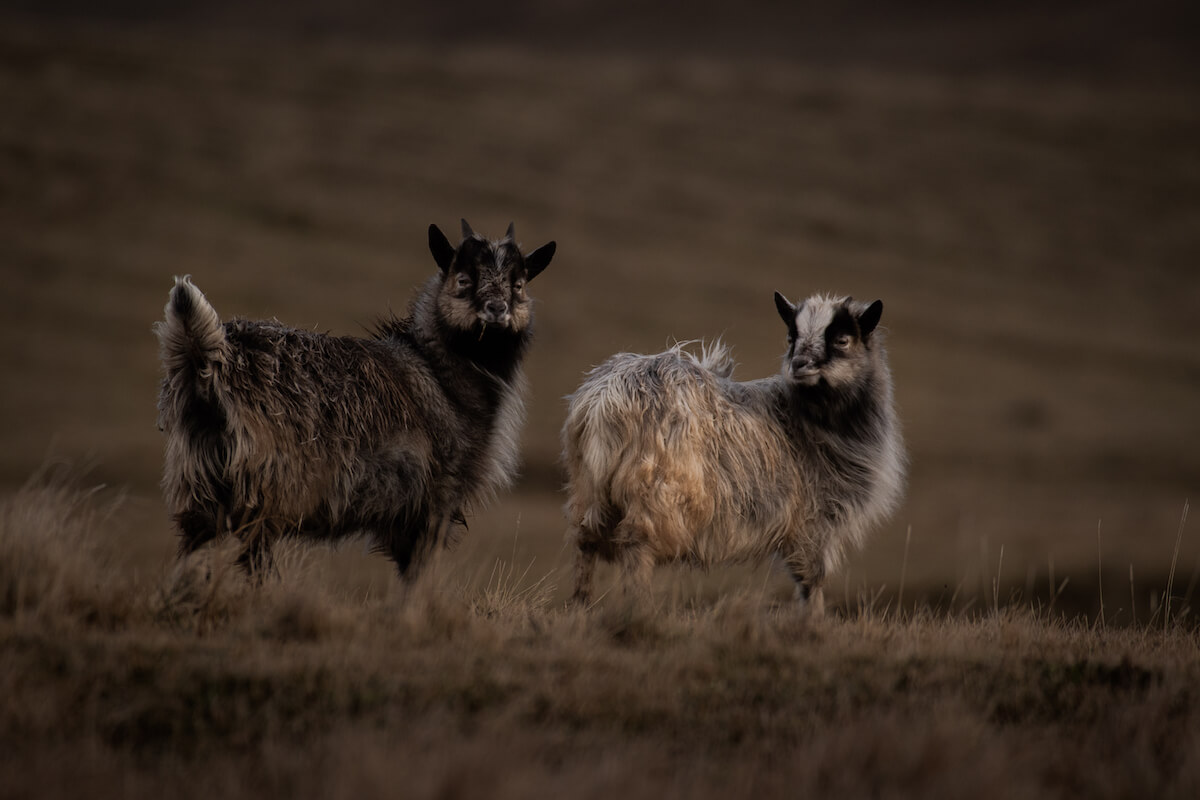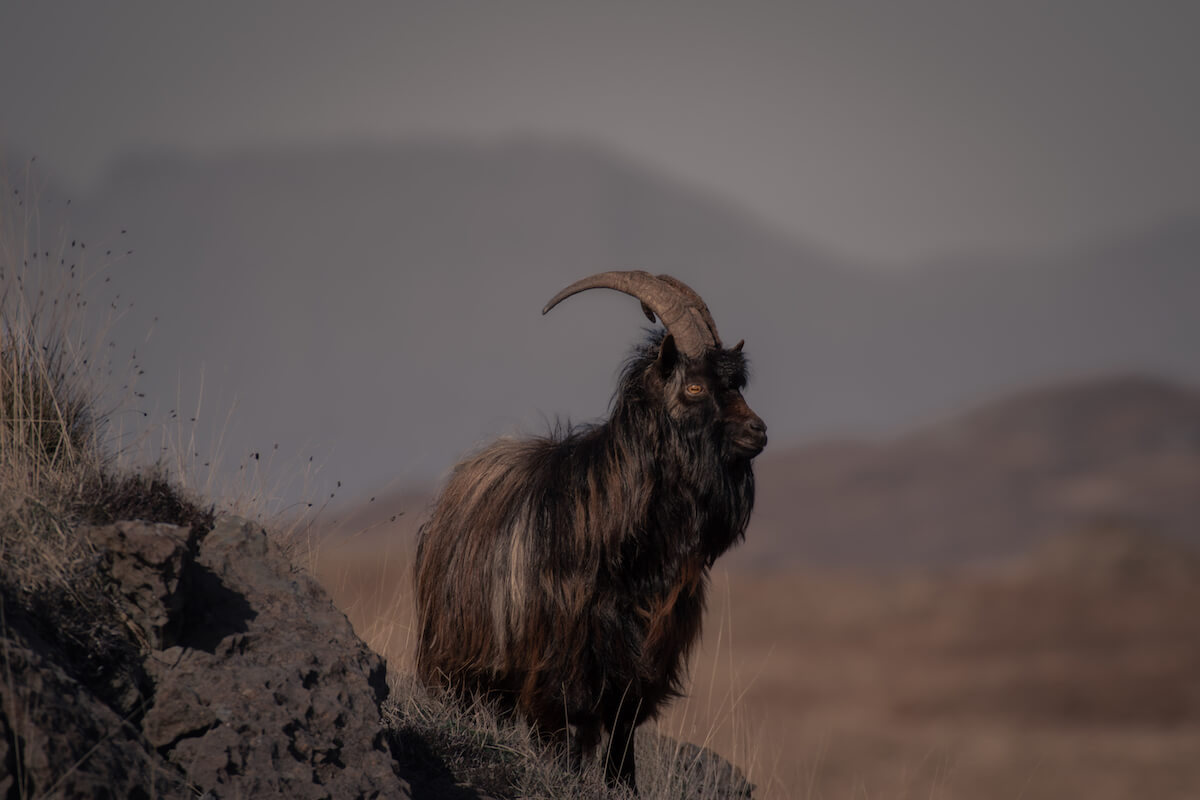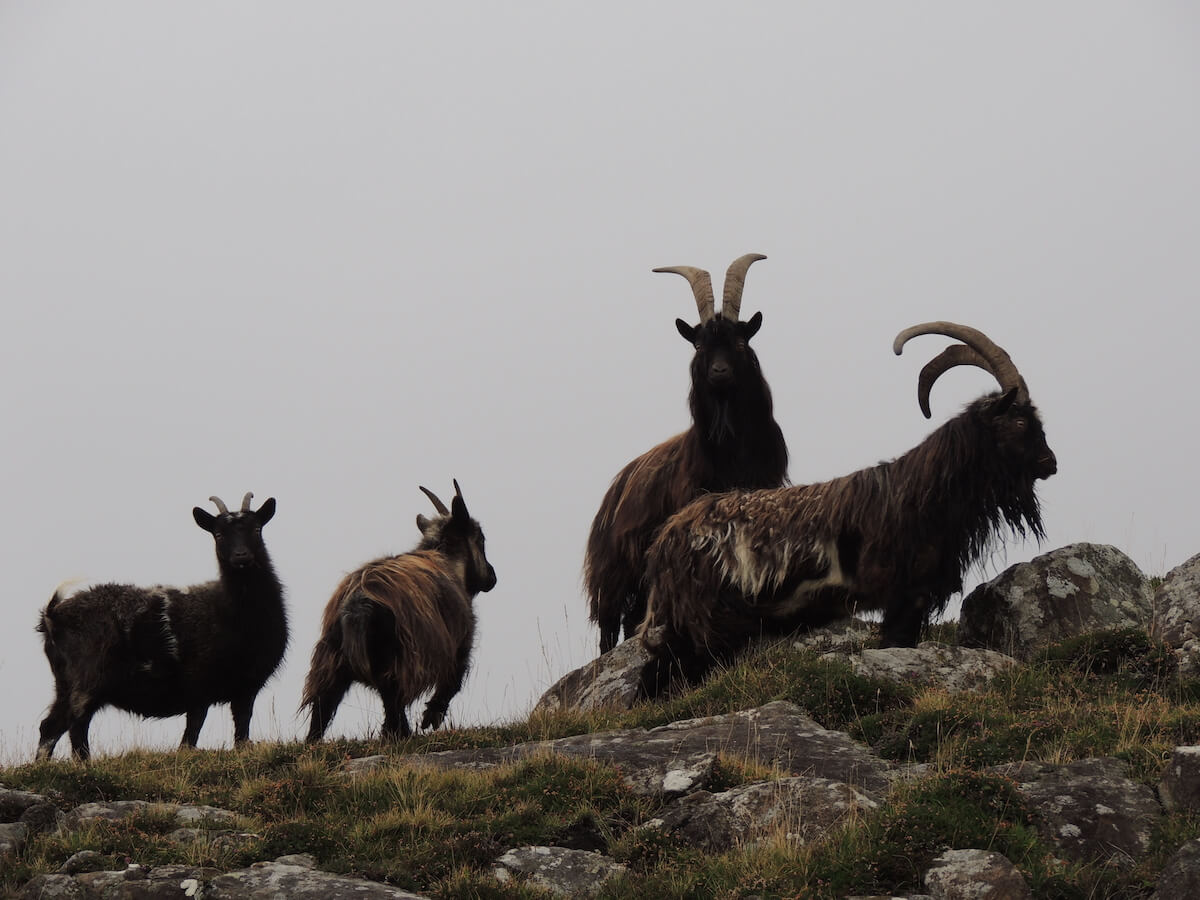Bird & Wildlife Watching
Although there are no specific areas set aside in Kinloch Villagefor bird watching, the Otter Hide in the southside woods, along the path just up from the ferry terminal is a good starting point. As you walk around Kinloch you never know what is going to appear where or when, so if you are a keen naturalist it is vital to keep your binoculars to hand. Otters and seals are often seen from the ferry terminal whilst waiting for the Loch Nevis to arrive and time spent sitting and looking around the village can often give some spectacular views of white-tailed (sea) eagle and golden eagle soaring overhead. Walking along the shore road and listening to the eider ducks, oystercatchers and curlew going about their daily routines is also a pleasure to the senses, along with watching our flocks of resident greylag geese flying in and out to feed.The Isle of Rum has outstanding opportunities for observing wildlife in its natural environment. As well as boasting one of the largest Manx Shearwater colonies in the world, Rum was the site of an ambitious white-tailed eagle reintroduction program and is home to 900 red deer, some of which are the focus of a long running research project, based at Kilmory.
In Kinloch, wildlife watching opportunities occur, in the most part, when least expecting them. Golden and white-tailed eagles are regularly seen soaring over Loch Scresort and otters often play at the ferry terminal as the boat manoeuvres in the bay. Dolphins occasionally follow boats into the bay, creating a spectacle for all.
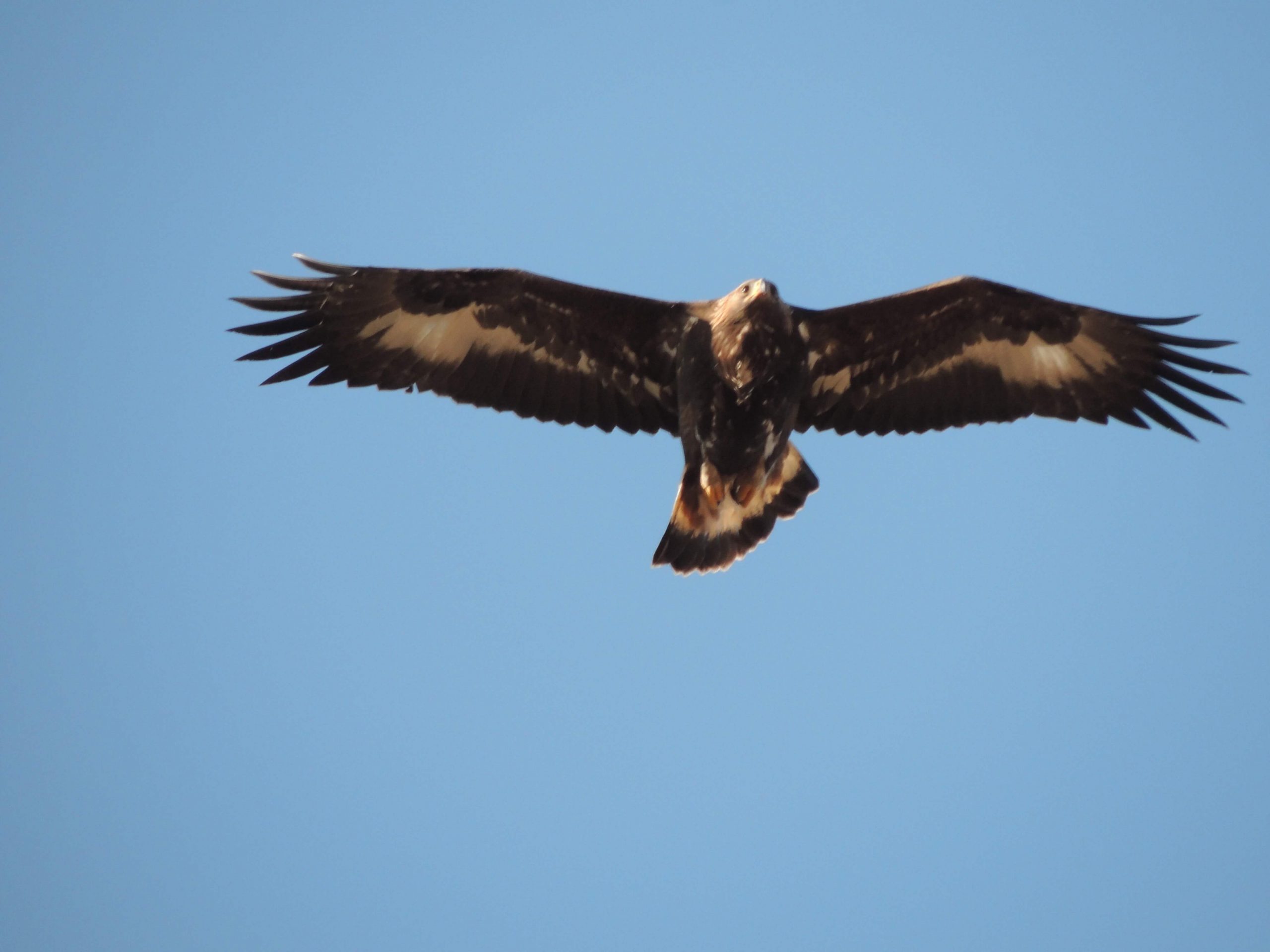
Golden Eagle
Birds
Rum has a very interesting diversity of bird species. Here is an introduction to some of them.
Manx Shearwater - A colony of over 60,000 pairs of this small, black and white seabird nest in burrows near the summits of the Rum Cuillin mountains. These amazing birds return in late March after spending the winter off the east coast of South America, usually to the same burrow they occupied the previous year. Perfectly adapted to life at sea, Shearwaters struggle to walk on land, so return to the colony under the cover of darkness as a protection from predators such as Golden Eagles. A single egg per pair is laid in May and the chick is fed by the parents until early September, when they leave to migrate south. The chick is left to find its own way down to the sea and then to the wintering areas. Manx Shearwaters are very long-lived and spend their lives travelling the oceans. Legend has it that the eerie call of the Shearwater was said to have caused the Vikings to think there were trolls living in the mountains of Rum, thus naming the mountain ‘Trollaval’.
White-tailed Eagle - Also known as the ‘Sea Eagle’, Rum hosted the first phase of the reintroduction of this species to Scotland. Between 1975 and 1985, 82 young birds from Norway were released. From the road on the way to Harris you can see the remains of the pens used for the birds during this project.There are now over 100 breeding pairs of this eagle in Scotland. They are regularly seen cruising over and around the coasts of Rum. It is impossible to say where on the island might be best to see these birds; the best advice is ‘look up’!
Golden Eagle - These magnificent birds can also be seen over the mountain tops and ridges of the island. Both eagle species can be seen year round on Rum. During the winter they feed on carrion, birds and rats and in the summer they hunt birds and the odd red deer calf. Again it is hard to say where in particular to see these birds, but having a break on a walk and looking up is always a good starting point.
Red Throated Divers - These beautiful birds nest on many of the hill lochs dotted across the island. They come down to the sea to feed and can be heard wailing their plaintive cries across the bays. These birds are protected by law, and must not be disturbed when nesting.
Guillemots, Kittiwake and Shags - These seabirds nest on many of the inaccessible cliffs around the island, the ledges bustling with activity during the breeding season.
Woodland species such as Chiffchaff, Willow Warbler and Sedge Warbler, all return in the late spring along with the Cuckoo who’s call can be heard across the island, to the delight of all.
- Cormorant
- Dipper
- Golden Plover
- Lapwing
- Grey Heron
- Great Skua
- Red Throated Diver
- Robin
- Sea Eagle
- Wren
- Wheatear
- Stonechat
- Starling
- Shearwater
- Shag
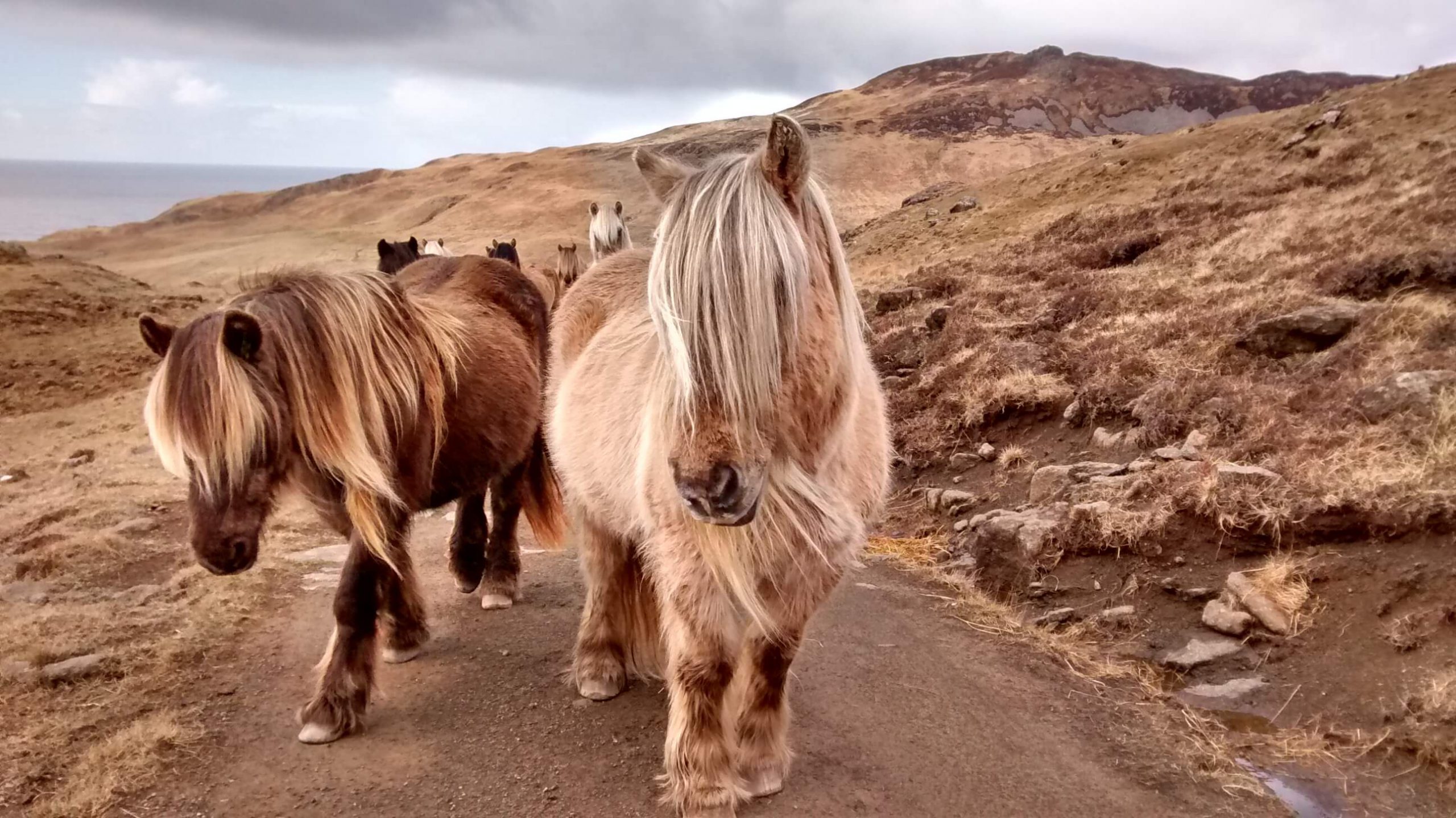
Rum Ponies at Harris
The Rum Ponies
The first record of these ponies on Rum dates back to 1774. In 1775 they were described by Dr Johnson in his “Journey to the Western Islands” as “very small but of a breed eminent for beauty”.
It is an island type of the Highland Pony breed that is native to the Highlands and Islands of Scotland and has been present since the last ice age.
Distinctive features of the island type Highland Ponies were diluted and lost from the mainland due to crossing with Clydesdales and other foreign breeds to improve stature for agricultural work.
Due to the isolation of the ponies on Rum during the onset of agriculture, the Rum ponies have remained in a form close to their original endemic type.
The Rum ponies have retained the qualities required for living on the island. They are extremely hardy and sure footed with exceptional temperaments. Rum holds the oldest Highland Pony stud in the world with currently 15 ponies on the island with these rare ancient bloodlines. The ponies are a working herd and are used during the deer culling season to extract deer carcasses from the hill. They are also used as a grazing management tool outside of the deer culling season when they live out wild on the hill and can be found grazing at Harris.
Being an island population these ponies are of particular importance to the Highland Pony breed. Should equine disease ever affect the mainland highland pony population, the Rum ponies would act as a reservoir for mainland breeders to rebuild stock and would therefore play a vital role in preserving the Highland pony breed.
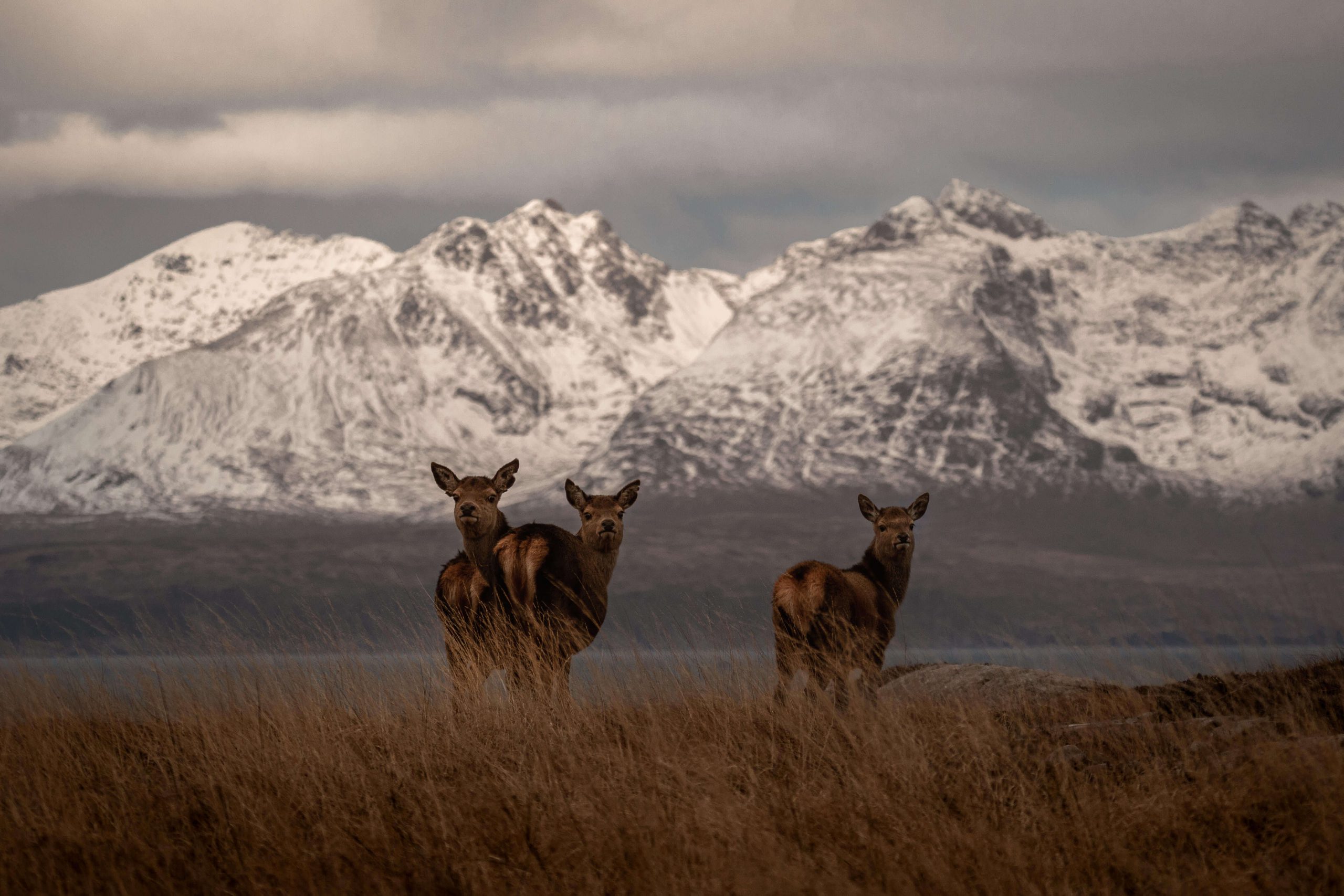
Red Deer Pueblo, her calf and her daughter Acoma, in the Kilmory study area
Red Deer
There are around 900 red deer on Rum. They live in hefted populations around the island. This means that the females, hinds, do not usually stray far from the areas that their mothers and grand-mothers used. Males, stags, move off at a young age and live in bachelor herds until the rut, where they either head back to their established rutting area or roam the island as they attempt to establish their own rutting area. The deer are managed by Nature Scot to protect particular habitat types across the island.
The Red Deer Project
In the north of the island, in Kilmory Glen and around the north side of Mullach Mor, the deer are part of an internationally respected long term large mammal research project. Since 1972, Kilmory Glen and Mullach Mor are exempt from the culling that takes place on the rest of the island. This is so the researchers from firstly Cambridge and now Edinburgh Universities can collect information concerning the behaviour, population dynamics and the causes of individual variation in reproductive success in both sexes.
Animals in the Kilmory study area are individually identifiable by the field researchers and have become habituated to them, allowing close observation.
From the mid ‘80’s blood or tissue samples have been collected from over 75% of the calves born each year in the study area, to look at the genetics of the animals, in particular the distribution of paternity and the fitness consequences of the genetic variation.
Currently the project is investigating the …
The Red Deer Project on Rum is now run by Prof. Pemberton from Edinburgh University. More information can be found on the project website and Twitter.
- Bobby
- Calidris
- Stag with antlers cast
- Clown00 and Hallival
- Hinds and calf
- Stag
- Wisdom11
- Stag
- Robin13
- Yogi
Highland Cows
A herd of 11 highland cattle are used to manage grassland habitats on the NNR. These hardy traditional cattle graze down the course rank grass species allowing a more diverse number of species of plants to flourish. The cattle can usually be found in Harris.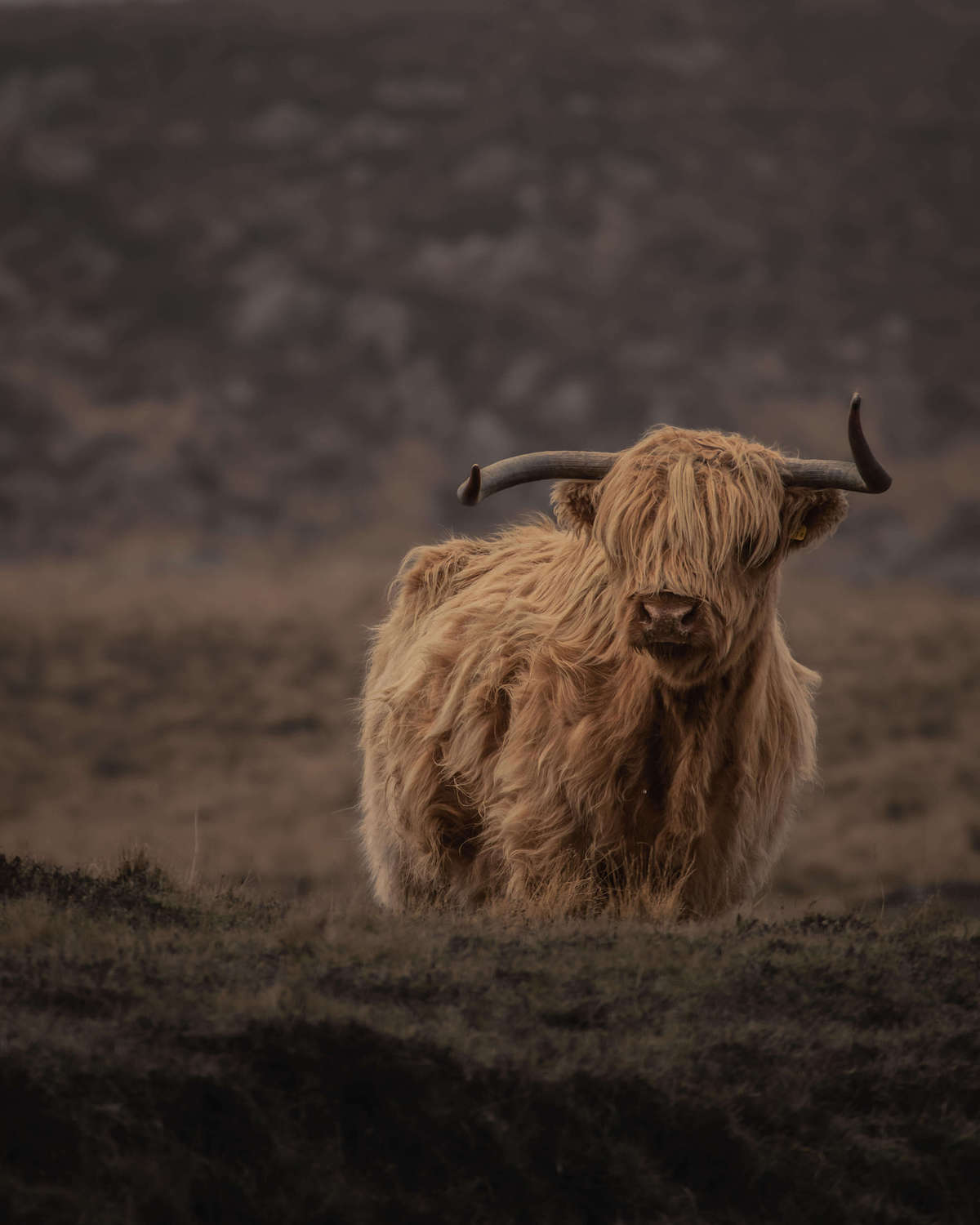
Highland Cow
Insects
Rum is a great place to come and see insects. The many lochs, burns and pools provide perfect breeding habitat for a number of species of dragonflies and damselflies. The large dragonflies can easily be seen hawking around the island in the summer months. The brightly coloured red and blue damselflies are much daintier and can be found on many small pools all over the island. Butterflies are common in the summer and include such species as peacock, red admiral and speckled wood plus the more specialised hill species such as small pearl-bordered fritillary and dark green fritillary. The night time moths are generally harder to see but the beautiful day flying six spot and transparent burnet moths can be found on well grazed south facing slopes in July.
Rum’s most famous insect is of course the midge. Millions of these tiny biting insects emerge from their hiding places on calm summer evenings and terrorise both locals and visitors alike forcing them to wear any number of ridiculous looking hooded garments and layers of foul smelling greasy midge repellents.
- Common blue damselfly
- Common Blue butterfly
- Four spotted chaser
- Green Hairstreak
- Large red damselfly
- Magpie moth
- Northern eggar moth
- Emperor moth
- Six spot Burnet moth
- Small pearl bordered fritillary
- Speckled Wood butterfly
- Transparent burnet moth
Plants
Due to the island's wet climate and peaty soils, Rum is not particularly good for a rich flowering plant community, and consequently only 389 native species have been recorded on the island (29% of the UK total). Nevertheless, the island is still awash with colour in the summer months and the orchids remain a visible favourite with visitors. The list includes common species such as heath spotted, fragrant and northern marsh orchids. Other notable species found on infertile habitats that have declined because of agricultural improvement and forestry in other parts of Britain includes the rarer bog, frog, small white and lesser butterfly orchids. All these species are protected on Rum and represent an increasingly valuable asset. In rugged areas of mountain and coastal habitat you may discover other nationally important flowering plants, including field gentian, arctic sandwort, pyramidal bugle, wood bitter-vetch, pillwort and alpine penny-cress.
Better represented are the ferns (44 species, 62% of UK total) and the bryophytes (the mosses and liverworts) with 469 species (45% of UK total).These thrive under Rum’s cool wet conditions, and together with the c.400 species of lichens form dense ground mats or hang from trees and rocky outcrops along humid ravines and woodlands, and contribute to what some call the temperate rainforest. Like a rain forest, the diversity is quite amazing, and many common species such as greater fork-moss, tree lungwort, common tamarisk-moss, maidenhair spleenwort, little shaggy-moss, common polypody, slender mouse-tail moss, greater whipwort, common striated feather-moss are all in great abundance in the immediate vicinity of Kinloch Village. Rare species found on the NNR include the nationally scarce black-tufted moss and the skye bog-moss which is only found on Rum, Harris and Skye.
Approximately 900 species of fungi have also been recorded on the island with the primary diversity observed from the semi-unimproved grassland. This habitat supports 25 species of the colourful waxcap fungi, and includes internationally scarce species including the goblet, spangle, earthy, slimy, nitrous and fibrous waxcaps.Other scarce species include the violet coral and olive earthtongue. Edible species such as the cepe Boletus edulis and chanterelle Cantharellus cibarius can be found around Kinloch; as it doesn’t lose its nutty flavour when dried, the cepe is considered one of the best edible fungi. The classic red and white ‘fairytale’ mushrooms called fly agaric Amanita muscaria are also relatively common around Kinloch during early September, but can be dangerous as they produce hallucinations.
- Heath spotted orchid
- lesser butterfly orchid
- northern marsh orchid
- ragged robin
- devil’s-bit scabious
- sundew

Basking Shark
Sea Life
The waters around Rum and the other Small Isles are rich in sea life. Marine mammals include Minke Whale, both common and grey seals, common and bottlenose dolphins, harbour porpoises and if you are really lucky, a brief glimpse of Orca (killer whale). Later on in the summer basking sharks can be seen from both land and from the ferry.During the summer months large rafts of Shearwaters can be seen as they go about their daily business before returning to the colony on Hallival under the cover of darkness to feed their chicks.
Otters are common around the coasts of Rum, often seen from both the ferry terminal and the Otter hide, just a 10 min walk from the pier. Another species to always have your binoculars and camera ready for.
Below the waves live a vast array of creatures, thriving in the diverse habitats from lush green laminarian kelp forests, to the crashing turbulent waters around our cliffs. Kelp forests, which consists of large brown seaweeds, such as oarweed, cuvie and dabberlocks, have been described as the Scottish equivalent of the tropical coral reefs providing a three-dimensional living space for many organisms, from starfish and sea anemones to sponges and sea squirts.
Except by a small number of sport divers and keen enthusiasts, the wonders of our underwater coast surrounding the island go relatively unexplored. Below the waves lives a vast array of creatures, thriving in the diverse habitats from lush green laminarian kelp forests, to the crashing turbulent waters around our cliffs. Kelp forests, which consists of large kelp plants (large brown seaweeds really) such as oarweed, cuvie and dabberlocks, have been described as the Scottish equivalent of the tropical coral reefs as they provide a three-dimensional living space for many organisms, from starfish and sea anemones to sponges and sea squirts. And here in these rich feeding areas, European otters and black guillemots forage for fish and crabs. You can get a glimpse of this underwater world from the shore if you peer into any rock pool (Harris is especially good); here you will see a variety of animals, some of which cannot survive drying out at low tide.

Basking shark
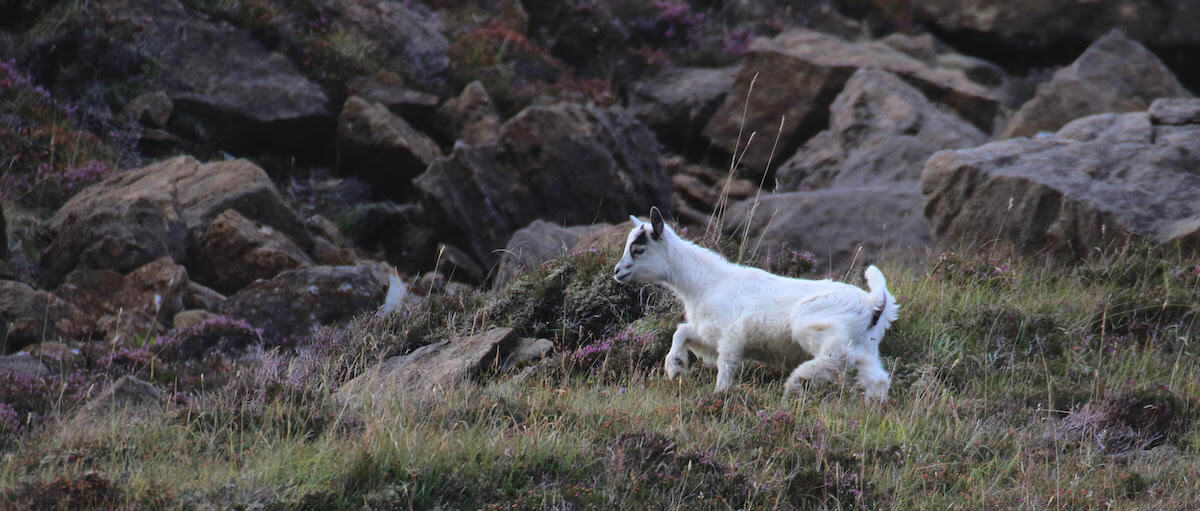
Goats
There are approximately 230 feral goats on Rum. The main grouping of them are at Harris in the west, the southern cliffs and Glens Guirdil and Shellesder in the north-west. The goats frequent the rocky shorelines feeding on seaweed and the short cliff-top grasses.
The Rum goats are descended from those owned by the pre-clearance human inhabitants. Apparently their fur was collected and sold for wig making.
During the Bullough years, attempts were made to improve the stock for stalking purposes and several introductions were made. The Rum goats are unusual because they breed twice a year and it is quite possible for nannies to have kids in both January and August.

